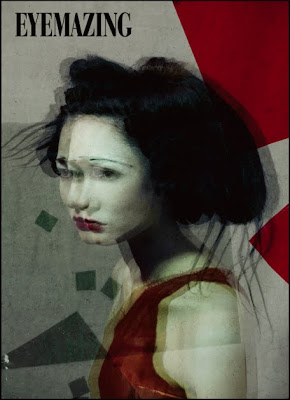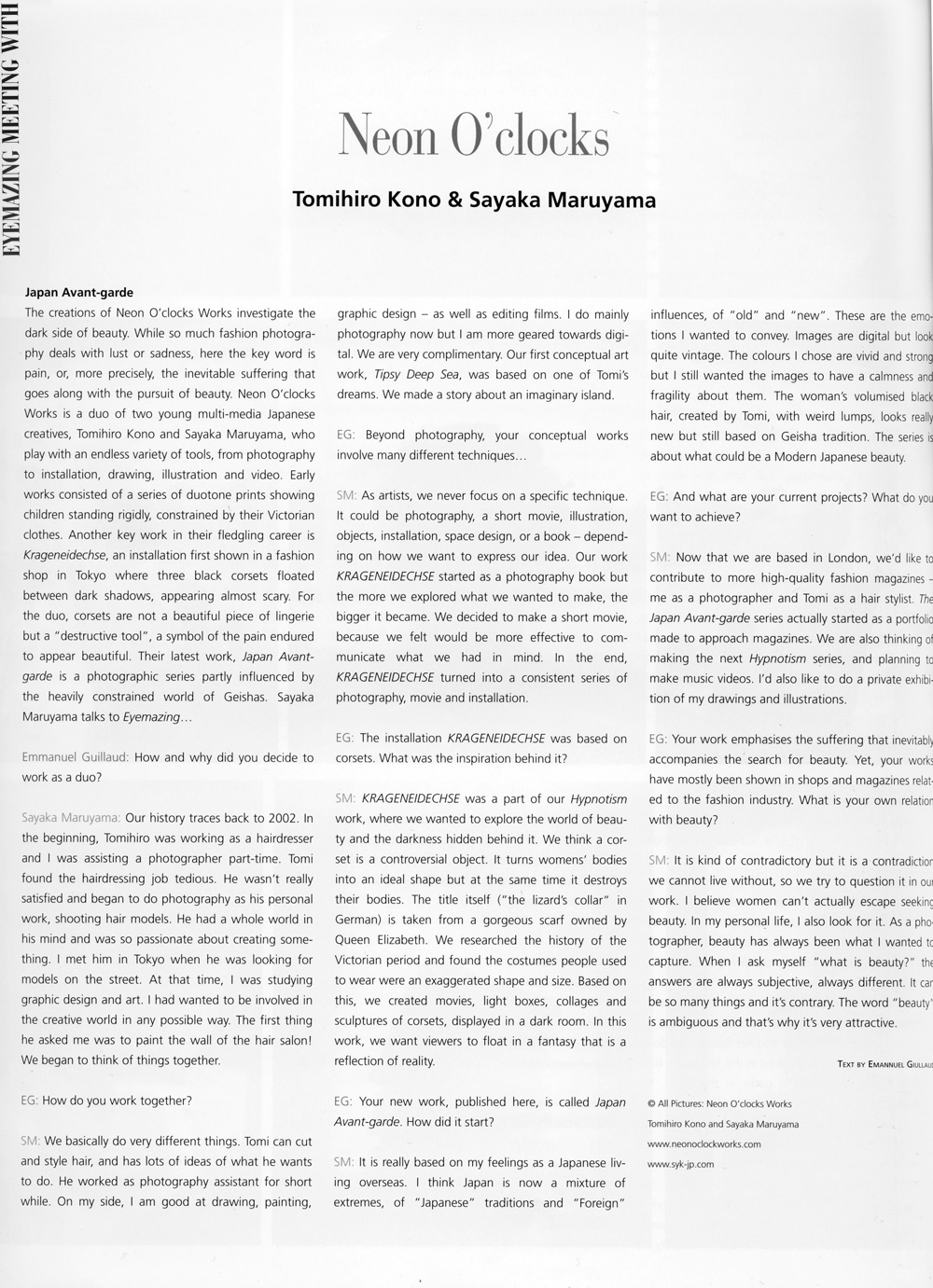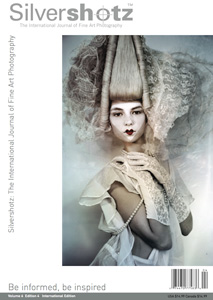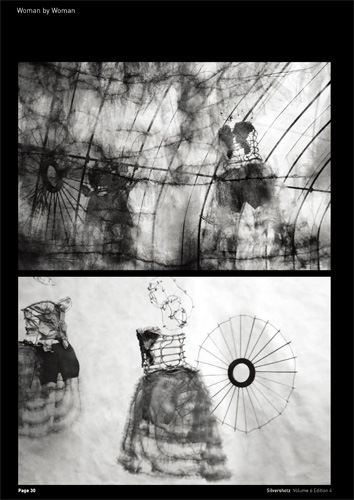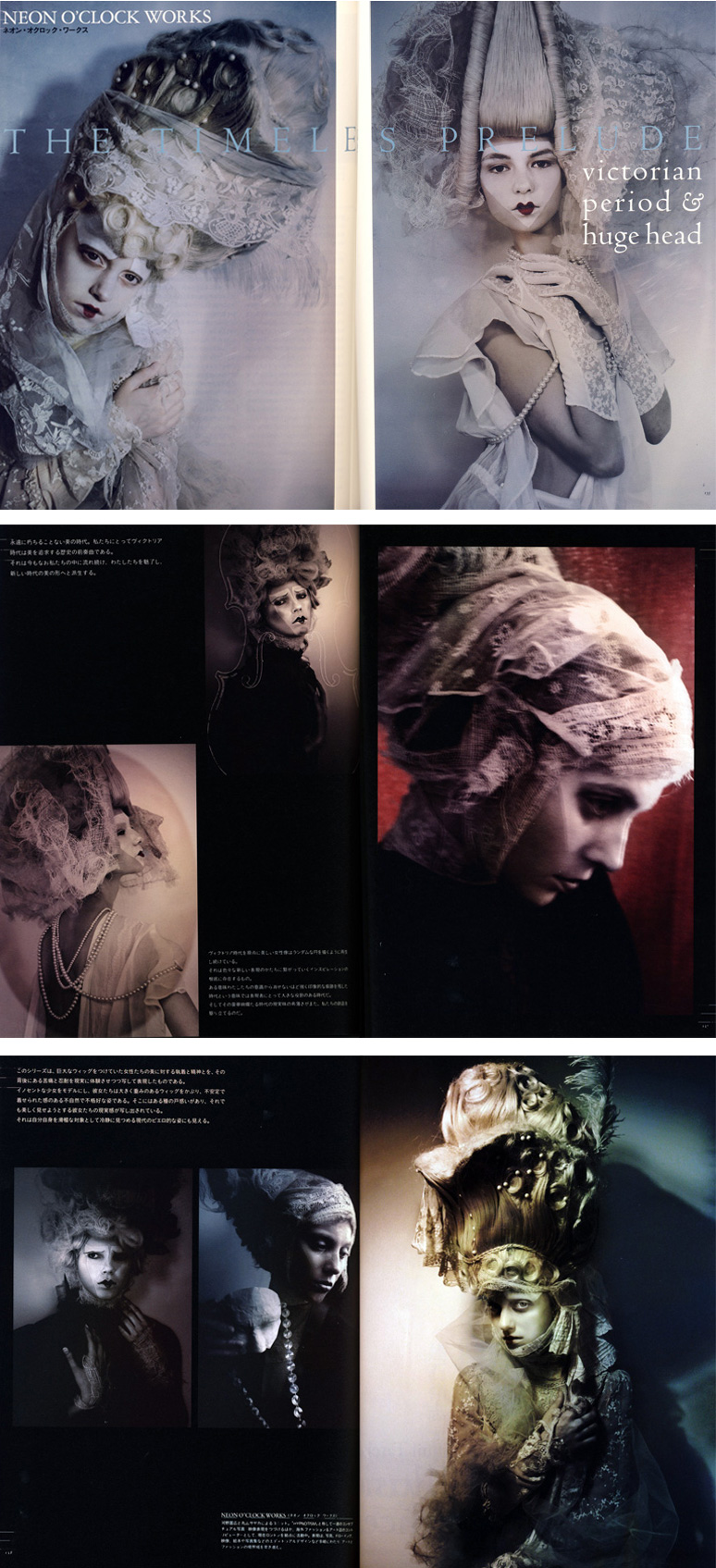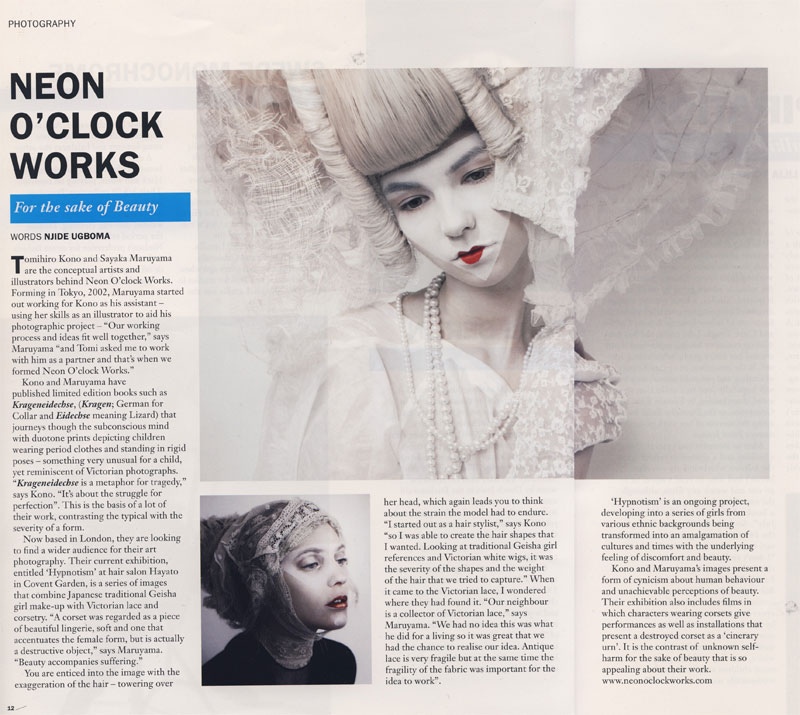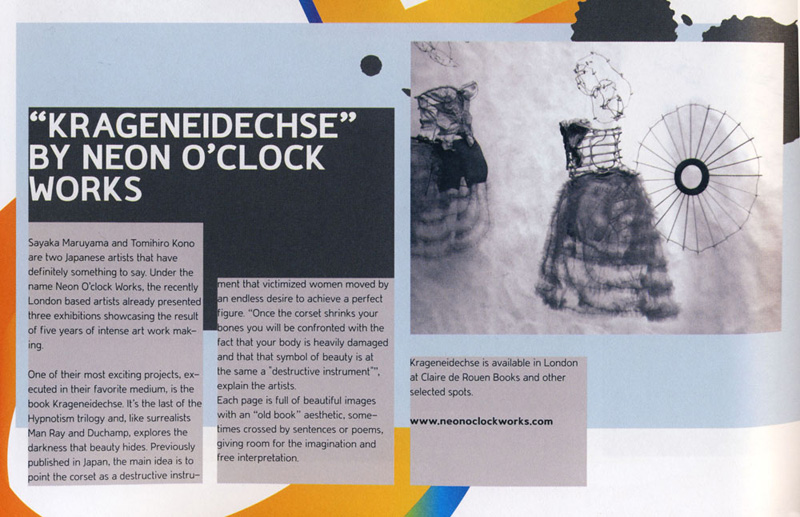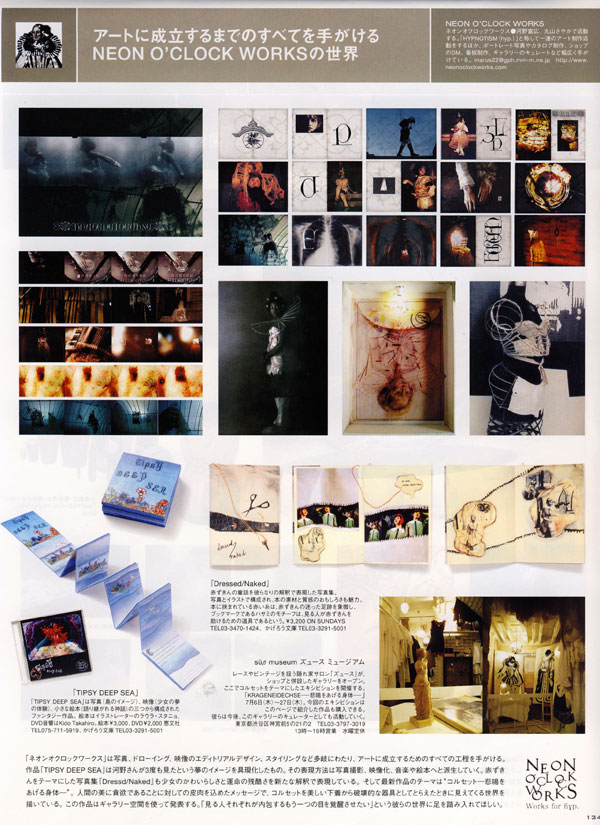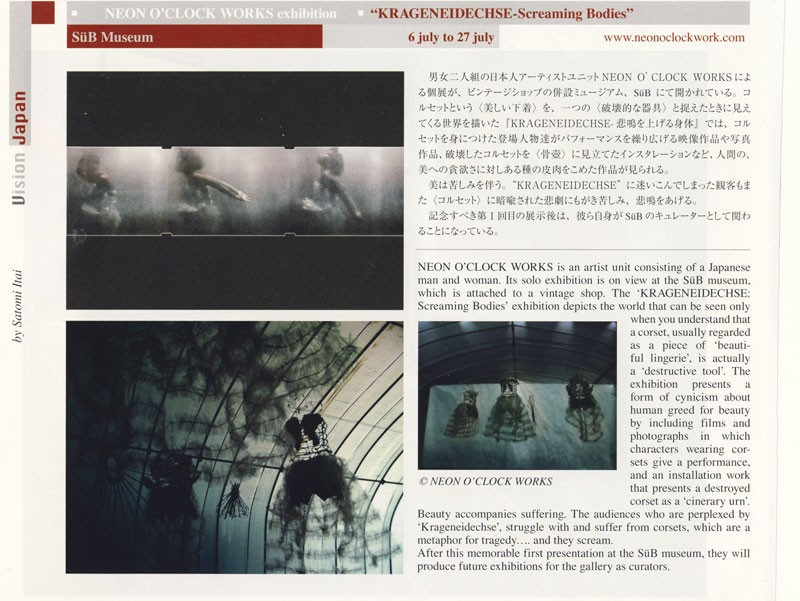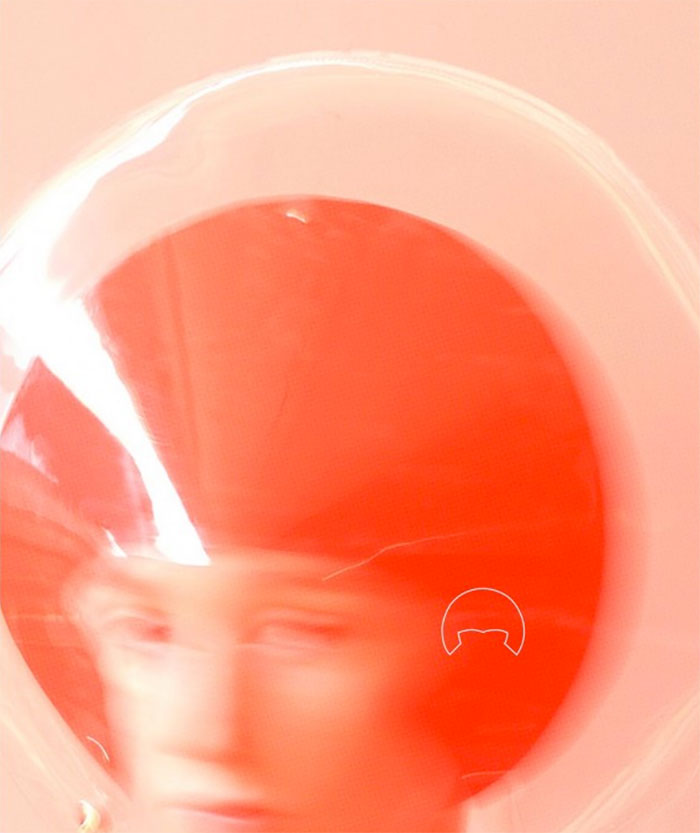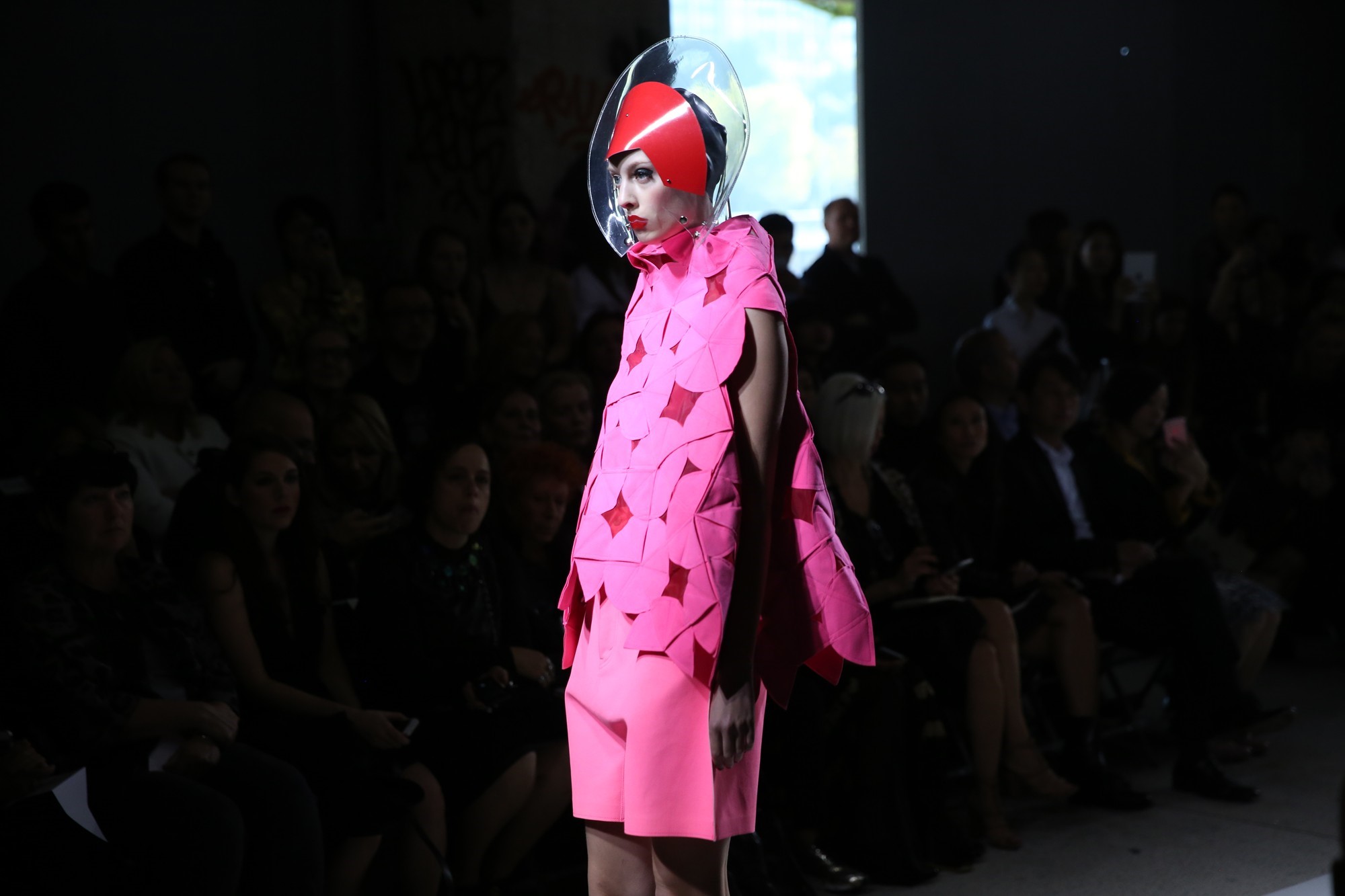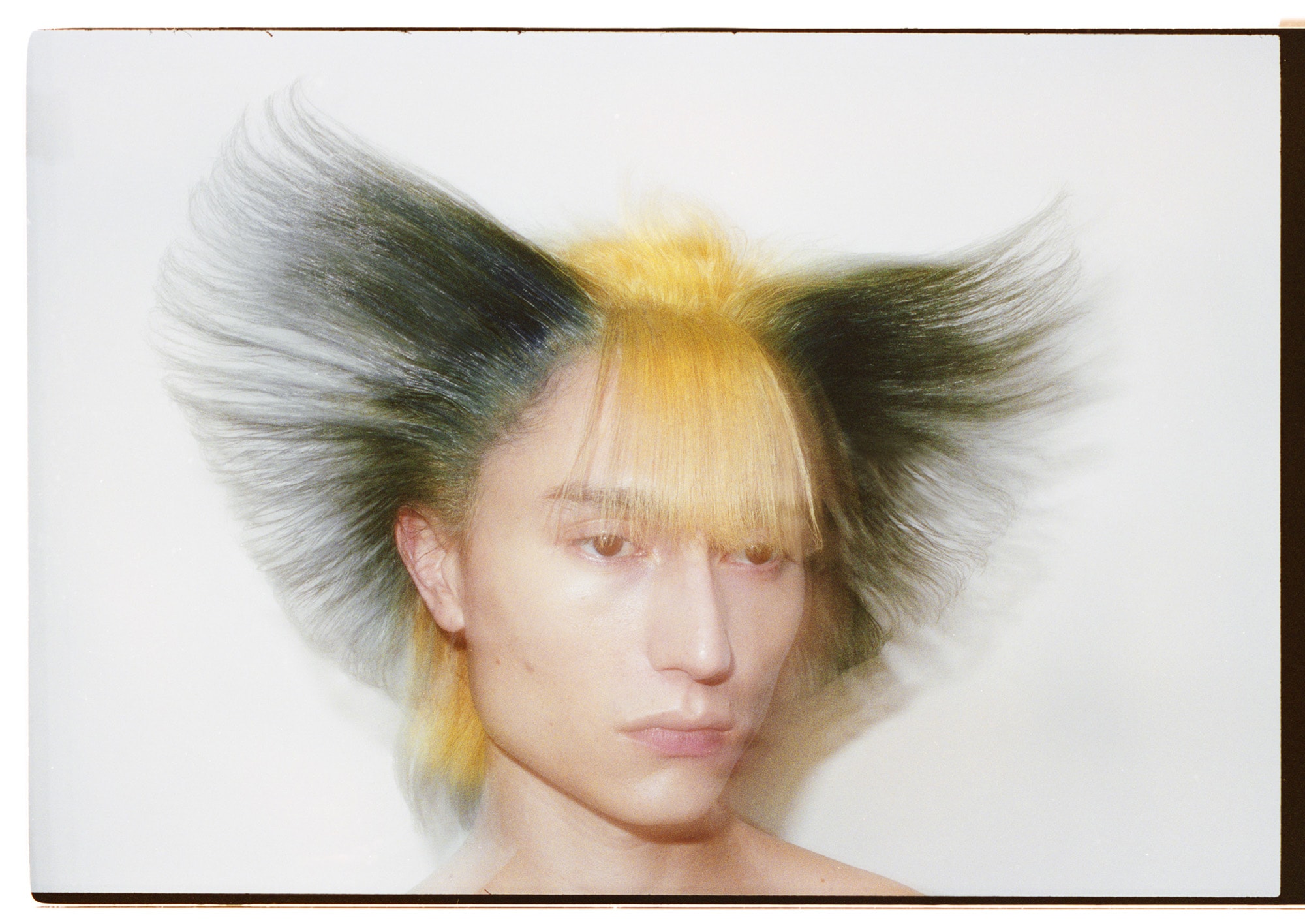
Tomihiro Kono’s latest book Personas 111 is built on a deceptively simple concept: one model, one photographer, 111 wigs. The result – a kaleidoscopic series of beautifully executed hairstyles – certainly showcases Kono’s enviable skill set as a hairstylist. Each wig is knotted and coloured by hand before being teased into an array of recognisable styles. The final looks, temptingly arranged by colourway, are a shopper’s paradise offering the tantalising promise of instant reinvention. Why not match your hairstyle to your outfit, or mood? This playful idea has great appeal for Kono, who likens his wigs to masks, and describes the process of creating them as ‘character-making’.
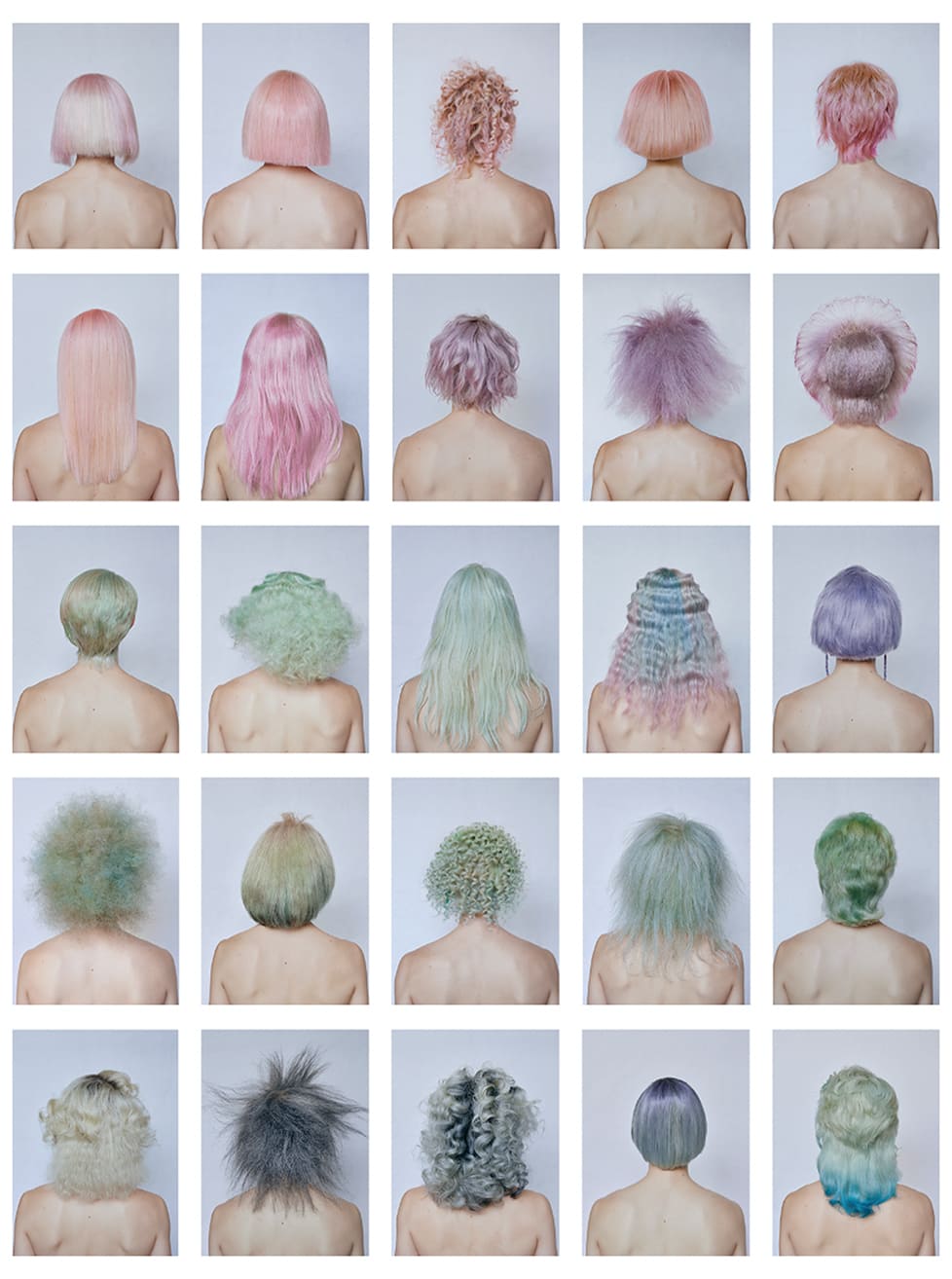 |
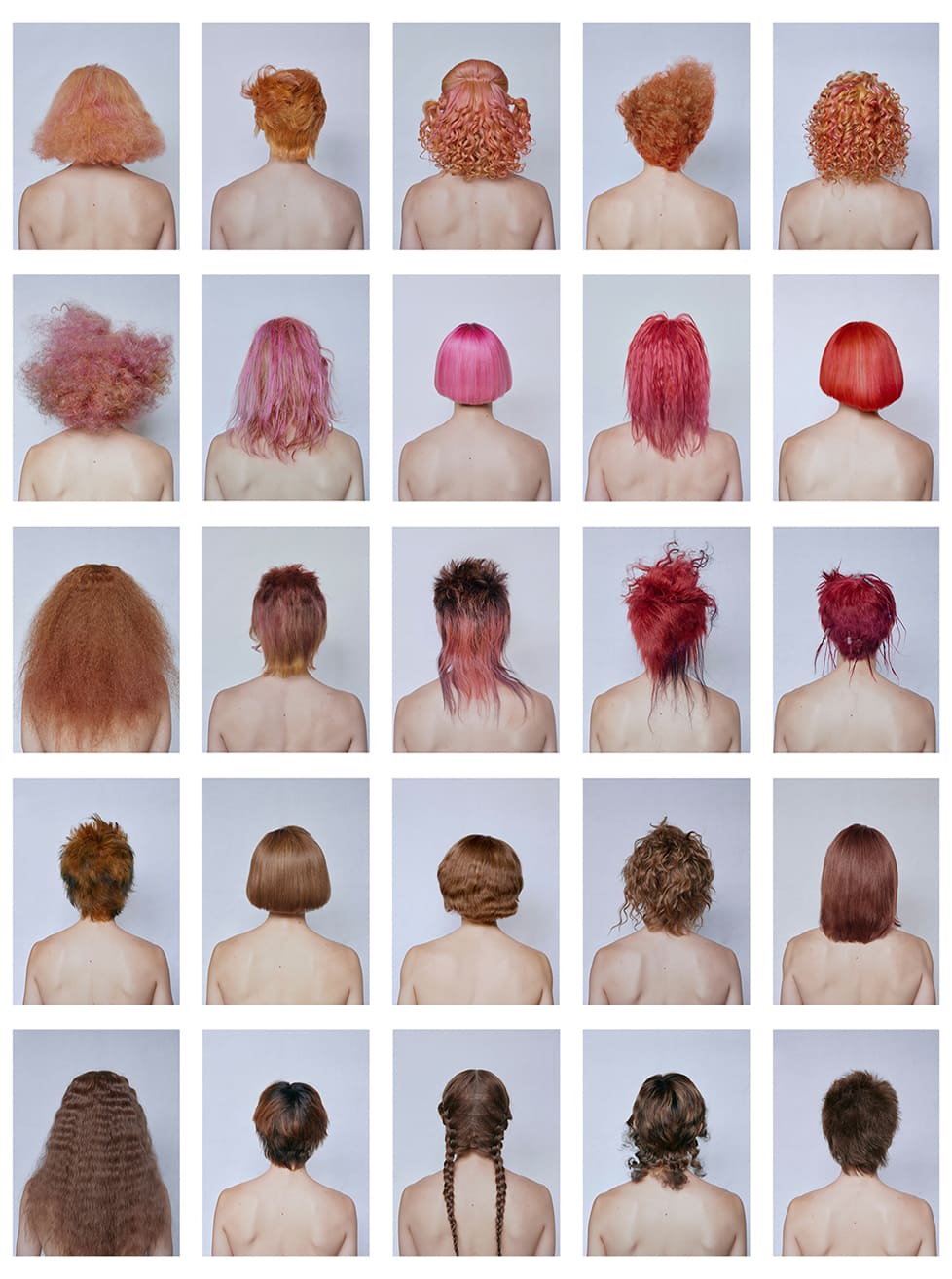 |
Personas 111 details Kono’s ongoing fascination with hair as an outward expression of inner identity, as he considers the way that hair can function as armour to protect us from the world as much as delineate our place within it. “It’s like wearing different masks,” he explains, “it can reflect your personality or hide your true self in some way”.Personas 111 details Kono’s ongoing fascination with hair as an outward expression of inner identity, as he considers the way that hair can function as armour to protect us from the world as much as delineate our place within it. “It’s like wearing different masks,” he explains, “it can reflect your personality or hide your true self in some way”.
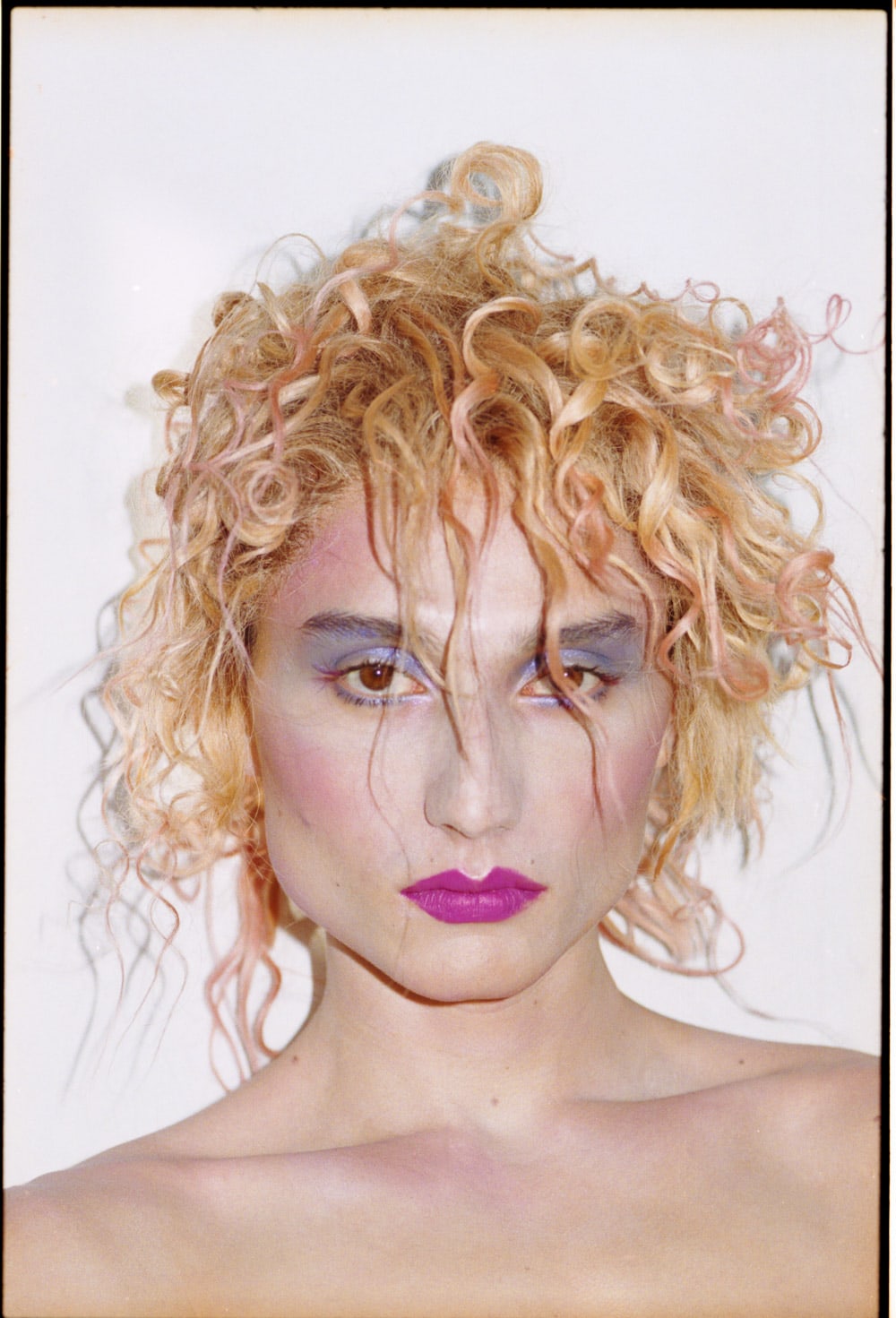 |
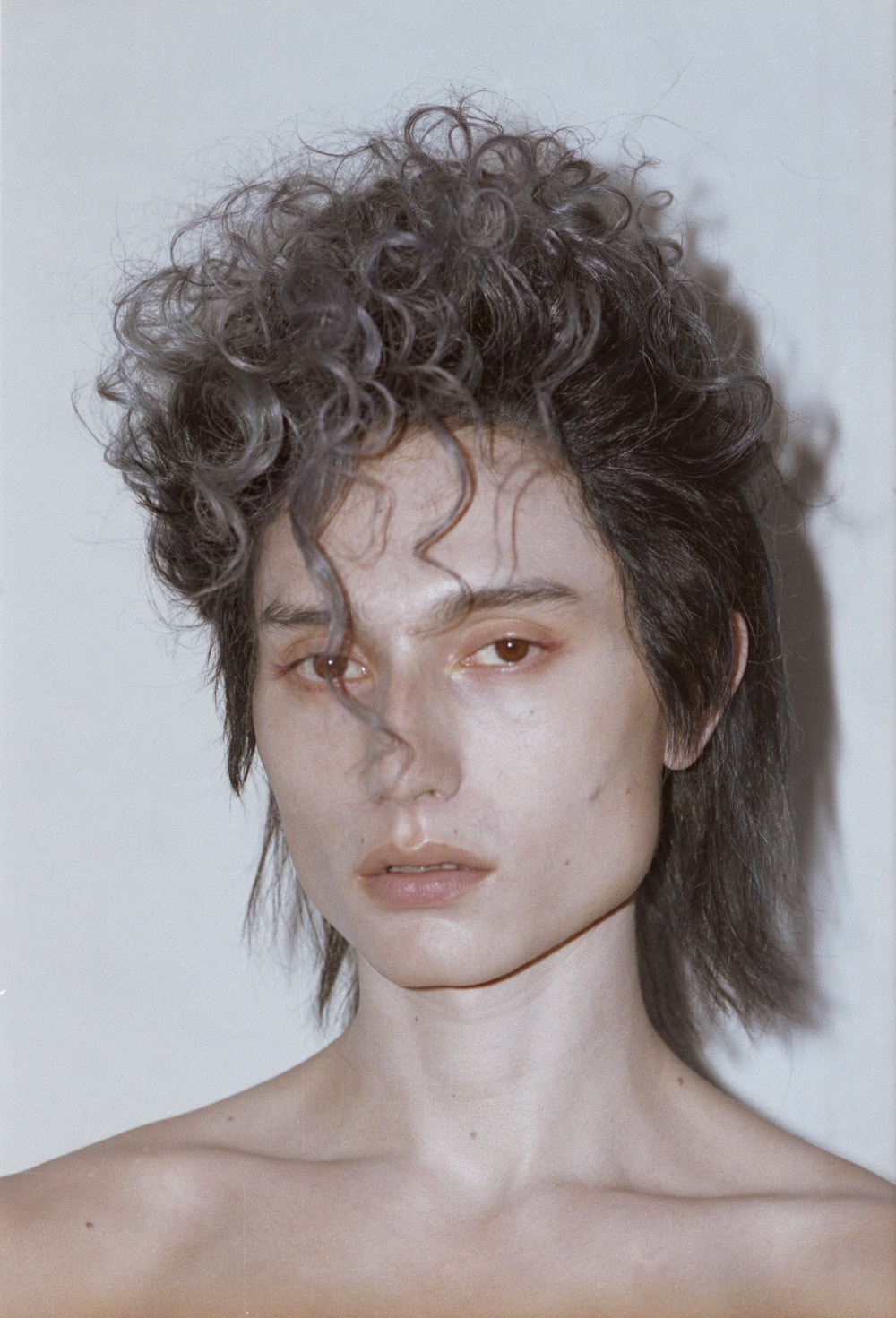 |
“My wigs are artifacts to encourage and foster continuous transformation. So, ask who you want to be, choose your wig, and step into your new life”
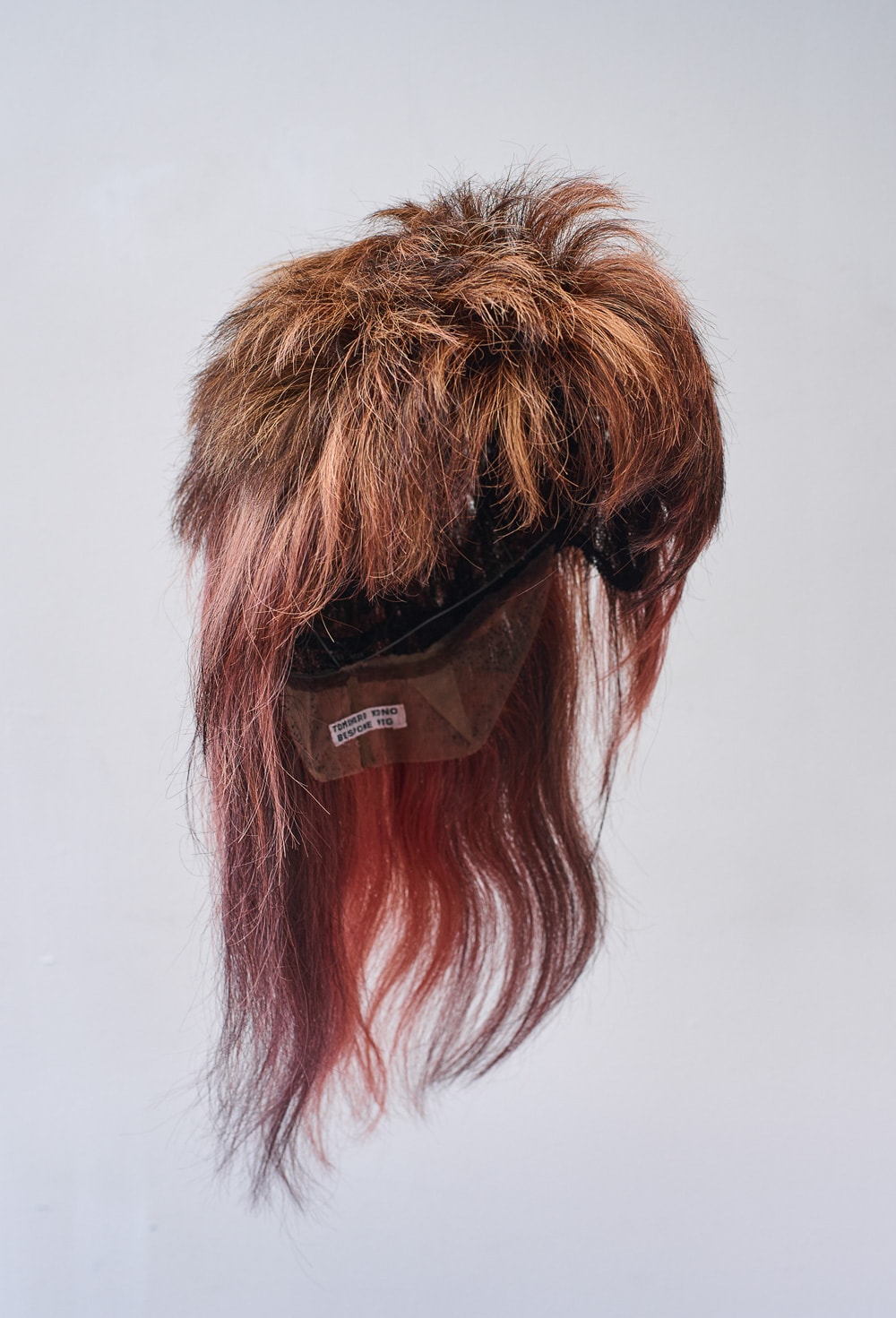 |
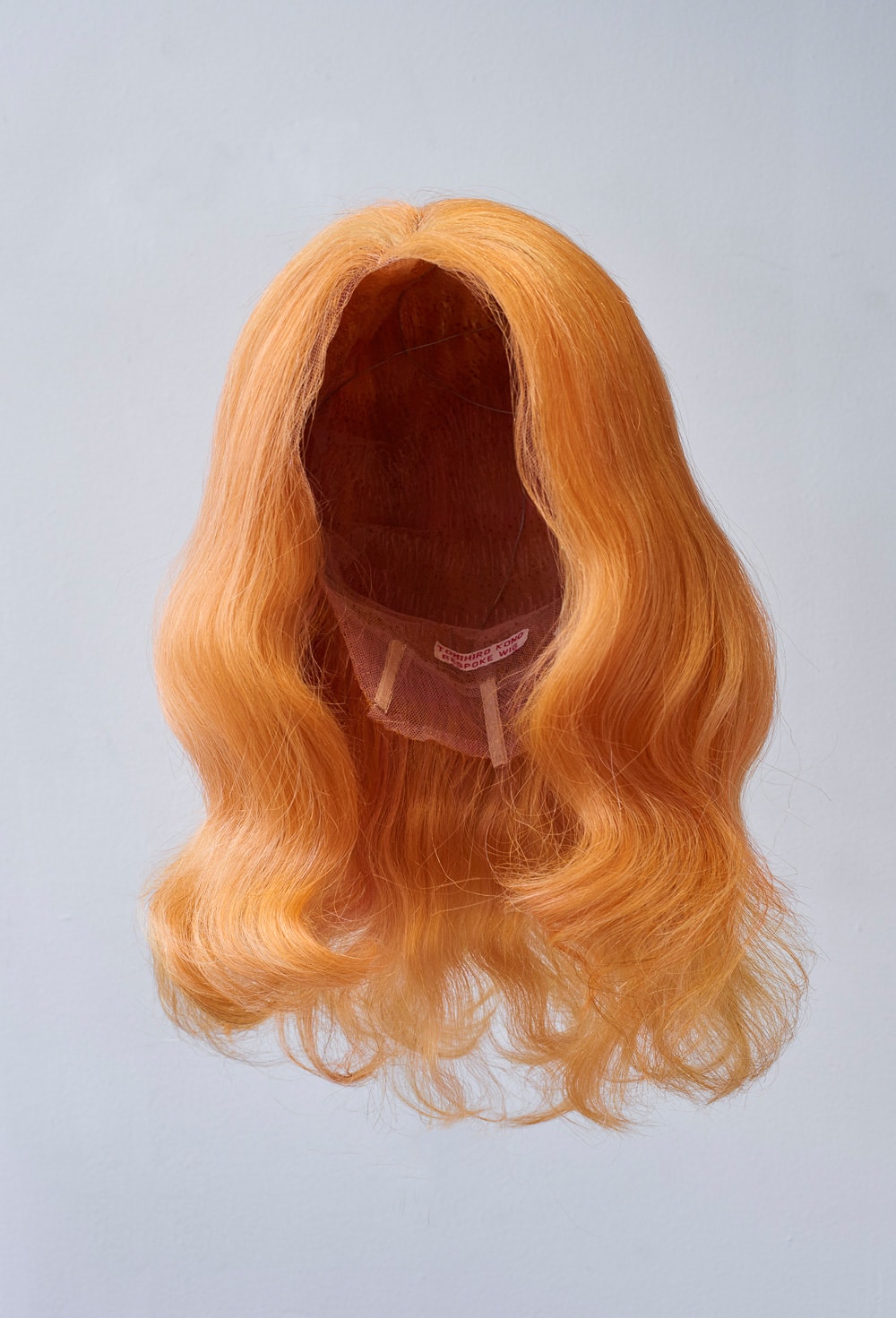 |
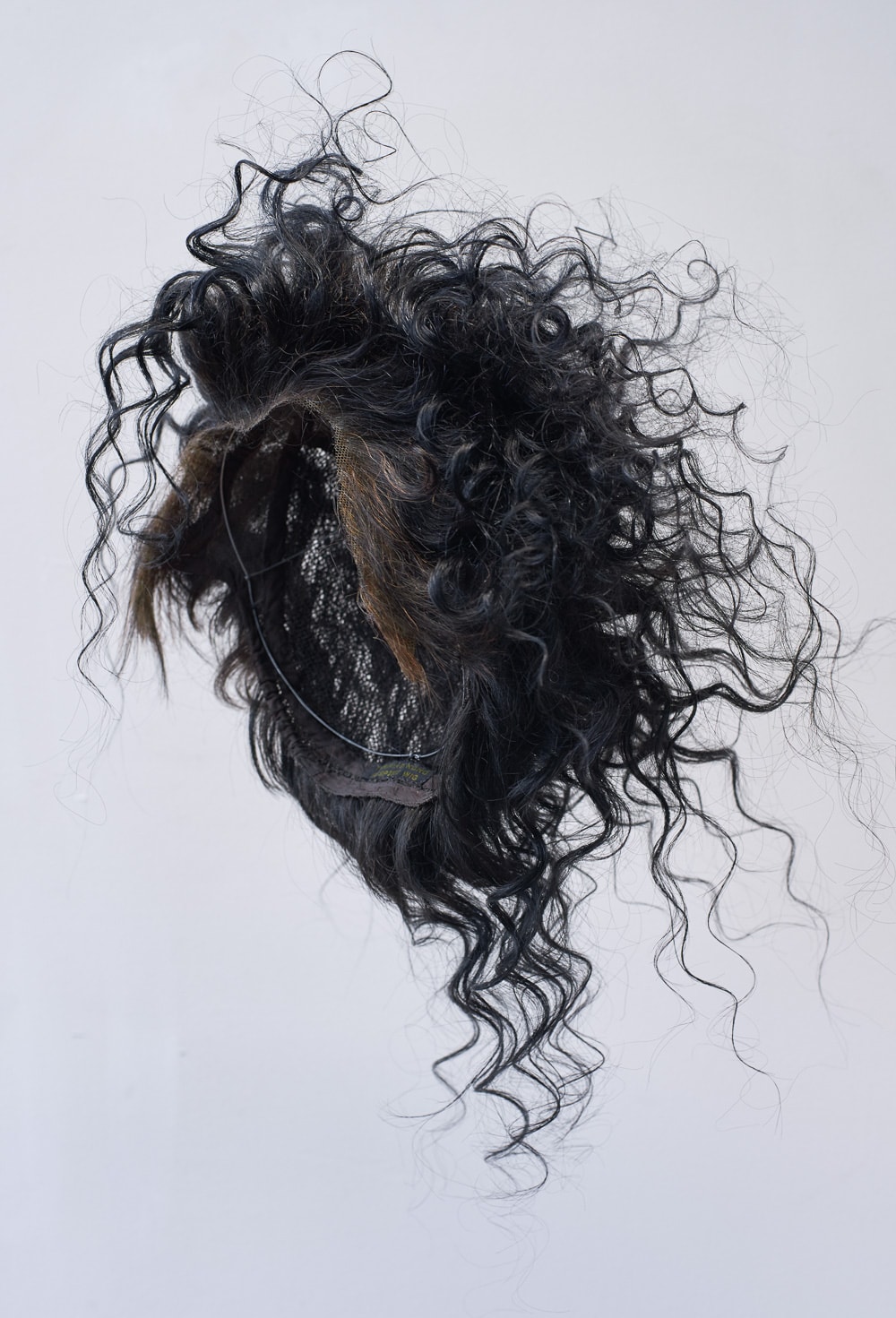 |
Hair: Tomihiro Kono @ Julian Watson Agency Photography: Sayaka Maruyama Makeup: Chiho Omae, Nana Hiramatsu Model: Cameron Lee Phan @ New Pandemics
 Priced at just $45, it’s a small price toupee [Alright, that’s enough – Ed].
Priced at just $45, it’s a small price toupee [Alright, that’s enough – Ed]. The shapeshifting power of the wig is paid tribute to in a new book from renowned hair stylist and wigmaker Tomihiro Kono.
Titled Persona 111, and using just one photographer and model, the 180-page anthology celebrates each of the New York-based artist creations: from sharp green mohawks to rose gold mullets, and whimsical, Marie Antoinette-inspired numbers in between. Each is made from human hair and takes anywhere from three to eight weeks to create.
“They instantly transform you into different characters,” he says.
Starting his career as a classically trained hairdresser in Tokyo in 1997, Kono relocated to London where he worked as a hair stylist for the likes of 10 Magazine, i‑D and Dazed & Confused. He rose to prominence following a move to New York in 2013, and is perhaps best known for his work with designer Junya Watanabe, with whom he collaborated on nine runway shows for Junya Watanabe Comme des Garçons between 2014 – 2016. He started wig making in 2017 because he “got bored of doing simple hair styling for fashion editorials and shows”.
“Making wigs from scratch is almost like making art,” says Kono, who draws inspiration from the decadent iconography of 18th century Paris, the New Romantic movement and ’90s Japanese street culture. “It requires all the skills I have acquired in my 20-year career.” llows three years on from his debut book Head Prop and features 180 pages of vivid, technicolour hair mastery.
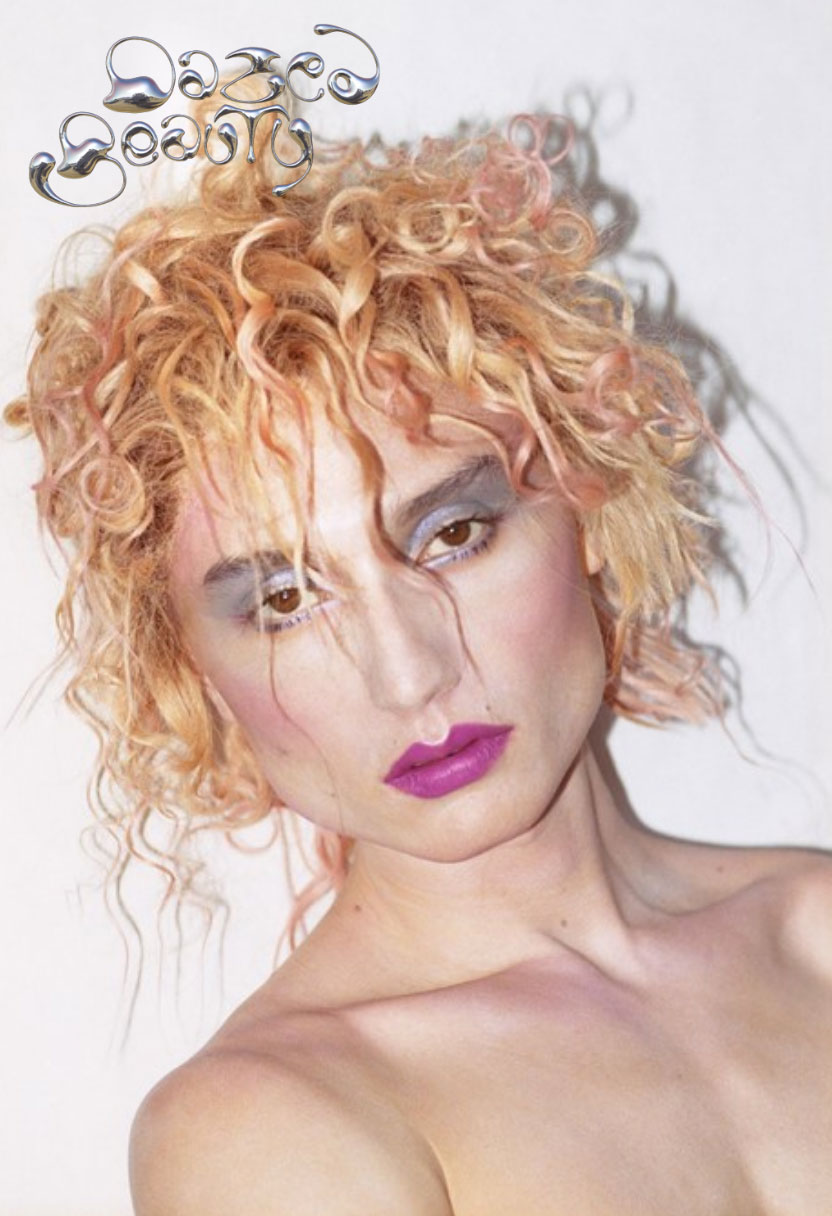 Beautiful, bizarre and meticulously constructed, the wigs in PERSONAS 111 are a feast for the imagination
Beautiful, bizarre and meticulously constructed, the wigs in PERSONAS 111 are a feast for the imagination There’s something magical about wigs. Their ability to transform, heighten or conceal your identity lends them an exhilarating sense of possibility. Wigs are powerful, they allow one to shapeshift into different characters or simply to express your true self.
This is something that’s explored in a new photobook from renowned Japanese hairstylist and wigmaker Tomihiro Kono. Titled PERSONAS 111 - The Art of Wig Making, the limited edition book follows three years on from his debut book Head Prop and features 180 pages of vivid, technicolour hair mastery.
Beginning his two-decade-long career by learning the art of Geisha hairstyling from a Japanese master, Kono has become a well-established name in the fashion industry, collaborating with designers such as Junya Watanabe and Comme des Garcons. PERSONAS 111 is the result of Kono feeling like it was time to move onto the next chapter of his career after the 2017 release of Head Prop. Evolving into wig making, the stylist spent four years intensively creating the works of art that now make up this new photobook. “Wig making requires all the skills I have acquired in my 20-year career as a hairstylist – from knotting hair onto a lace foundation in various directions and replicating in this way the natural growth of a person’s hair, to haircutting, styling, coloring, designing and sculpting,” Kono tells us. “It is a satisfying and almost mathematical process, very similar to that of a craftsman or an artist.”
For Kono, it is the blank canvas aspect of wigs that he is most drawn to and the endless possibilities they offer. “I can change the style almost forever by cutting, adding, colouring hair,” he says. “The wig itself transforms, which is cool.” Describing hair as a “creative curse,” the stylist sees wigs as the future of hair. “Wigs can be a new hair accessory for people to change and style depends on their mood,” he says. And if you are wondering where Kono finds the inspiration for his wild creativity check out Matthew Barney’s multi-media art and film project Cremaster Cycle. “Everything, including costume, direction and the hair and make-up is beyond my imagination and it’s so inspiring and new every time I watch it. It was shocking almost”
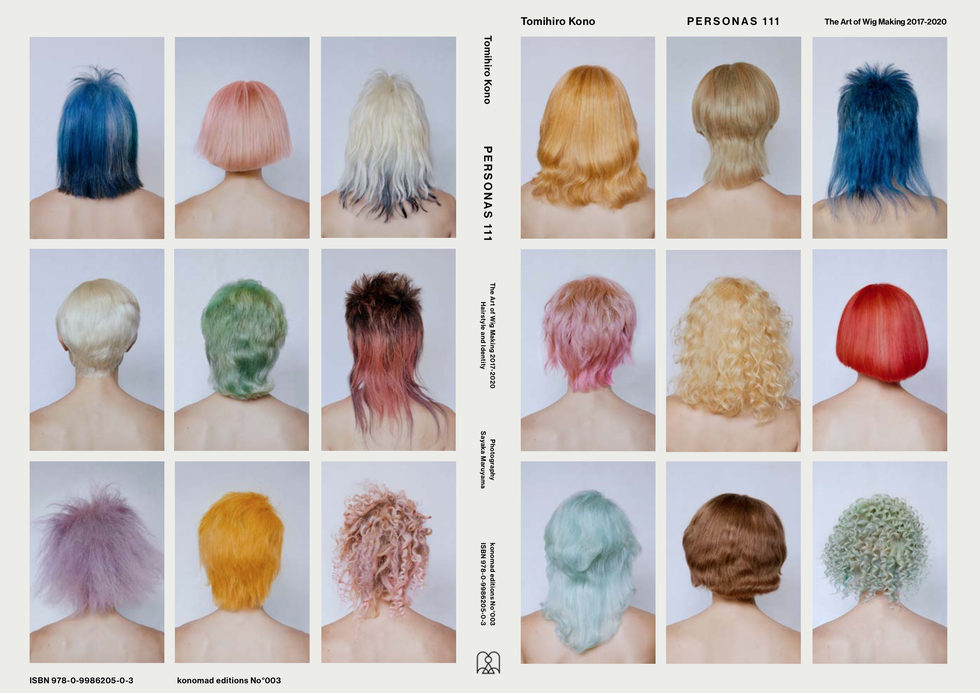 The Japanese stylist speaks to CR about hair, identity, and his new book
The Japanese stylist speaks to CR about hair, identity, and his new book Wig maker and hairstylist Tomihiro Kono has been exploring the relationship between identity, transformation, and hair for 20 years. The Japanese talent began his career as a classically trained hairstylist in Harajuku, Japan, and has brought an innovative eye to the art form. Kono’s offbeat aesthetic has attracted collaborators in the fashion world such as Junya Watanabe and Come des Garçons. In the past few years, Kono has honed in on the craft of wigs, shearing and sculpting the portfolio of pieces now featured in his newly released second book, Personas 111 - The Art of Wig Making.
The photobook features page after page of his hand-knotted, rainbow creations. Each cut and color carries its own personality, and it is this impression that Kono surveys in Personas 111. According to the artist, the transformative power of wigs can be the link between who you are and who you want to be. Wearing a wig can be "an extra thing to fill a gap between your true self and ideal self," Kono tells CR.
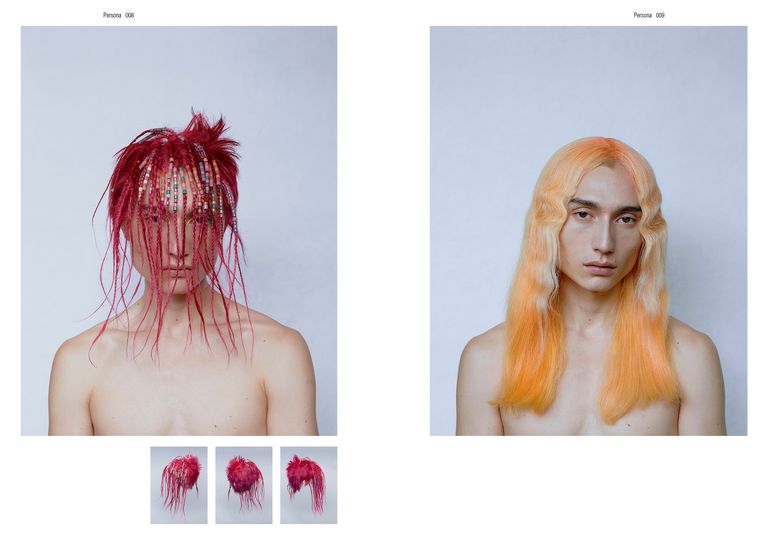
As a means of expression, the wigs offer an outlet for individuals to explore how multifaceted their own identity is. The possibilities are endless, unbound by gender or age. “I think it’s an everlasting concern for us to explore our identity,” Kono says. “I think wigs can help as uplifting, positive tools as a part of fashion. It’s stimulating and energizing to break our routines sometimes.”
Kono’s wigs also lend themselves to the singular aspects of the individual, too. On the technical level, he sizes each custom piece to the client’s head. Aesthetically, it is ultimately up to the wearer to determine how the wig looks on themselves. For example, Kono sites a fluffy blonde wig with multicolor beaded braids that he made for Lim Hyun-jae, a member of Korean band Hyukoh. “He’s a boy in his 20s and wears my wig like a hat, showing his nape hair underneath, for their world tour,” the stylist shares. “I’d rather learn from my creative wig wearers. If they wear my wig in a unique way that I wasn’t expecting, that’s a surprise for me.”
The 111 wigs featured in Kono's book, all featured on the same model, show the simultaneously obvious and nuanced nature of the hairpieces. Each page pictures an immediate transformation, but also a new perception of the person wearing the wigs. From blunt, silver bowl cuts to candy-colored, Rococo tresses (a period that Kono finds especially inspiring), Personas 111 presents a catalogue of characters expressed through hair.
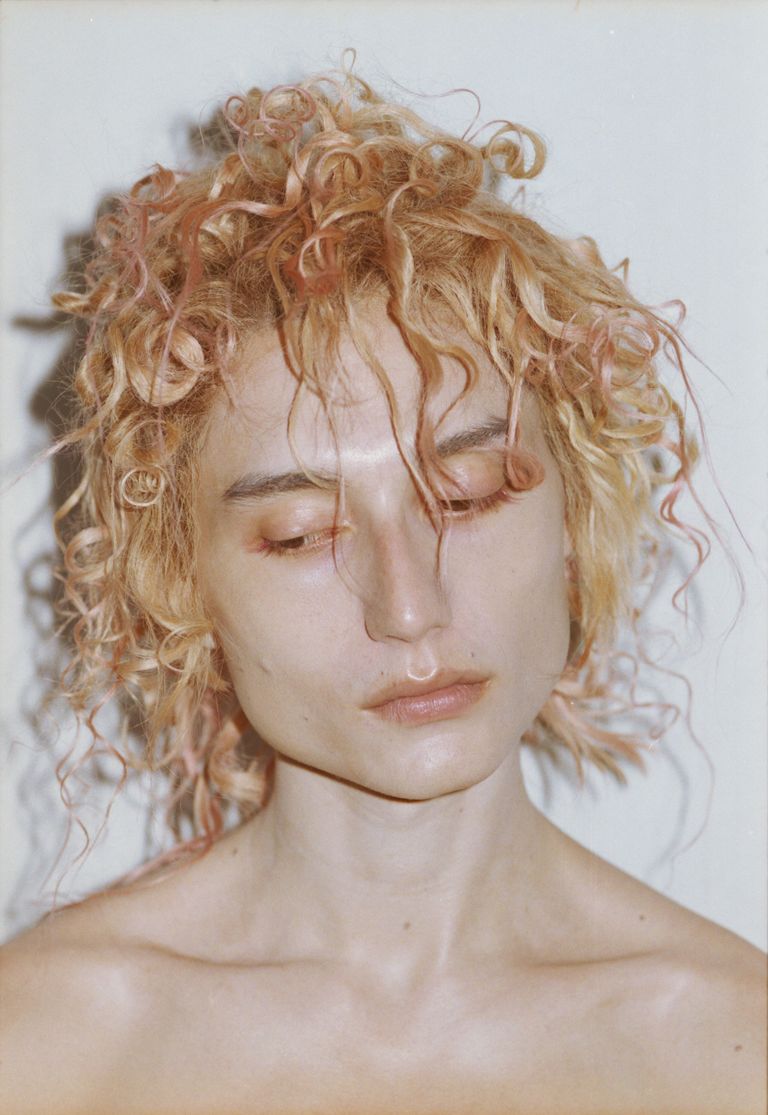 |
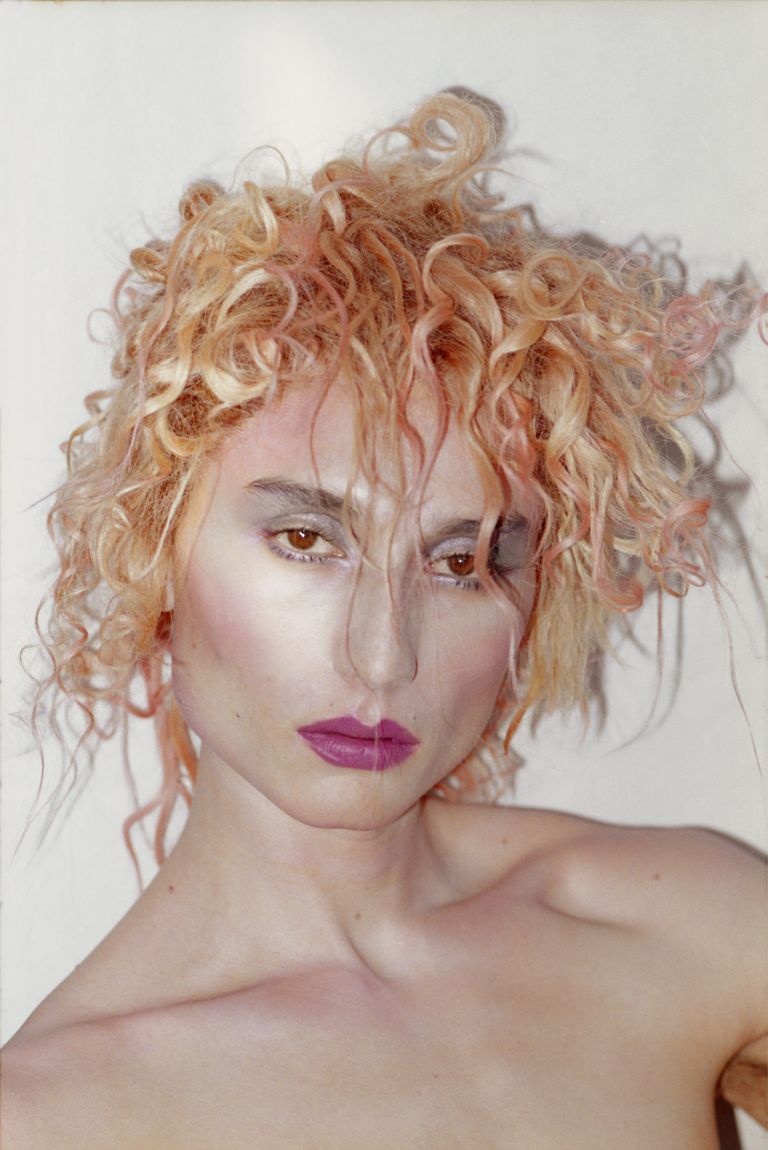 |
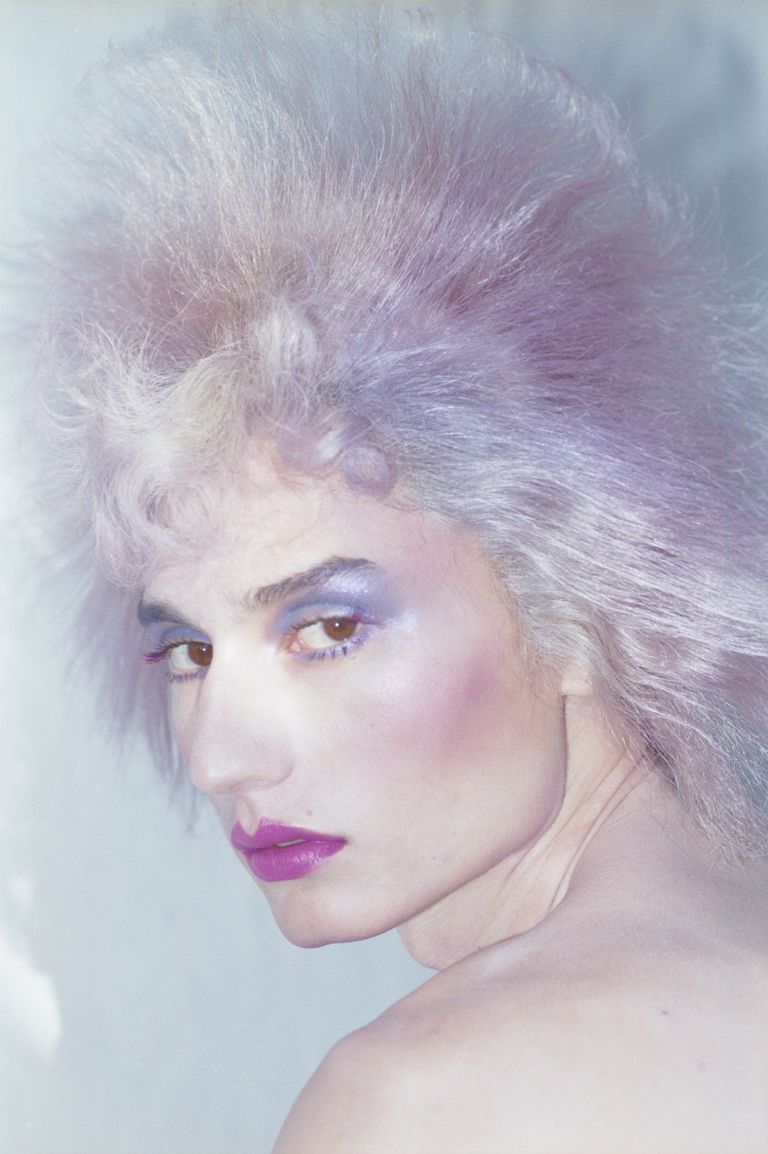 |
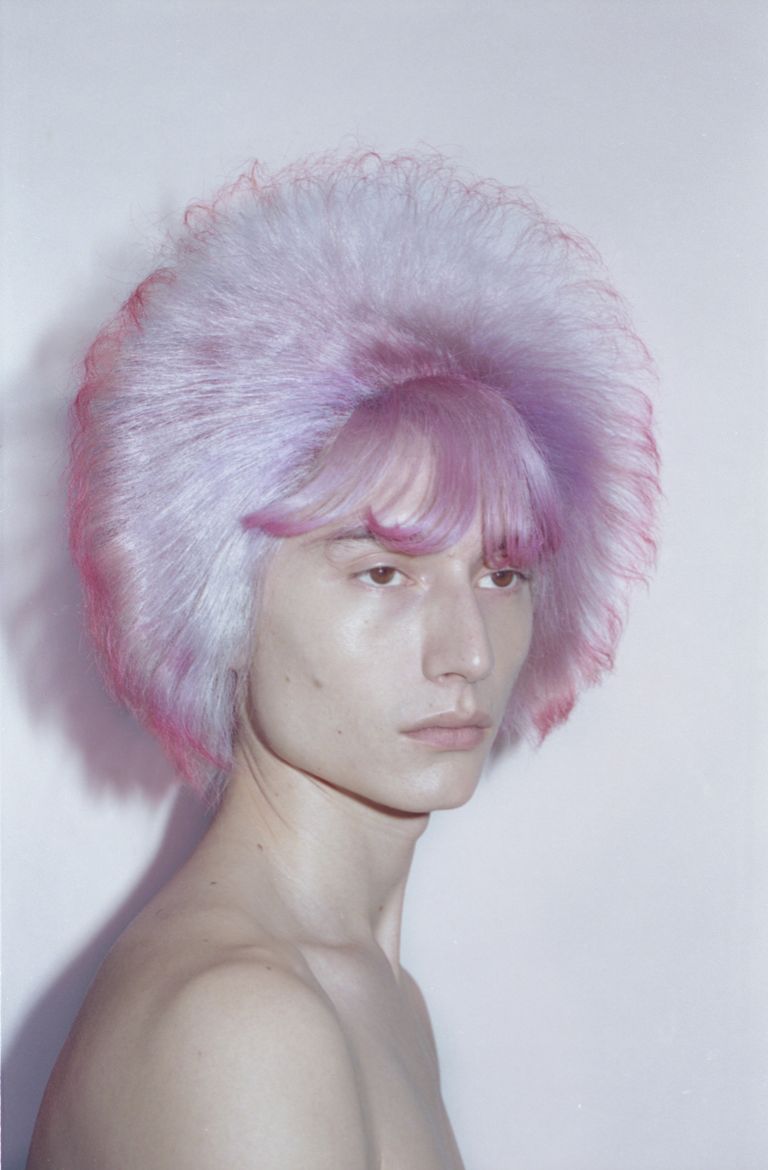 |
Japanese wigmaker Tomihiro Kono combs through ideas on identity
In his new book Personas 111, wigmaker Tomihiro Kono examines the identity-shaping properties of hair
multiple images of a man wearing various coloured wigs
These days, identity is as much a verb as it is a noun. It’s something that is constantly in motion, ever changing and routinely able to morph from one thing to another. Japanese wigmaker and artist, Tomihiro Kono has released a new book that examines this mutability of identity through wigs.
Personas 111 displays an array of Kono’s masterful creations, from wavy platinum locks to cobalt blue mullets. The wigs, modelled by photographer Cameron Lee Phan, demonstrate the particular power hair has in shaping our perception of an individual’s character. ‘Wearing a wig also enables us an instant transformation,’ Kono writes. ‘It is fun to create multiple characters that exist in ourselves – it is almost like choosing your outfit of the day from your wardrobe.’ a man with purple wig man wearing orange curly haired wig Top, Cameron Lee Phan, photgraphed by Sayaka Maruyama. As feautered in Personas 111, published by konomad. Bottom, Image from the chapter ’Gender-blending Transformations’ in Personas 111
Kono worked as a stylist before moving into a wig making, a practice he found ripe with creative potential. Honing the skills he developed working with hair for 20 years, he learned the ins and outs of wig making – from the various techniques for knotting hair into lace foundations, to the methods for dying, sculpting and styling the strands.
He has displayed the wigs in interactive exhibitions, where visitors could try on an array of styles and, in the process, an array of personalities. Now, with Personas 111, Kono has brought the put the art of identity shifting into our hands.
Of course markers of identity run much deeper than personal style, but while we navigate the boundaries of ‘who we are’ it’s good to see how, in some ways, those distinctions can so easily change. So who will you be today? § man in wig with long pink straight hair man with long yellow hair over his face man with curled blond hair man with orange combed over hair man in wig with short light purple hair
These days, identity is as much a verb as it is a noun. It’s something that is constantly in motion, ever changing and routinely able to morph from one thing to another. Japanese wigmaker and artist, Tomihiro Kono has released a new book that examines this mutability of identity through wigs.
Personas 111 displays an array of Kono’s masterful creations, from wavy platinum locks to cobalt blue mullets. The wigs, modelled by photographer Cameron Lee Phan, demonstrate the particular power hair has in shaping our perception of an individual’s character. ‘Wearing a wig also enables us an instant transformation,’ Kono writes. ‘It is fun to create multiple characters that exist in ourselves – it is almost like choosing your outfit of the day from your wardrobe.’
Kono worked as a stylist before moving into a wig making, a practice he found ripe with creative potential. Honing the skills he developed working with hair for 20 years, he learned the ins and outs of wig making – from the various techniques for knotting hair into lace foundations, to the methods for dying, sculpting and styling the strands.
He has displayed the wigs in interactive exhibitions, where visitors could try on an array of styles and, in the process, an array of personalities. Now, with Personas 111, Kono has brought the put the art of identity shifting into our hands.
Of course markers of identity run much deeper than personal style, but while we navigate the boundaries of ‘who we are’ it’s good to see how, in some ways, those distinctions can so easily change. So who will you be today? §
“Tomihiro Kono’s wigs are for everybody…” writes Anna Battista in her introduction to the multi-talented hair artist’s second book, Personas 111. That in mind, tour its 176 pages and you will also find a wig for just about anyone or any attitude. Just in time for the long stretch of social distancing, Kono catalogs his endlessly inspired wigs for every pastel shade of your self-isolation blues. Photographed by Sayaka Maruyama, The Art of Wig Making 2017-2020 showcases multitudes of his handmade wigs that marry transformative styling and craftsmanship––something the Japanese-born wig maker mastered over the course of his colorful 20-year career. His choice to use a single model, Cameron Lee Phan, underlines the magical attributes of each wig as they transform Cameron’s character and showcase the élan with which Tomihiro Kono invents or interprets a range of styles. “I selected Cameron as a model because I was inspired by their androgynous look that is Asian mixed,” says the hairstylist, continuing, “They also remind me of a Greek statue in a way.”
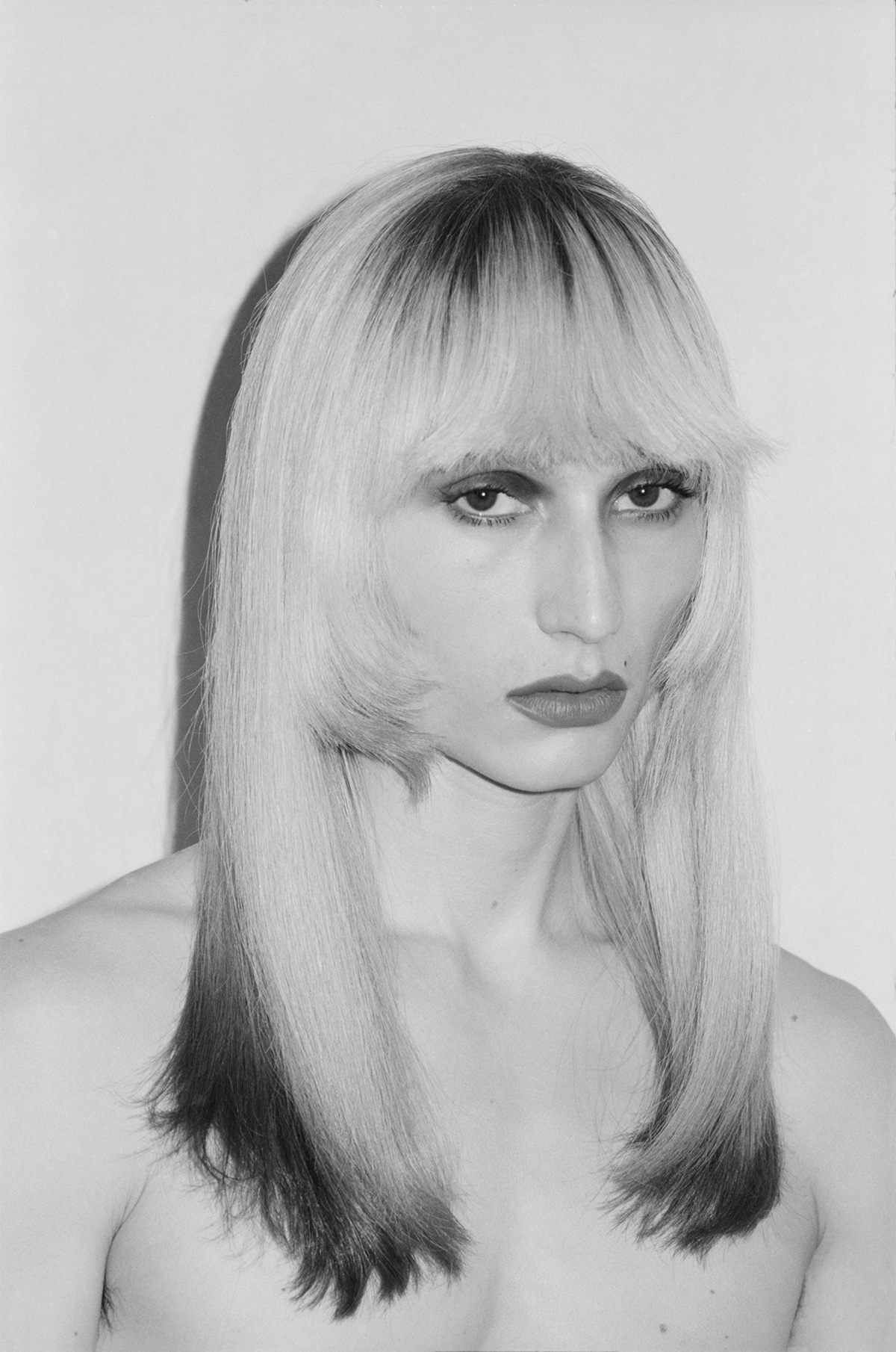
Before Kono can imbue a wig with personality-shifting powers he begins first by draping lace fabric on a head mannequin. “Making the foundation is very intricate work, and it needs technique to make it fit the person’s head shape.” It’s not until after this that he can employ his expertise as a hairstylist and head prop artist having been tapped by Junya Watanabe Comme des Garcons and across fashion working for major clients. “The process that is artistry and aesthetic would be the design of the face line––that makes an impression of the character. Also hair-coloring and styling,” he says. Though mining from fashion’s history, Kono often mentions Marie Antoinette as a baseline for inspiration. Still, his wigs come across motley in their assortment and are painstakingly one-of-a-kind. Kono explains the process can take “2 to 3 weeks to make per wig in average, but it all depends on density and details.” The lengthy undertaking makes the comprehensive collection even more impressive.
Like everyone, Tomihiro Kono’s plans have also been impacted by the COVID-19 outbreak, which has disrupted the launch of Personas 111. “I was supposed to be doing an interactive wigs exhibition which was scheduled for March. It was where viewers could actually experience the instant transformation with my wigs, but now we’ve decided to postpone, which is a shame.” Luckily, the physical book itself is still available to enrich your downtime. For more information visit www.konomad.com.
“Hairstyles and identities are closely related. We choose a hairstyle to express ourselves: our appearance is important to define who we are, attract, disguise, entertain or play a social role. A wig is designed to make a definite impression upon others, but also to conceal the true nature of an individual.
Wearing a wig also enables us an instant transformation: it is fun to create multiple characters that exist in ourselves – it is almost like choosing your outfit of the day from your wardrobe. You can choose whichever color, style or texture you want, to match your mood of the day. Choosing a wig can be an act of self-assertion, self-defense and self-realization. We are highly sensitive that our character can easily be changed in response to our hairstyle either consciously or unconsciously. Tomihiro Kono believes wigs have the positive power to influence an individual’s personality, and help us find our ideal self.”
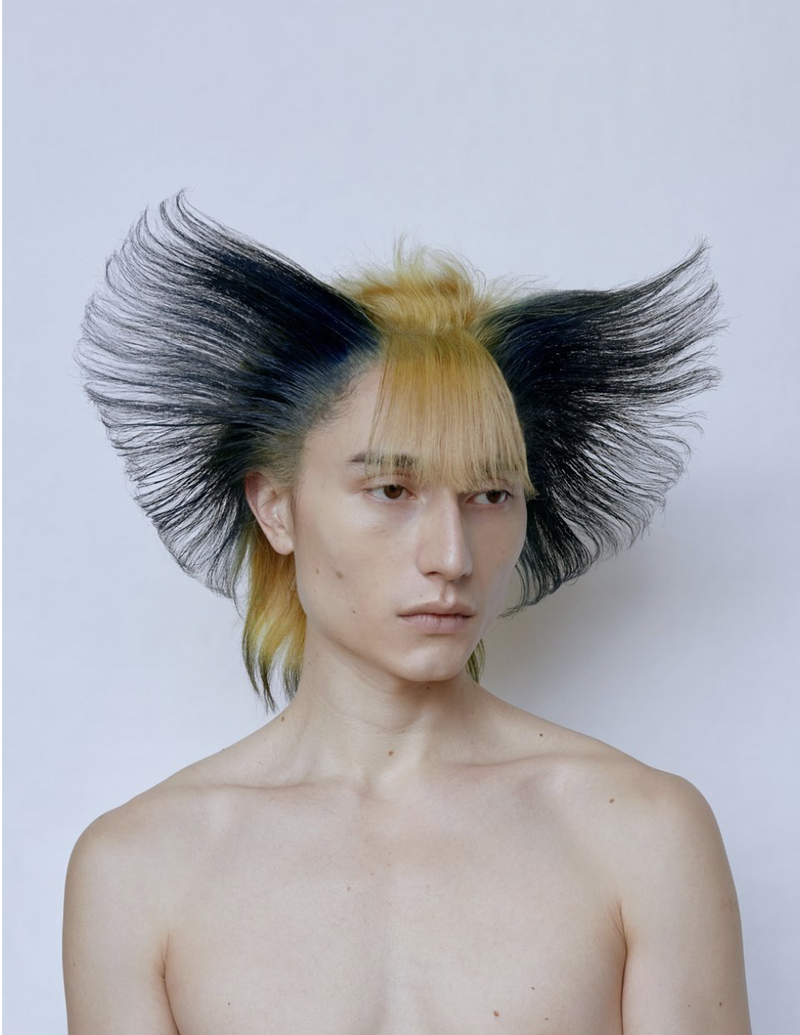 Using human hair as a material for sculpture, wigmaker Tomihiro Kono has culminated his meticulous artworks into a beautiful book photographed and designed by Sayaka Maruyama, titled “Personas 111.” Model Cameron Lee Phan’s androgynous visage acts as a perfect tabula rasa, encapsulating the ways in which our hair can dictate identity. Cindy Shermanesque moments pepper the second half of the book, where wigs and makeup form into personalities that remind us of Liquid Sky, David Bowie, Marie Antoinette and any other pastel style icon you could imagine. Although we usually don’t judge a book by it’s cover, we think it’s safe to say with this one you can.
Using human hair as a material for sculpture, wigmaker Tomihiro Kono has culminated his meticulous artworks into a beautiful book photographed and designed by Sayaka Maruyama, titled “Personas 111.” Model Cameron Lee Phan’s androgynous visage acts as a perfect tabula rasa, encapsulating the ways in which our hair can dictate identity. Cindy Shermanesque moments pepper the second half of the book, where wigs and makeup form into personalities that remind us of Liquid Sky, David Bowie, Marie Antoinette and any other pastel style icon you could imagine. Although we usually don’t judge a book by it’s cover, we think it’s safe to say with this one you can.
To celebrate the release of the book Personas 111 - The Art of Wig Making 2017-2020 by Japanese hair artist, head prop designer and wig maker Tomihiro Kono (河野富広) out today on Konomad Editions, I'm publishing here an extended version of the essay I wrote for the volume. Get ready to enter the Mask-thrix!
"The use of the word person in every European language to signify a human individual is unintentionally appropriate; persona really means a player's mask, and it is quite certain that no one shows himself as he is, but that each wears a mask and plays a role. In general, the whole of social life is a continual comedy, which the worthy find insipid, whilst the stupid delight in it greatly." - Arthur Schopenhauer, Essays of Schopenhauer
The first thing that may come to your mind while observing Tomihiro Kono's wigs is punk. It is indeed easy to identify in the spiky hairstyles, bright colours and in that latent sense of rebellion, all the tropes of this subculture. Yet, to understand Tomihiro Kono's work, you have to go back to the early performances of Greek and Latin plays.
During these representations actors would wear masks that helped them getting into their roles. Masks helped the audience identifying the various characters even from a great distance and hearing the actors better as the masks were designed to amplify their voices and they were also conceived as instruments to achieve an internal metamorphosis.
The aim and purpose of masks often changed with the playwrights: Aeschylus was the first author to introduce the use of masks in his tragedies; Euripides gave masks a better characterisation, so that they could represent different human emotions.
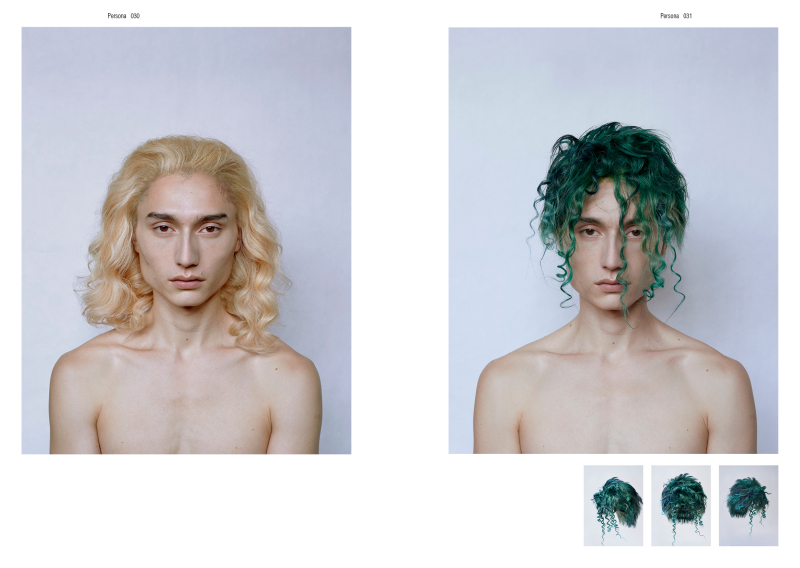
Masks became vehicles for a social and political satire in Aristophanes' comedies and Menander used them to represent well-established characters borrowed from everyday life. Inspired by him, Latin author Plautus employed masks to represent comedic stereotypes, while in Terentius' plays masks showed figures in constant evolution.
From tools that could help actors getting into their roles, masks turned into instruments for an internal metamorphosis. The possibility of going through a personal mutation is also another theme of classical stories, such as Ovid's Metamorphoses and Apuleius' The Golden Ass.
Behind Tomihiro Kono's work there is a modern reinterpretation of two parallel phenomena that come from the classics – masks and the power of transformations.
When you put on one of his hand-crafted wigs you take on a different "persona" - a term that in its Latin etymology referred to a theatrical mask - and become an entirely new character.
A shy person may transform into a rebellious punk; a tough individual may adopt the style and manners of a romantic lady in a powdered wig from the 1700s. A man may turn into a woman; a woman into a man. Or they may choose to become genderless beings, individuals who may be anything, even a powerful monster à la Medusa.
Tomihiro Kono's wigs are for everybody and this is the main reason why his creations find a parallelism also with the Venetian 1700s costume of the bauta, that comprised a black cape, a tricorne hat and a white mask called "larva" (meaning "ghost" in Latin). People dressed in the bauta were allowed to walk around the Venetian calli any day of the year, and the outfit was not just a costume, but a transformative tool. All sorts of people could wear it with no distinctions of social classes or sex, and the disguise guaranteed maximum freedom and anonymity, just like Tomihiro Kono's wigs.
German political philosopher Hannah Arendt stated that "the masks or roles which the world assigns us, and which we must accept and even acquire if we wish to take part in the world's play at all, are exchangeable". The same can be said about Tomihiro Kono's wigs included in the volume "Personas 111", a title that features a symbolic number, related to spiritual awakening and enlightenment, inspiration, intuition, optimism and self-expression. The 111 wigs in these pages are not static, but they are in continuous mutation: they take a new life when somebody wears them; they move and shake, tremble and seduce, inspire and invite. They are dramatic ways to change the way we look on the outside to change the way we feel inside.
Pink spikes and blonde braids; romantic curls, sharp green mohawks and pale blue waves; strawberry red asymmetrical bobs, rose gold soft mullets or simple straight hairstyles in a superb cobalt shade: choose and transform yourself with an uneven short shag, a page-boy hairstyle or a Chelsea haircut - you can be a naïve princess or a terrible tomboy, a punk rebel or a conformist, an artist or a mermaid.
There's the ghost of indomitable La Casati, a Belle Èpoque icon, in one fierce red wig and the revolutionary spirit of Angela Davis in a poetical afro. Another design seems to have the fluffy consistency of the sweetest candy cotton and it is a joy to the eyes and the touch. There is a long wavy wig for all those among us who want to feel like Botticelli's Venus, newly-born from a shell, a style that contrasts with the perfect smoothness of a zazzera reminiscent of the coiffure in Jacometto Veneziano's exquisite "Portrait of a Young Man". And then there are ethereal or bold styles that could fit angels or demons or that you may see donned by saints or sported by sinners.
These wigs, inspired by a combination of disciplines going from art and architecture to music, fashion and even mathematics, are indeed about finding a physical and metaphysical space, they represent an internal fight with our own selves and an opportunity to search for a new essence, grow and change, going through a process of catharsis similar to the one the audience went through while watching a performance in ancient Greece.
Last but not least, Tomihiro Kono's wigs are also a reaction to our digital society and a way to reclaim our physicality. In Latin times a persona was a mask; today our digital masks have turned into persons that amplify our individual digital essence via new means of communications and social media, letting our fake and intangible identities take over. Tomihiro Kono does not invite us to transform ourselves digitally, but physically, recurring not to plastic surgery but to a wig.
This is why a wig by Tomihiro Kono is a "mask-thrix" – a mask for the hair ("thrix" meaning "hair" in Greek), a symbol of an existential drama and the possibility of taking up not just one role, but multiple ones via radical transformations. By wearing a wig by Tomihiro Kono you can be anything and anyone but yourself. The promise is alluring. Enter the Mask-thrix.
It’s been three wild n’ weird years since hair/wig extraordinaire Tomihiro Kono released his first book, Head Prop, in 2017—and three years since we last chatted with him at the office Newsstand. On March 15, Kono is releasing PERSONAS 111 - The Art of Wig Making 2017-2020, the creative’s second archival book.
Featuring 180 pages of his work, each page is printed in full color, vividly rendering the Kono’s utter mastery of his craft.
Hair + Wigs by Tomihiro Kono @ Julian Watson Agency
Photography by Sayaka Maruyama
Makeup by Chiho Omae, Nana Hiramatsu
Model: Cameron Lee Phan @ New Pandemics
Published by konomad editions
Renowned wigmaker and head prop artist Tomihiro Kono has launched his second book Personas 111: The Art of Wig Making. In psychology, “Persona” is the social face or the personality that an individual presents to the world. Most people have several personas to cope with various societal situations. Persona is not the totality of one’s being, but rather a small component of a much versatile personality.
Using human hair as a material for sculpture, wigmaker Tomihiro Kono has culminated his meticulous artworks into a beautiful book photographed and designed by Sayaka Maruyama, titled “Personas 111.” Model Cameron Lee Phan’s androgynous visage acts as a perfect tabula rasa, encapsulating the ways in which our hair can dictate identity. Cindy Shermanesque moments pepper the second half of the book, where wigs and makeup form into personalities that remind us of Liquid Sky, David Bowie, Marie Antoinette and any other pastel style icon you could imagine. Although we usually don’t judge a book by it’s cover, we think it’s safe to say with this one you can.
Words by Anna Battista
The first thing that may come to your mind while observing Tomihiro Kono’s wigs is punk. It is indeed easy to identify in the spiky hairstyles, bright colors and in that latent sense of rebellion, all the tropes of this subculture. Yet, to understand Tomihiro Kono’s work, you have to go back to the early performances of Greek and Latin plays.
During these representations actors would wear masks that helped them get into their roles; the masks were also conceived as instruments to achieve an internal metamorphosis.
Behind Tomihiro Kono’s work, there is a modern reinterpretation of two parallel phenomena that come from the classics—masks and the power of transformations. When you put on one of his hand-crafted wigs you take on a different persona—a term that in its Latin etymology referred to a theatrical mask—and become an entirely new character.
A shy person may transform into a rebellious punk; a tough individual may adopt the style and manners of a romantic lady in a powdered wig from the 1700s. A man may turn into a woman; a woman into a man. Or they may choose to become genderless beings, individuals who may be anything, even a powerful monster à la Medusa.
Tomihiro Kono’s wigs are for everybody and this is the main reason why his creations find a parallelism also with the Venetian 1700s costume of the bauta. All sorts of people could wear it with no distinctions of social classes or sex, and the disguise guaranteed maximum freedom and anonymity, just like Tomihiro Kono’s wigs.
German political philosopher Hannah Arendt stated that “the masks or roles which the world assigns us, and which we must accept and even acquire if we wish to take part in the world’s play at all, are exchangeable.” The same can be said about Tomihiro Kono’s wigs included in the volume Personas 111, a title that features a symbolic number, related to spiritual awakening and enlightenment, inspiration, intuition, optimism and self-expression. The 111 wigs in these pages are not static, but they are in continuous mutation: they take a new life when somebody wears them; they move and shake, tremble and seduce, inspire and invite. They are dramatic ways to change the way we look on the outside to change the way we feel inside.
Pink spikes and blonde braids; romantic curls, sharp green mohawks and pale blue waves; strawberry red asymmetrical bobs, rose gold soft mullets or simple straight hairstyles in a superb cobalt shade: choose and transform yourself with an uneven short shag, a page-boy hairstyle or a Chelsea haircut—you can be a naïve princess or a terrible tomboy, a punk rebel or a conformist, an artist or a mermaid.
There’s the ghost of indomitable La Casati, a Belle Èpoque icon, in one fierce red wig and the revolutionary spirit of Angela Davis in a poetical afro. Another design seems to have the fluffy consistency of the sweetest candy cotton and it is a joy to the eyes and the touch. There is a long wavy wig for all those among us who want to feel like Botticelli’s Venus, newly-born from a shell, a style that contrasts with the perfect smoothness of a zazzera reminiscent of the coiffure in Jacometto Veneziano’s exquisite Portrait of a Young Man. And then there are ethereal or bold styles that could fit angels or demons or that you may see donned by saints or sported by sinners.
These wigs, inspired by a combination of disciplines going from art and architecture to music, fashion and even mathematics, are indeed about finding a physical and metaphysical space, they represent an internal fight with our own selves and an opportunity to search for a new essence, grow and change, going through a process of catharsis.
Last but not least, Tomihiro Kono’s wigs are also a reaction to our digital society and a way to reclaim our physicality. In Latin times a persona was a mask; today our digital masks have turned into persons that amplify our individual digital essence via new means of communications and social media, letting our fake and intangible identities take over.
Tomihiro Kono does not invite us to transform ourselves digitally, but physically, recurring not to plastic surgery but to a wig.
This is why a wig by Tomihiro Kono is a “mask-thrix”—a mask for the hair (thrix meaning hair in Greek), a symbol of an existential drama and the possibility of taking up not just one role, but multiple ones via radical transformations.
By wearing a wig by Tomihiro Kono you can be anything and anyone but yourself. The promise is alluring. Enter the mask-thrix.
Renowned wigmaker and head prop artist Tomihiro Kono has launched his second book Personas 111: The Art of Wig Making. In psychology, “Persona” is the social face or the personality that an individual presents to the world. Most people have several personas to cope with various societal situations. Persona is not the totality of one’s being, but rather a small component of a much versatile personality.
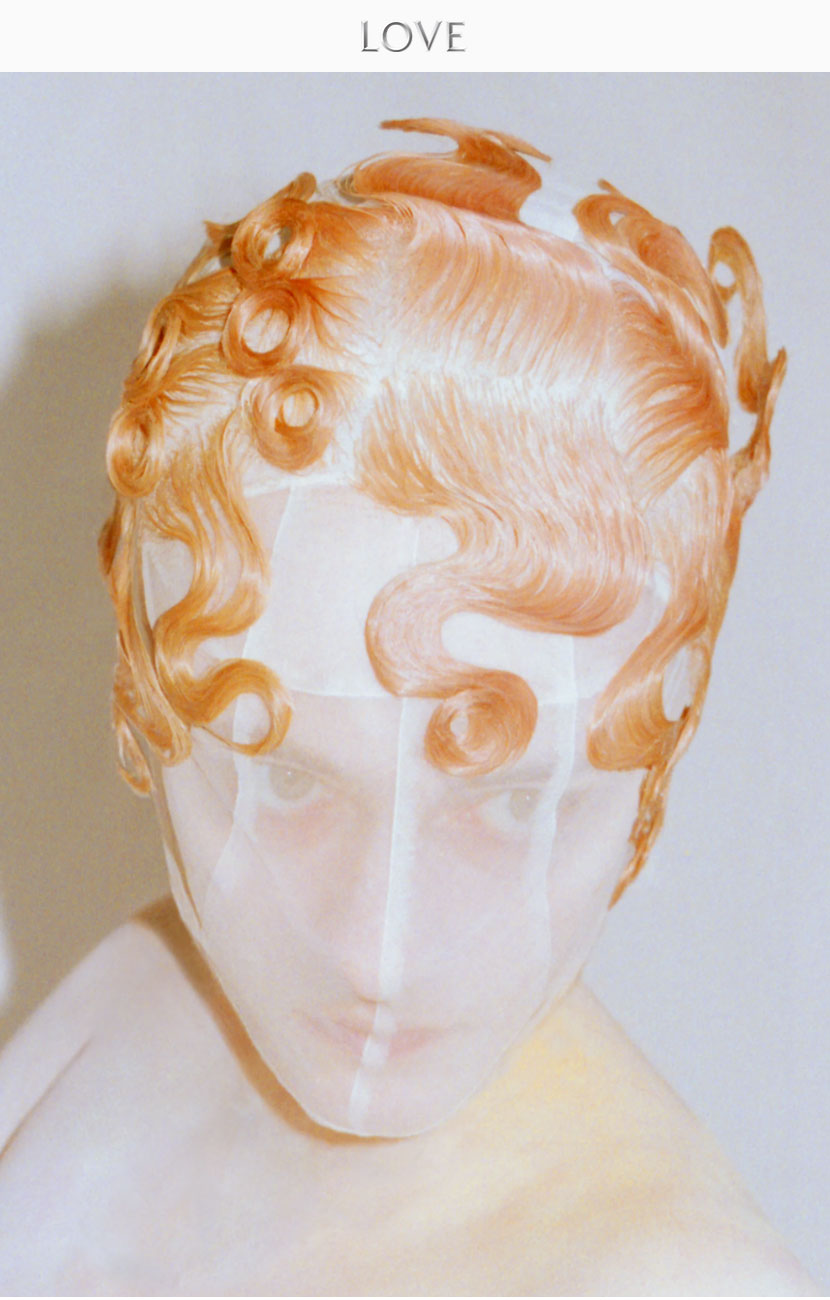
The self-titled "specialist of total hair design," Tomihiro Kono was always excited by heading to the hairdressers as a child, sitting in the chair with a magaine cut-out of the mane he wanted to embody. Triggered by his childhood affliction, the Japanese specialist ventured into hairdressing in his native country, but strived to create wider expressions through hair, moving to London to pursue hair styling, and has since progressed to the more fearless sculptures he constructs with his artisanal wigs in New York.
His alliance to the artistry of hair stems from a longing to push the boundaries and the versatility of its conceptualisation. Influenced by avant-garde nuances, Tomihiro has turned his masterful hands to publishing, educating on the narrative of his uncompromising sculptures.
LOVE talks to wigmaker Tomihiro Kono about paving a neoteric narrative for the future of wigs, the unassailed iconography of Marie Antoinette and working with Junya Watanabe.
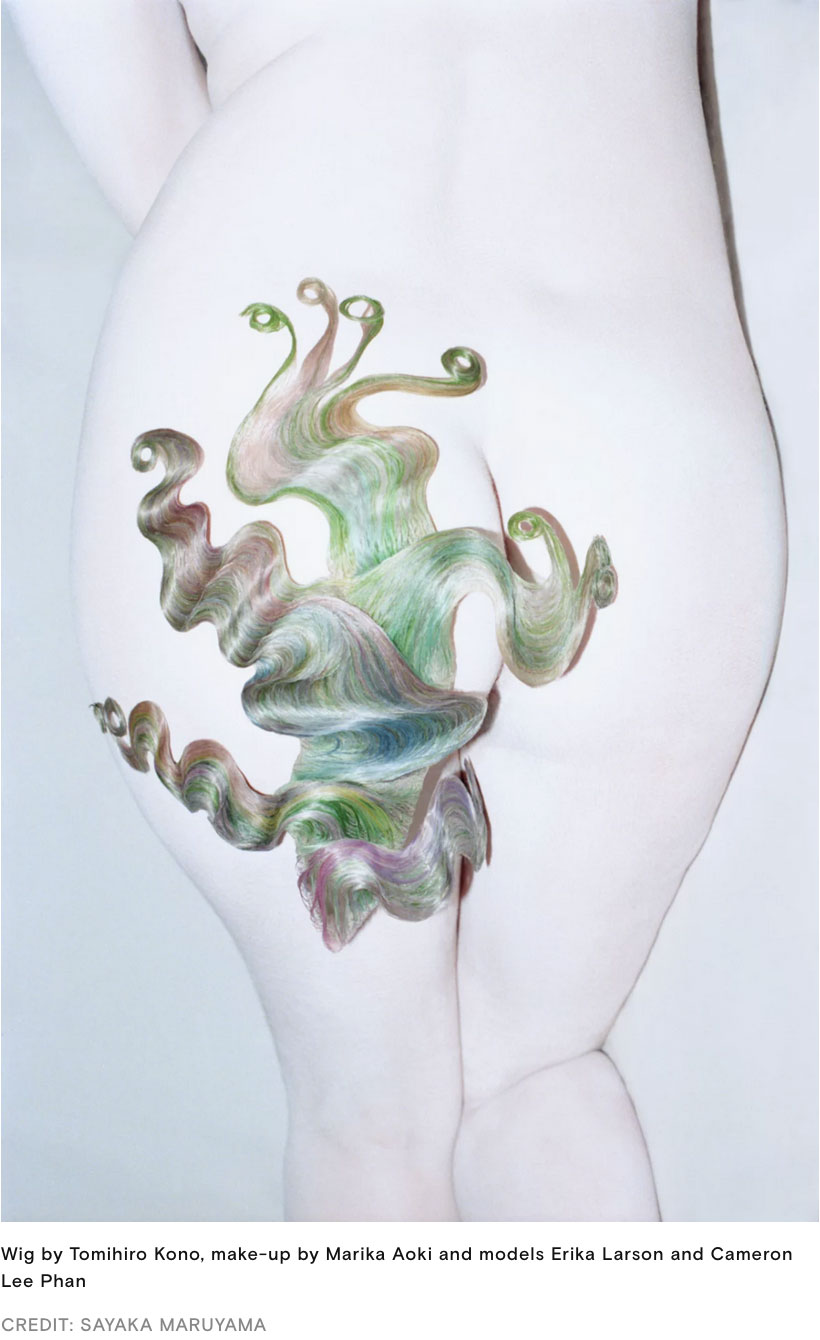 LOVE: How did you transition from a being a hairdresser to becoming a wigmaker and head prop designer?
LOVE: How did you transition from a being a hairdresser to becoming a wigmaker and head prop designer? Tomihiro Kono: My career started off as a hairdresser in Japan for 10 years, and then I expanded my hairstyling skill as a session hair stylist and head prop designer when I moved to London. Since 2016, I have been focusing on wig making in New York. These transitions were kind of a natural development for me to be a specialist of total hair design. It sounds like I’ve changed my occupation many times because I have multiple roles, but actually it all stems from me being a hair stylist. So I would say I’ve been trying to push a boundary, extend the possibility of a single hair stylist's work. I like acquiring new techniques for wider expressions.
LOVE: Were you interested in hair growing up as a child?
TK: I grew up in the countryside and there weren’t many entertainments in town; going to hair salons to get a new haircut was such an exciting thing. I used to take a magazine cut-out of a fashion icon with me to get the same haircut.
LOVE: Why did you decide to move to London from Japan? Was it a difficult transition?
TK: I decided to move to London in 2007. There had been a big influence from British culture inc: music, fashion, youth culture and that was so attractive. I didn’t speak English at all, so in the beginning this was difficult, but people were very nice and I felt a creative connection beyond a language barrier with them.
LOVE: What negative connotations are you hoping to dismantle with your work?
TK: People don’t understand when one person has versatile skills... the negative connotation for me would be the fact that people tend to categorise each other in one occupation. I think it’s due to a lack of imagination and proper research. That’s a reason why I make books, to educate people on the variation and the range in the depth of my work. I understand that it’s hard for people to imagine the process, by only seeing the result, so I’d like to share the process/thoughts/vision more with people from now on.
LOVE: If you could design a wig for anyone, dead or alive, who would it be and why?
TK: Björk! She’s been one of the best inspirations at all times.
LOVE: What's one of the greatest wigs you've ever seen that has inspired you?
TK: Monsieur Antoine’s amazing wigs, like these.
LOVE: Tell us about your upcoming books, Personas and Floral Beings. What made you want to articulate your practice into a book and venture into publishing?
TK: I think it’s very important to record personal practice in a tangible form, which for me was a book, as I’ve always loved the materiality of books even we are in the digital age. I think people should appreciate the work more. Images are becoming more consumable in a short term so I wanted to retain my creation reflecting my own voice. With books I can share not only my practice and images I make, but also my vision, thoughts and the process of creation. So the book itself reflects myself. I established konomad editions in 2017 as an independent publisher with my partner Sayaka Maruyama, as we find future possibilities in publications. Currently we are working on two books, titled Personas and Floral Beings. These two books will be out in same period of time. Personasis a portrait series of different wigs- a conceptual book related to hair styles and identity and reflecting current topics in the world. Floral Beings is a series of photography that reflects our beauty aesthetic, an appreciation for the beauty of human beings. Both books are related in terms of an art of wig making. But we present them in different expressions.
LOVE: How long does the average wig take to make?
TK: 1 week for a normal human-size wig, I would say. Making foundation from scratch, knotting hair, coloring, cut and styling included.I’m getting faster as I train myself.
LOVE: What cultural references do you cite your inspiration from?
TK: Worldwide cultures, music, films, art, Japanese pop stars.
LOVE: Which head prop and wig are you most proud of?
TK: Junya SS15 and AW15. I like the SS15 Futuristic Doll series, because that was the first ever head prop that was flat. Complete 2D.
In contrast, the AW15 was 3D heads that were based on the idea of drawings of 3D hair cut diagram. And I was very impressed how my head props matched perfectly to the clothes, asI hadn’t been provided with any information about the clothes they were making…. That was how we worked.
LOVE: How long did it take you to create the Marie Antoinette-esque wig?
TK: 1 month, the wire structures inside were quite time-consuming.
LOVE: If you were to design one of her wigs, what would it be like?
TK: I would love to make a massive fantastic wig with flowers, bird nest ton top of the headand real tiny birds come and go humming. The color is black, and gothic. She’s the all-time core inspiration source for me, there’s nothing more honourable than that. I would have come up with special design just for her.I’ve always loved European sense of beauty.
LOVE: What do you think the future holds for wigs?
TK: Maybe there comes a period when robots start wearing custom wigs?
LOVE: How has your Japanese heritage influenced your work?
TK: Maybe not directly influencing my work itself but the Japanese craftsman’s mentality is definitely in the basis of myself, in terms of repeating trainings.
LOVE: What was your experience like collaborating with Junya Watanabe? How did it come about?
TK: Our collaboration started in the winter of 2014 Junya asked me if I was up for doing his show, and I was very happy & proud to be asked for it. I don’t think it’s ordinary way of working with designers, but I come up with random ideas/designs that I’m currently into, and propose them to Junya until he says yes, so the collaboration with him was intense but a very interesting creative journey.
LOVE: You've lived in Japan, London and in NY. What's your favourite thing about each place? How has travel influenced your work?
TK: Japan = home and food, London = meeting creative people and New York = a more personal time for myself. So ideally, I’d like to find a place where it combines everything… My travel influence is to get the best balance between input and output by traveling around as I get inspirations in every city I visit.
LOVE: If you were to capture your personality in a wig, what would it look like?
TK: Avant-garde floral wave like this contemporary version of the finger wave. This kind of romantic floral, avant-garde sense is very me.
LOVE: What are some of the most unique materials you've used to create your wigs?
TK: Dog’s hair that I’ve collected from Dog groomer's. It was kind of an experiment.
LOVE: What was the first wig you ever owned?
TK: A professional Geisha wig in a proper box I bought at antique market in Japan.
Office thrives off individuality—and local Japanese artist Tomhiro Kono, is no exception. Creating custom wig designs, Kono’s craft proves to be completely one of a kind, drawing inspiration from, "New Romantics, 80-90s Japanese animations and Japanese street culture." Hair acts as a symbol of full self-expression and Tomhiro Kono designs hair accessories that allow an awakening for experimentation within oneself. It’s not about changing who you are, or hiding behind beautiful layers. This art form is about connecting with an unknown, yet a present piece of yourself. Now joining forces this September with OTOE, a local vintage store located in Tokyo, Kono hopes that the future of self-expression continues to intertwine with his wig artistry. We now propose the question—what wig would you wear?
 Where are you from?
Where are you from?Ehime, Japan.
What do your wig creations mean to you?
Arts and crafts. Meditating work. A medium for transformations.
Define self-expression in your own words.
It means to visualize own aesthetic to share with people.
How do you create a wig from scratch? What is the process?
I make the foundation by using lace fabrics in the ideal head size. Then, I knot hair strands into laces the—face line is the most intricate and sensitive part and it's where I use very fine lace.
What is your favorite wig creation?
The massive blond Marie-Antoinette looking wig.
Is there a wig best seller?
It's not the best seller, but many people love the blond and dark ends that Gigi Hadid used for W mag! The bestseller would probably be fancy partial wigs.
If you were a wig, which wig would represent you?
Black topper with a geometric haircut.
What inspires your wigs?
Music, color trend and history ... it's a mix!
Why did you decide to collaborate with the vintage store OTOE?
OTOE has been one of my all-time favorite vintage shops, that’s why! Not only are the selections of clothing very cool, but so are its customers.
What do you see for the future of wigs?
I am hoping wigs to be more casual and easy-to-wear fashion items like accessories.
Do you view your creations as art or beauty pieces or both?
For me, it can be both. Art can be a beautiful piece and vise versa.
Collaborations with Comme des Garçons and Proenza Schouler have left us in awe
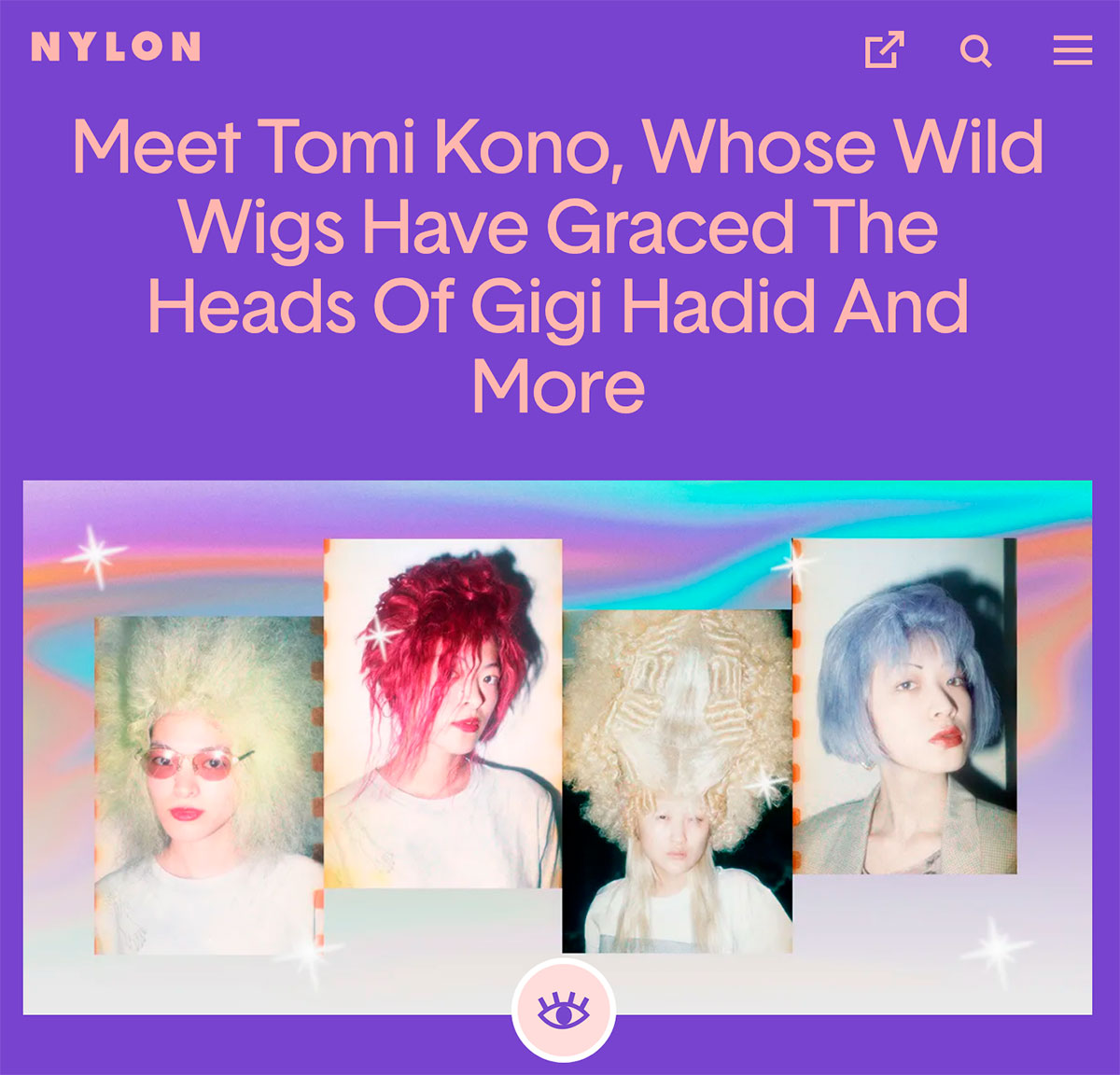 Stepping into Tomi Kono's Tokyo exhibition earlier this spring was akin to entering another world. Inside a sunlit room constructed almost entirely out of windows (at the gallery space called Place by Method in Shibuya), his creations hung from clear strings attached to the ceiling. A platinum blond-and-black wig Gigi Hadid wore; Grace Coddington-inspired, fiery red, fluffy curls; quirky braids with beads; and colorful mohawks (the latter two posed as tributes to Japanese icons in entertainment from the '80s) were all there. And perhaps the most innovative part of the show was the fact that anyone who walked in could try on every single one of the styles and snap a selfie to reveal a total transformation.
Stepping into Tomi Kono's Tokyo exhibition earlier this spring was akin to entering another world. Inside a sunlit room constructed almost entirely out of windows (at the gallery space called Place by Method in Shibuya), his creations hung from clear strings attached to the ceiling. A platinum blond-and-black wig Gigi Hadid wore; Grace Coddington-inspired, fiery red, fluffy curls; quirky braids with beads; and colorful mohawks (the latter two posed as tributes to Japanese icons in entertainment from the '80s) were all there. And perhaps the most innovative part of the show was the fact that anyone who walked in could try on every single one of the styles and snap a selfie to reveal a total transformation.
As a Japanese wig designer and hairstylist, Tomi Kono has virtually created a brand-new category in the editorial world. Kono crafts lifelike wigs and headpieces in dramatic colors and shapes for runways for brands like Proenza Schouler and Comme des Garcons. Some of his pieces are so unique, such as the aforementioned Gigi Hadid piece, that people reach out and contact Kono to buy them, when, in fact, they aren't even for sale. And the Tokyo exhibition, dubbed Personas, was one of several that he has presented around the world. He's also had shows in Paris and New York and also published a book on his process of making headpieces, going into deep detail on the many interesting head props he has crafted for the Japanese designer Junya Watanabe, who is a part of the Comme des Garcons family. That's not all: He's worked with Vogue Italia, Vogue Japan, Vogue China, Vogue Germany, Vogue Korea, T Magazine, Interview, W Magazine, V Magazine, Mert and Marcus, Patrick Demarchelier, Ben Hasset, Derek Lam, Jil Sander, Roberto Cavalli, and many more.
"I have always been obsessed with transformations," explains Kono. "I like to change the models' character completely into a different person. I like the fantasy and creativity in the process. That's why I started making head props as an extended element on heads, and then I started making wigs." Interestingly, though wigs seem to be the artist's latest focus, it wasn't until after 2017, after his book was published, that he was inspired to start making them from scratch. He knots, colors, weaves, and individually strands each one. "Wigs have the power to change a person's persona, instantly," he adds.
Some of his most well-known work, however, was for Watanabe. Known for avant-garde geometrical shapes that project out of jackets and dresses, as well as a penchant for the color black and punk style, Watanabe often includes headpieces in his shows. "I don't see what he has been making, even the colors of the clothes. I'm not given any information," says Kono of the process. "For all nine collections I did with him, I worked with him was like that. It was a complete guess, and I had to come up with many ideas and proposals." One of his favorite collaborations with the designer was the Spring 2015 show, where models marched down the runway wearing colorfully graphic outfits with matching PVC halos by Kono.
As for his creative process when it comes to his wigs, which range from almost every color, style and texture imaginable, he says it's something he works on nearly every single day. "Making wigs from scratch is time-consuming, so it's becoming my daily routine," he explains. "Whenever I have some spare time, I knot hair into laces. Styling is the very last thing to do, as it doesn't last long." At his Personas exhibition, the master stylist had a small team with him who helped visitors try on each wig (a harder process than one might think, given the weight and volume of some of them), as well as brush and style them.
One of the other unconventional projects Kono has taken on recently is making wigs for a portrait series for the photographer Jeff Bark, who had an exhibition called "Paradise Garage" last month at Palazzo Delle Esposizioni in Rome. The project explores surreal, baroque scenes in Bark's own garage, and the wigs that Kono created are fitting. Kono falls into a unique role as he pushes the boundaries of the role of a hairstylist and wig maker, constantly working on atypical projects. For example, he also collaborated with a Tokyo antique shop Tatami Antiques to stage an exhibition of antique-inspired wigs. "I want to do collaborations with people with other industries such as architecture or product design," he explains. He also just launched T-shirts at Vacancy Projects Salon and has an upcoming (September 4 to 6) group exhibition with other emerging designers and artists, titled "I just αm," at Rooms Tokyo, presented by H.P. France. More info> NEWS section
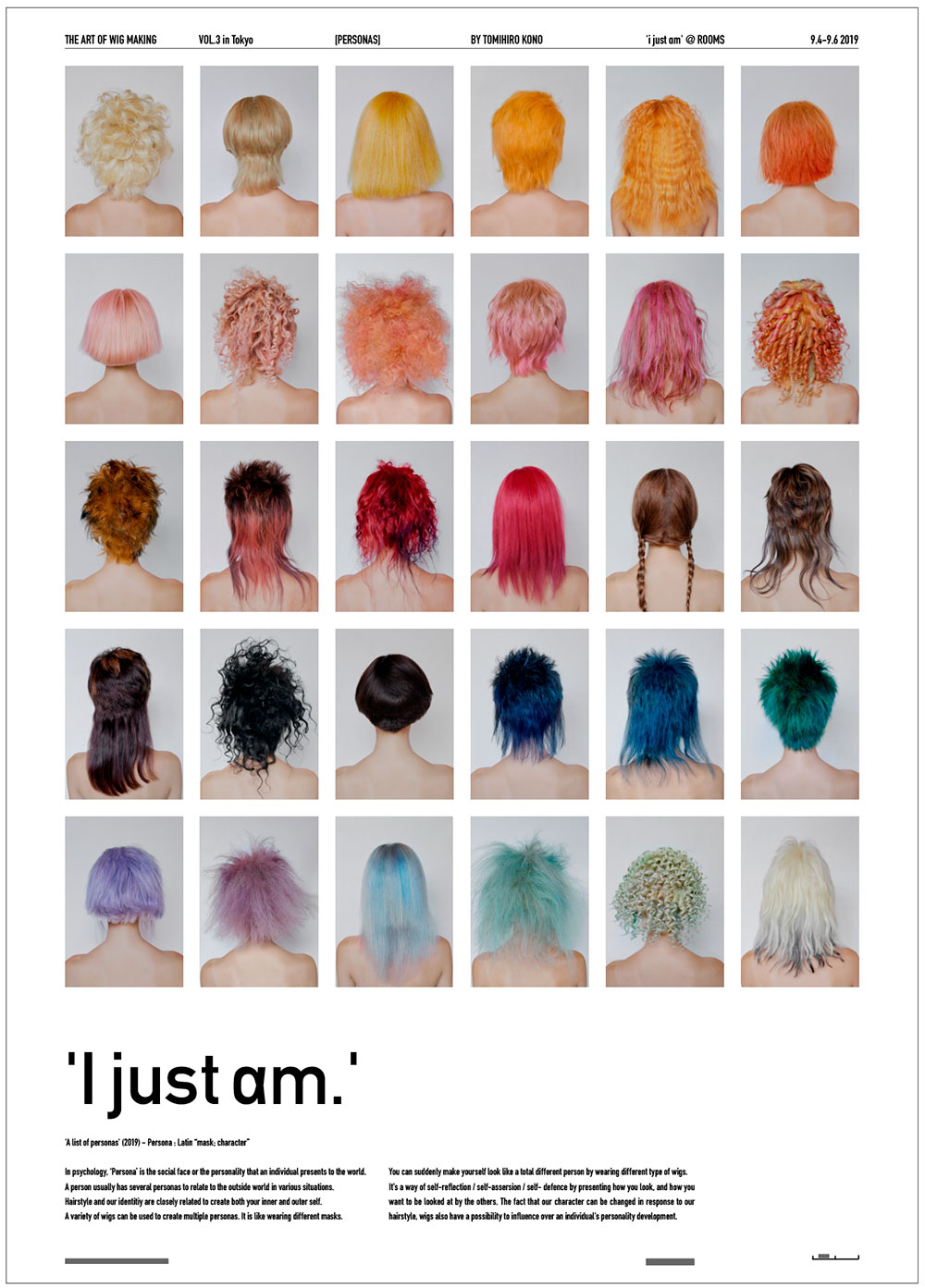 Perhaps one of the most unique things about his work is that he's bringing wigs to spaces where one usually wouldn't see them: antique shops, art galleries, and portrait photography. His pieces are undoubtedly works of art, and rather than just use them in an editorial photoshoot and then store them in his personal archive, he's able to bring them to the masses so people can experience them. Kono's exhibitions come with a not-so-precious approach which is also unusual for almost any other form of art: "To actually feel and see how realistic the wigs are, I think people need to touch and wear it," he says. "Wigs can easily be damaged, because it's made of very fragile lace net, but I accepted this concept with courage and confidence."
Perhaps one of the most unique things about his work is that he's bringing wigs to spaces where one usually wouldn't see them: antique shops, art galleries, and portrait photography. His pieces are undoubtedly works of art, and rather than just use them in an editorial photoshoot and then store them in his personal archive, he's able to bring them to the masses so people can experience them. Kono's exhibitions come with a not-so-precious approach which is also unusual for almost any other form of art: "To actually feel and see how realistic the wigs are, I think people need to touch and wear it," he says. "Wigs can easily be damaged, because it's made of very fragile lace net, but I accepted this concept with courage and confidence."
Tomi, what is your first memory of glamour? “I bleached my hair with Coca Cola.” Takako Noel captures the unbridled joy of Tomi Kono’s wigs let loose in Tokyo.
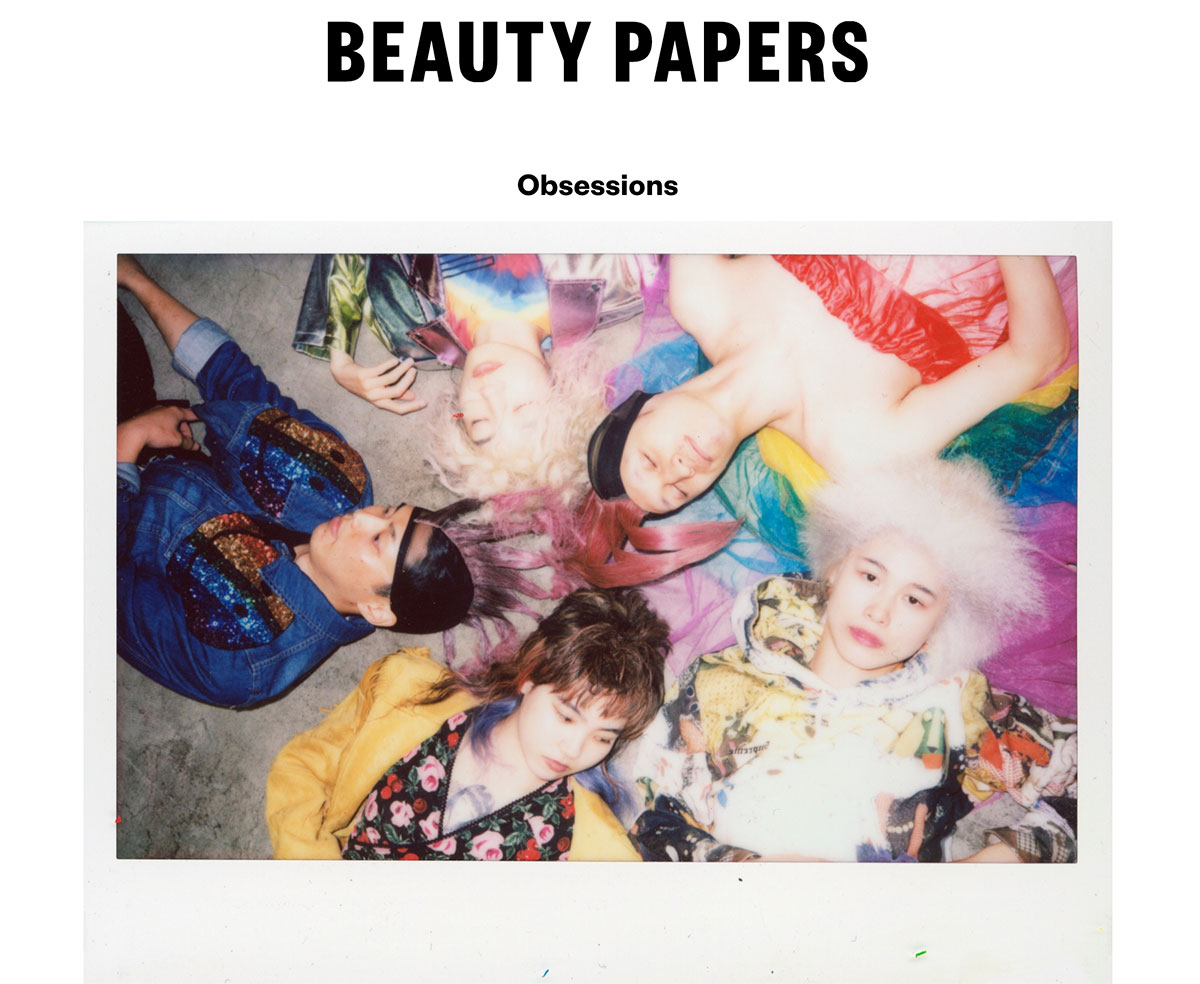

Wig wizard Tomi Kono has been letting the public loose on his hairy creations. “I think it’s more exciting for people to actually wear the wigs, and get involved. I see them getting very excited and obsessed with their instant hairstyle change.” The second of his touring interactive exhibitions was held in Tokyo and photographer Sayaka Maruyama captured the visitors wigging out. Photography SAYAKA MARUYAMA Hair TOMI KONO Interview JOHN WILLIAM View Images image description image description Beauty Papers: What was the last beautiful thing you saw? Tomi Kono: Cherry blossom in Japan early April. It was beautiful and special indeed. BP: What was the idea or the inspiration behind these images? TK: To see the transformations of Tokyo kids wearing my hand-made wigs. They are wearing their own clothes and make up so it’s more documentary. It was an experiment to see how wigs can change your personality… without cutting or colouring your own hair. When I make a book or put together an exhibition, it comes from inside. What do I really want to do? For my last exhibition, where we created these images, my hair inspiration was musicians and pop stars from the 1980s. Back then they had such iconic hair styles and so I reinterpreted them with modern wigs and colours.
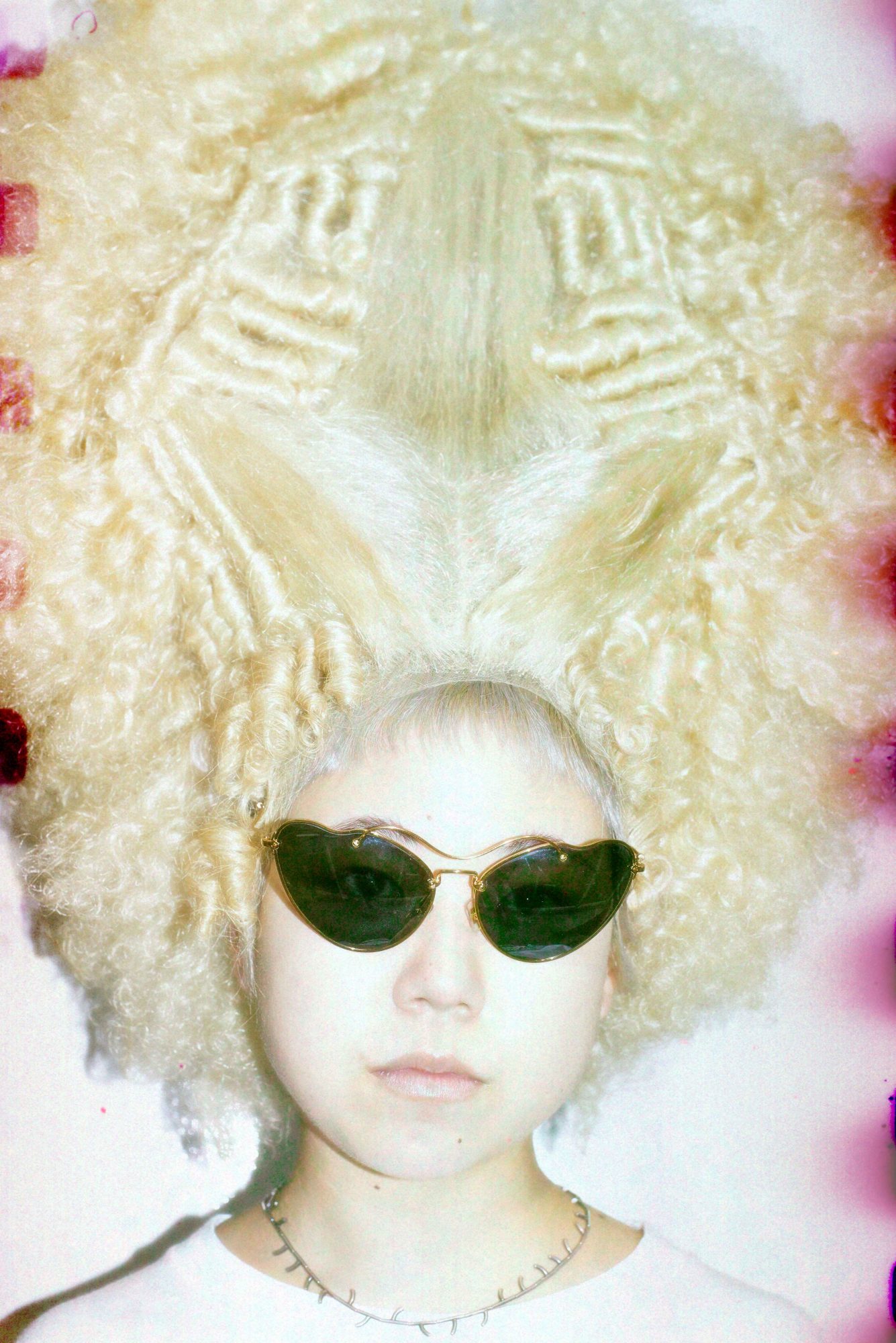
There was a sort of unintentional correspondence between Aganovich's Haute Couture S/S 19 collection, showcased in Paris during the local high fashion week, and the headpieces created by Japanese hair artist, head prop designer and wig maker Tomihiro Kono (河野富広) to complement the designs.
Both garments and wigs seemed to hide indeed a sort of duplicity: the clothes looked at times unfinished or mixing two patterns and prints together in the same designs.
In the same way the half wig/half mask headpieces were in some cases integrated into the designs or used in a decadently decorative way, almost as ties and bows.
Tomihiro Kono actually devised the idea of wig-cum-mask a few months before this show, while experimenting on his avant-garde wigs, and the headpieces ended up accessorising the garments in a striking way.
The main narrative behind the show - the second since the French Chambre Syndicale de la Haute Couture invited Nana Aganovich and Brooke Taylor to become pat of the high fashion schedule - told the story of a woman on a journey.

The latter could have been interpreted in many different ways: it could have been a journey through space, so from one place to another, or through the runway space - a carpenter's workshop - with models walking along the machines.
But it was also a journey through time, since the designs included historical references and Victorian moods (see the black gowns that wouldn't look out of place in a Gothic fantasy series à la "Penny Dreadful") and details such as the shoulder construction or the feather elements on jackets and skirts, combined with more modern, almost punk, touches.
The journey through time theme was also evoked by the treatments imposed on the fabrics that at times seemed to have been bleached or reduced to pale ghosts of their previous selves.
Last but not least, this was a personal journey through a multiple personality in constant evolution: we all change, the designers seemed to say, and that's why the models often donned clothes with unfinished hems that unravelled behind them, or represented a wide range of characters, from younger punks and rebels, to romantic yet strong girls (check out the white dresses with feathery hems matched with boxing style boots kept together by safety pins...), women ready to fight and more mature ladies, elegant and maybe finally happily content in their hearts.
The design duo employs for these designs the same patterns of their ready-to-wear collections, but the materials are different and more luxurious when it comes to Haute Couture: gold paint decorated for example a white shirtdress and refined textiles by Venetian Rubelli (for that Sofia Coppola's "Marie Antoinette" touch) were used for a sleeveless gown (Aganovich already used Rubelli's fabrics in their previous Haute Couture collection).

Tomihiro Kono's veiled masks hid, revealed and constricted the models' heads adding a mysterious edge to the collection.
The main theme of the collection was a woman's journey: did this inspiration reflect also in your headpieces?
Tomihiro Kono: Not really. I proposed my idea of using partial hair attached on masks 6 months ago to a designer. The theme of my pieces was Anglomania - so I combined punk, the looks of British fanatics and maniacs, mohawks, suede cuts, hairstyles inspired by the curly wigs of High Court Judges and 18th century styles. The idea was mixing royalty with eccentricity. That's why I also bleached hair partially to get some worn-out effect that matched the textures of clothes and I dyed the wigs unevenly mixing different colours.

Compared to the previous Aganovich Haute Couture collection in this one your wigs seem to have expanded into the clothes: in some looks they were used as ties or they seemed to be integrated into the clothes. Do you feel this is a new development and direction for your wigs? Do you see them becoming part of the actual outfit, rather than just something used to accessorise it?
Tomihiro Kono: Soon after I started wig-making I realised that wigs can be attached anywhere - so they don't need to just stay on the head, but they can be reinterpreted as expansions. In this case it was a positive collaboration between clothes and hairstyles. For a unique show like this one a wig can become an integral part of the clothes to create a strong character that may reflect the designer's vision. It may become also something interesting to see for the audience, something that adds a little bit of fantasy. Besides, historically speaking, hair was used as a part of costumes, so it can also be employed in a ritual way like an amulet, an accessory. Last but not least, think about the hair used as part of a warrior's clothes.
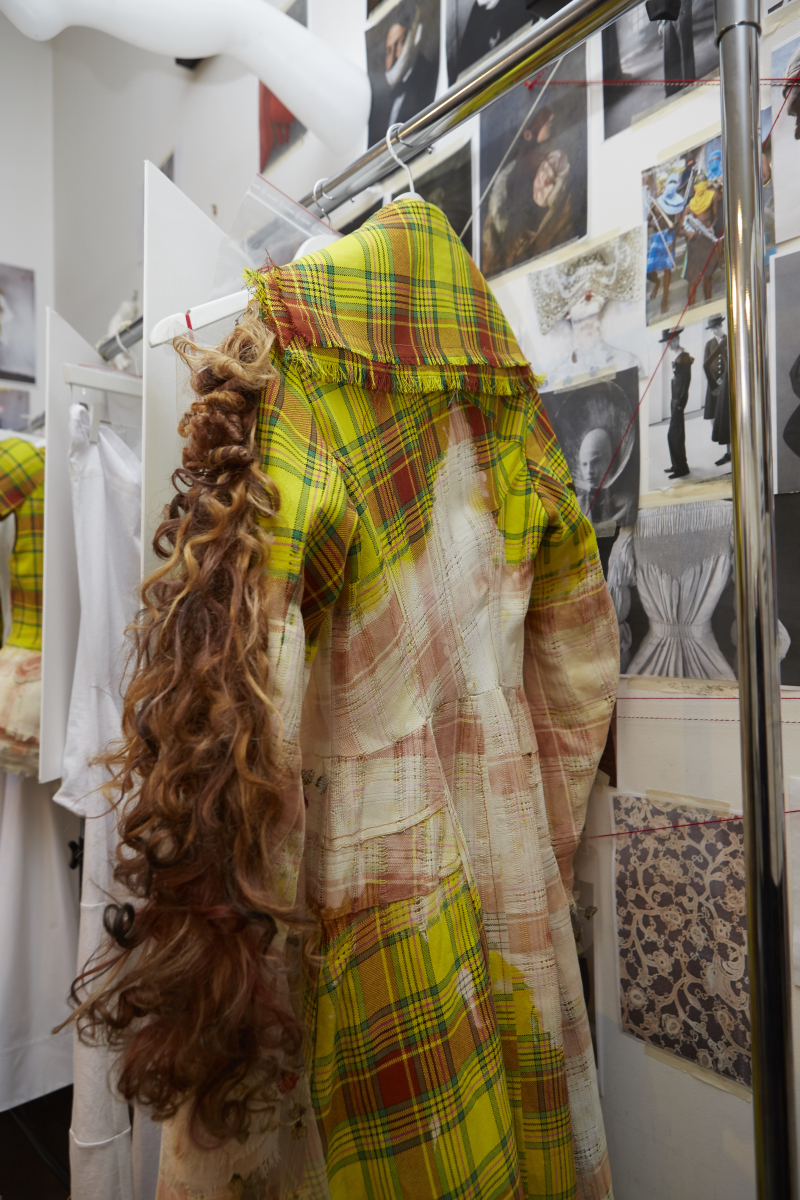
Which was the most difficult piece you made for this collection in terms of technique or materials?
Tomihiro Kono: These two pieces. Colouring the hair was a very difficult process as I used bleaches. I didn't want to damage the piece but I needed the effect.
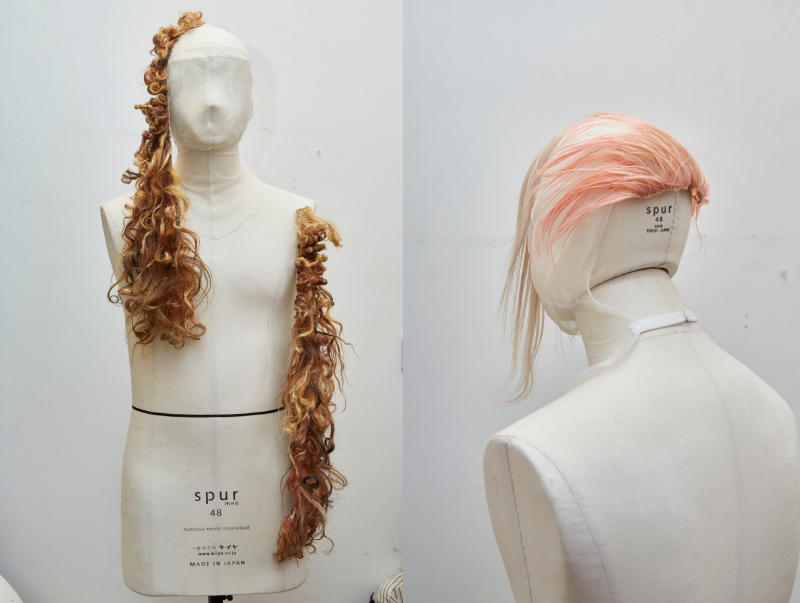
Will you be working on any new exhibitions/installations soon?
Tomihiro Kono: In early April I’m producing an installation exhibition in Tokyo in collaboration with Tatami Antiques. The concept being the exhibition is Japan, Spring and Hanami (cherry-blossom viewing). I will be exhibiting some wigs and head props especially made for this exhibition. Stay tuned!
Image credits for this post:
Wigs by Tomihiro Kono; all images in this post courtesy and copyright Konomad / Photography: Wanderlust by Isa Bono unless otherwise credited.
One of the most frequent challenges fashion designers end up facing in their careers is trying to find the perfect balance in their collections between commercial pieces and more creative and conceptual (and therefore more expensive...) designs. It is therefore not uncommon for many designers to give up their more avant-garde ideas in favour of less original, but definitely more saleable creations.
Nana Aganovich and Brooke Taylor may instead just have found a way to avoid finding difficult balances between commercial and original forces and compromising their creativity: this July they were indeed invited by the French Chambre Syndicale de la Haute Couture to show on the high fashion schedule.
The design duo limited the number of designs on the runway (a space outside their 11th Arrondissement atelier) to 12 looks, and borrowed many inspirations from their ready-to-wear pieces, recreating some of them with couture fabrics and luxury textiles.
Many designs bore therefore the duo's trademark passion for pieces inspired by history in which they injected Victorian moods à la Dickens or Gothic details of the kind that Miss Peregrine in Ransom Riggs' books about the extraordinary Peculiar Children would favour.
Black prevailed at the very beginning of the show with ample sculptural skirts and pants matched with ruffled white organza shirts, black brocade skinny suits paired with shirts decorated with multiple layers of organza around the neck, a black leather jacket that looked as if it were made of plastic, and black deconstructed mourning dresses.
A Marie Antoinette palette was introduced thanks to brocades by Venetian Rubelli (it is worth remembering that costume designer Milena Canonero turned to Rubelli for the gowns in Sofia Coppola's Marie Antoinette), employed for frock coats characterised by pleated motifs on the front and matched with light powdery pink or cream skirts.
Even though these designs clearly showed a historical derivation, none of them looked like costumes: the emphasis was indeed on creating a refined artisanal offer for Aganovich's private clients interested in acquiring bespoke pieces.
That is also the main reason why the designers turned to milliner Stephen Jones who created two headpieces for this runway, and to Japanese hair artist, head prop designer and wig maker Tomihiro Kono (河野富広) who worked on the colourful wigs that gave a contemporary punk twist to the designs.
Fresh from an exhibition of wigs at The Community in Paris, Kono opted for rebellious looks that broke with the romantic brocades in pale blue and peach, and called to mind the flamboyant hairstyles in Miloš Forman's Amadeus.
You can bet this experience will be chronicled and recounted in detail by the hairstylist and wig maker in a new book, maybe a follow-up to "Head Prop: Studies 2013 - 2016" (Konomad Editions), but, for the time being, you can learn more about it from this brief interview with Kono.
What does Haute Couture represent for you?
Tomihiro Kono: For me, Haute Couture represents a dream, even though I don’t find so much difference between Haute Couture and Ready-to-Wear actually, because the designers I have worked with are quite specific in their styles, so every look is bespoke anyway. This Aganovich show only featured 12 looks, and that made it very special since you didn't get that classic army-style runway in which every model looked the same, but each model became a character with her own fantastic aesthetic. I have always loved one-off, bespoke pieces as opposed to mass production.
Is this the first time you took part in a Haute Couture show?
Tomihiro Kono: Yes, it was and for me it was as if one of my dreams had become true.

How did the collaboration with Aganovich happen?
Tomihiro Kono: I met Nana Aganovich and Brooke Taylor two years ago when they were doing Ready-to-Wear and they asked me to collaborate with them on their A/W 2016 runway. They really loved the bandage hairstyles I did and, in between a glass of wine or two, we shared our creative visions. I started making wigs from scratch two years ago using a time-consuming handmade process that consists in making a foundation, knotting hair strands into it and colouring, cutting and styling the wigs into any shape. It takes a lot of patience to go through this process, but it's really worth doing it since it can be considered as real couture. I have presented some of my most recent designs during my compact exhibition "Wigs (Perruques)" at The Community in Paris. Brooke and Nana absolutely loved my wigs and my idea of "hair-couture", so this collaboration started from there.
Did the designers give you a theme or a story you could develop while working on your wigs?
Tomihiro Kono: They didn't give me any specific theme, but we share some common aesthetics, so it was a natural process in which we tried to match clothes, wigs and models as we did the fittings.
There was a historical component in the clothes with some designs evoking a sort of Marie Antoinette style - did those design inspire the pastel shades of some of your wigs?
Tomihiro Kono: The Aganovich duo has a specific taste in their clothes that evokes historical elements. I personally like that, but I wanted to break up with classical elements and I opted to use pastel coloured wigs to make the garments look fresh and young. I also wanted to avoid coming up with a very traditional image, so I aimed at making more contemporary pieces with new, energetic vibes.
You spent quite a few weeks in Europe and now you're back in New York: did you find any inspirations while being in Europe for your wigs/hair styles?
Tomihiro Kono: Europe is more or less my home, everytime I visit I get inspired by the European aesthetics. What inspires me the most is that people in Paris really appericiate what I do, they do have a lot of respect for the artisanal spirit and I like this attitude. During my exhibition at The Community in Paris people were willing to try my wigs on and stopped to ask me how I made them and so on and that felt really encouraging. Maybe I should move back to Europe at some point!
Image credits for this post:
Wigs by Tomihiro Kono; Images in this post courtesy and copyright Konomad
Bio: A true creative, Tomihiro Kono started his career as a classically trained Japanese hair stylist. His passion for hair soon lead him to begin exploring more creative hair and head designs, leading to Tomi’s very own head prop designs. In 2007 Tomi moved to London and branched into session styling, quickly shooting for Dazed & Confused, i-D, and 10 Magazine. He continued to exhibit his head props and began using these in his editorials, making bespoke pieces. Tomi is now based in New York and is represented by Julian Watson agency. His impressive portfolio consists of numerous shoots for worldwide Vogues, L’Uomo Vogue, Luncheon, Document journal, Interview, W Magazine and V Magazine. About this project: In the gallery space of the Community, 65 Rue du Château d’Eau Paris, Tomihiro Kono’s wigs will be hung from the ceilling as if they are floating in the air. Each wig is beautiful as an object. Tomihiro hand-stitches each of these wigs, strand by strand into a lace net, for over 50 hours a piece. "Making wigs from scratch, is a time-consuming work but I feel like I am making my own art piece. It can be quite meditating for me.” Instead of using a sewing machine, he drapes the lace on the head block. He uses knotting hook and fine nylon thread to sew the lace together. The hairs are individually knotted to the lace foundation in various directions that follows natural hair growth. He respects traditional wig making. As a partecipative art exhibition, people were invited to come in for trying on some wigs, while Tomihiro was working on making wigs in the gallery space. The documentation of people visiting and trying on wigs will later be included in the second book about wigs by Tomihiro Kono published by konomad editions.
Tomihiro Kono took over Paris gallery ‘The Community’ to showcase an edit of his fashion hairpieces – and invited visitors to get involved
The Rue du Château d’Eau in the 10th arrondissement is a so-called mecca of hair salons in Paris. Home to a huge number of hair suppliers, wig makers, and beauty stores, the area is also where The Community chose to set up shop. Taking over an old barber shop – the traces of which can be seen in the marks on the wall where mirrors and display cases have been removed – The Community was founded by an art collective of the same name, and has played host to a series of exhibitions, events, and fashion parties.
Last weekend saw the space taken over by renowned wigmaker Tomihiro Kono, who created an installation showcasing his handcrafted hair pieces. Kono was taught the art of Geisha hairstyling by a Japanese master and has collaborated with the likes of Junya Watanabe and Comme des Garçons throughout his two-decade-long career, making each wig from scratch – he painstakingly hand-stitches each and every strand of hair onto fine lace net.
Amongst the wigs on show were towering, Victorian pieces and Rococo-era bouffants inspired by Marie Antoinette’s signature look, all the way through to punky, spiked, and brightly-coloured styles. “I dye each by hand to make special one-off colours, and I wouldn’t say I have a favourite,” explains Kono. “The long red hair, which people call the Grace Coddington, the peachy orange mohican, or the short bright green bob are some that I really like though.”
Featuring wigs hung from the ceiling as if they were floating, people were also encouraged to try pieces on and pose for the in-house photographer, with the resulting images due to be released in a new book later this year. “Kids were especially excited to try on the wigs, although they were shy in the beginning,” says Kono. “I loved how it brought everyone together and the exhibition turned into an amusement park for people.”
As well as inviting Parisian locals to be a part of his photo series, Kono is also currently working on a personal project with Scottish photographer Albert Watson. Together, the two have been making theatrical characters inspired by A Midsummer Night’s Dream and clowns, and shooting them in a series of atmospheric settings. “When using extravagant, classic wigs, it’s easy to transform the models into fantasy characters,” says Kono. “We’ve been doing this series for a year now, and it’s a pleasure to work with such a legendary photographer as Albert. I like the dark and romantic mood of the images. They’ll be exhibited later this year in galleries in Canada and possibly Europe, too.”
Tomihiro Kono took over Paris gallery ‘The Community’ to showcase an edit of his fashion hairpieces – and invited visitors to get involved A true creative, Tomi Kono started his career as a classically trained Japanese hair stylist. His passion for hair soon lead him to begin exploring more creative hair and head designs, leading to Tomi’s very own head prop designs. In 2007 Tomi moved to London and branched into session styling, quickly shooting for Dazed & Confused, i-D, and 10 Magazine. He continued to exhibit his head props and began using these in his editorials, making bespoke pieces. Tomi is now based in New York and is represented by Julian Watson agency. His impressive portfolio consists of numerous shoots for worldwide Vogues, Luomo Vogue, Luncheon, document journal, Interview, W Magazine and V Magazine. We recently caught up with Tomi to discuss everything from the opening of his first ever wig exhibition in Paris, to his latest project with legendary photographer Albert Watson.
Q. What made you decide to start your career in hairdressing?
A. I was going to be a trimmer for dogs because I loved animals. When I proposed that to my parents, they suggested that I become a hair stylist for people instead. Their advice was basically that dogs never say thank you but people do. Once you can cut hair well for people, you can also do animal hair! So I followed their advice :)
Q. What made you decide to leave salon work in Japan and move to London?
A. I had worked in a hair salon in Japan for 10 years before I moved to London in 2007. I had a lot of cultural influences from London in terms of fashion and music so I had always wanted to visit. In the beginning, I was only going to stay in London for a year but I ended up staying there until 2012. I met many creative friends, it was really exciting to work there and at the same time it was very comfortable for me.

Q. It was in London that you started your session stylist career, it wasn’t long before you were shooting for the likes of Dazed & confused, i-D and 10 magazine. Tell us about that, was it difficult coming from Japan to London?
A. At the beginning of my career, I had a stall showcasing my head props in Spitalfields Market on Thursdays next to an antique dealers. I was lucky enough that Dazed and Confuzed came over to interview me about my head props. This is how I started my career as a sesson hair stylist in 2008, just a year after I had moved to London. It was difficult for me to start my career in London because I didn’t speak any english at all. My english was totally poor. It was quite stressful for me, when you have a lot you want to talk about but you just can’t do it.
Q. What advice would you give to young hairdressers who are thinking of leaving their home country to pursue their dreams?
A. It’s always challenging to move from your own country to other countries where they have a different language and culture. However, what I like about leaving my home country is that being in a totally different culture inspires me a lot in different ways. I think it’s a positive thing. You’ll have wider perspectives by living abroad, in terms of expressions, although it might take a while before you get used to the new environments. However, it is also important to have your own time, maybe a quiet period in your life. When you create some work, or you want to improve your skills, you need more time for yourself, without people distracting you so much. I apprecite both quiet & busy periods in my life. For me, coming to Europe is very exciting always.
Q. When and why did you decide to focus on making head pieces?
A. It was a big moment for head pieces and masks when I moved to London around 2007. Many stylists asked me to make something special for magazines. It was very organic the way I started. I‘ve been looking for my originality as a hair styling signature.

Q. In 2013 you moved to New York, why did you decided to move again?
A. Actually my agent asked me to move to New York, so it wasn’t my choice at first. I decided to move to New York without knowing much about the city and it was a big challenge for me.
Q. Your book “Head Props” is a real documentation of your work and creative process from 2013 - 2016. What made you decide to publish a book and share your ideas?
A. It’s a real documentation of my work indeed. It’s purely the record of my creations. Incomplete / unseen works are sometimes very interesting and most of the work / ideas are never seen by the public. People only have a chance to see the images from the show but not the process, behind the stages. By making this book, I wanted to share my ideas and the process, which will also be something interesting for me to look back in the future.
Q. Where can we buy your book? is it available in the UK?
A. I guess you can buy my book at Donlon books otherwise you can order at konomad, they will ship worldwide. - http://www.konomad.com/page/shop/book_HEADPROP.html
Q. Do you have a particular shoot/editorial or moment that you can say was one you will never forget?
A. Working with Albert Watson for a personal project in NY. We’ve been shooting a series of theatrical images with many different models. It was my dream to work with him.
Q. you have kindly given us a preview of your latest work with albert watson (see left). Being such an important project for you, can you tell us more about it?
A. I met with Albert at an editorial shoot for Vogue Japan. After that, he asked me to collaborate with him for his personal project. We’ve been making theatrical characters inspired by A Midsummer Night's Dream and clowns. By using extravagant / classic wigs, models can transform into the characters in fantasy. I like the dark and romantic mood. It’s always my pleasure to work with such a legendary photographer like Albert. It was pleasure to complete the series with him. We might still keep on shooting. He’s really passionate about our collaborations. He will be exhibiting these images in the galleries in Canada, and possibly in Europe. - www.albertwatson.net/
Q. What really inspires you?
A. Nature, art, the world, artists ateliers
Q. We are excited about your new focus, wig making. Tell us about the movement from head pieces to wigs? What is it that you enjoy about wig making?
A. I’ve always wanted to try making wigs since I started my career. Historical wigs are very inspiring and I wanted to know their structures and how they're made. Wigs have been around for hundreds of years and we still make wigs by hand, with almost the same techniques. It’s a kind of romanticism for me... To literally create wigs that I’ve always dreamt of making, being inspired by worldwide fashion and hair history. I appreciate the artisan mind, people who take so much time making one elaborate piece of wig. Wig making requires technique and patience. It’s a meditation for me, making wigs while listening to music.
My curiosity of hair design or head prop design never stop, however, now that I’m based in NY, that I feel like people want to see more believable hair-do, which wig can be more accepted in a way.
Q. Do you have a favourite wig and why?
A. I would say coloured short cut wigs. It’s fun to play with different haircut styles because I love hair cutting also. With wigs, I can try any radical, playful styles, there’s no limit in expressions.
Q. Your wig installation is soon to open in Paris. Tell us why you decided to showcase your wigs and what we can expect at the exhibition?
A. It’s actually my first exhibition in Paris, which is very exciting. I’ve been following the activities of 'the Community', an experimental art, fashion, design, publishing and culture space taking the form of a multidisciplinary platform based in Paris. I got inspired by their gallery spaces, so I contacted them a year ago and we’ve been discussing working together. Now my dream has come true. Finally I can do my exhibition with them.
Chateau D’eau where the community is based is the area where many beauty shops and hair salons are located. I heard that the building of 'the Community' used to be a hair salon in the past, so I thought it would be the perfect place to exhibit my handmade wigs.
My handmade wigs will be be hung from the ceiling to look as if they are floating in the air. I wanted to make them look more like art pieces, objects floating in the air. Also because I knot each strand of hair into the foundation lace, I want people to be able to see inside the wig as well as the outside. I'm fascinated by the beauty of wigs from the inside.
Q. It’s very exciting to hear that limited copies of the book and posters of “Head Props” will be available to buy at the installation in Paris. If we wanted arrange a book signing how would we do that ?
A. To be secure, please come to the opening on the 22nd, 19h00- 21h00. I’m going to be in the gallery most of the time, so Saturday - Sunday noon - 17.00 might be good. (I might pop out sometime)
Q. And finally what is your favourite tool?
A. My favourite tool is my hand ; )
Beginning his career as a classically trained hairstylist in Harajuku, Japan, Tomi Kono has become a true source of artistry and innovation in the high fashion hairstyling community.
After establishing a distinguished international career as a session hairstylist, Kono expanded his artistry to include head-prop design, an addition that has truly demonstrated the caliber of mastery this artist is operating at.
office had the pleasure of catching up with Kono the weekend of his first ever exhibition, entitled “Wigs (Perruques)," located at the Community in Paris. In many ways, his exhibition can be seen as the culmination of the very quality for which ‘the wig’ is universally revered: Within snapshots of visitors trying on his wigs, we see the innate ability of these hand-crafted masterpieces to transform an individual into anyone they want to be, if only for a moment.
Kono curated an experience that is simultaneously both individual and ubiquitous, micro and macro. So naturally, considering our penchant for paradox, we had some questions for the dude.
What is the significance of the location of your first exhibition? I know that while you were making wigs at the Community for this exhibition, you welcomed people to come in and try them on. What was your reasoning behind this?
The Community used to be a barber shop, and its location is the Mecca of hair and beauty salons. This place has a story profoundly connected to hair, so it means a lot for me to do an exhibition of wigs here; It has long been a dream of mine to use this location for my exhibition, to be on this exact street, rue du château d’eau. Most hairdressers come to buy supplies in this area during fashion week. It’s a little bit doggy and rough here, but it has such a rich culture.
I wanted people to come in and try on wigs because I wanted the exhibition to be more interactive. I also wanted to document the experiences of people trying on the wigs, which may be included in my second book about wigs in collaboration with Konomad edition. Although they were initially very shy, kids were especially excited to try on my pieces. I like how this exhibition turned out to be kind of like an amusement park for people.
I’m happy that there was a greater degree of diversity than I was expecting to see in the crowd. I think that wigs have a universality that transcends age.
Each wig you prepared for this exhibition is an art piece, and you are the artist. Are there any other artistic projects that you have been involved with or are currently working on?
I started my career as a hairdresser working at a hair salon in Harajuku. But I always wanted to express myself as an artist, so I started moving images, and making characters and photographs as a unit artist.
One of my favorite pieces is called “Neon O’Clock," and it’s in collaboration with my long-term partner and wife Sayaka Maruyama. Our basis has always been one sourced from an artistic background, so it feels organic for me to showcase my work at a gallery.
Hairstylist and wig maker Tomihiro Kono creates saturated, one-of-a-kind wigs elevated by pristinely crafted jewelry.
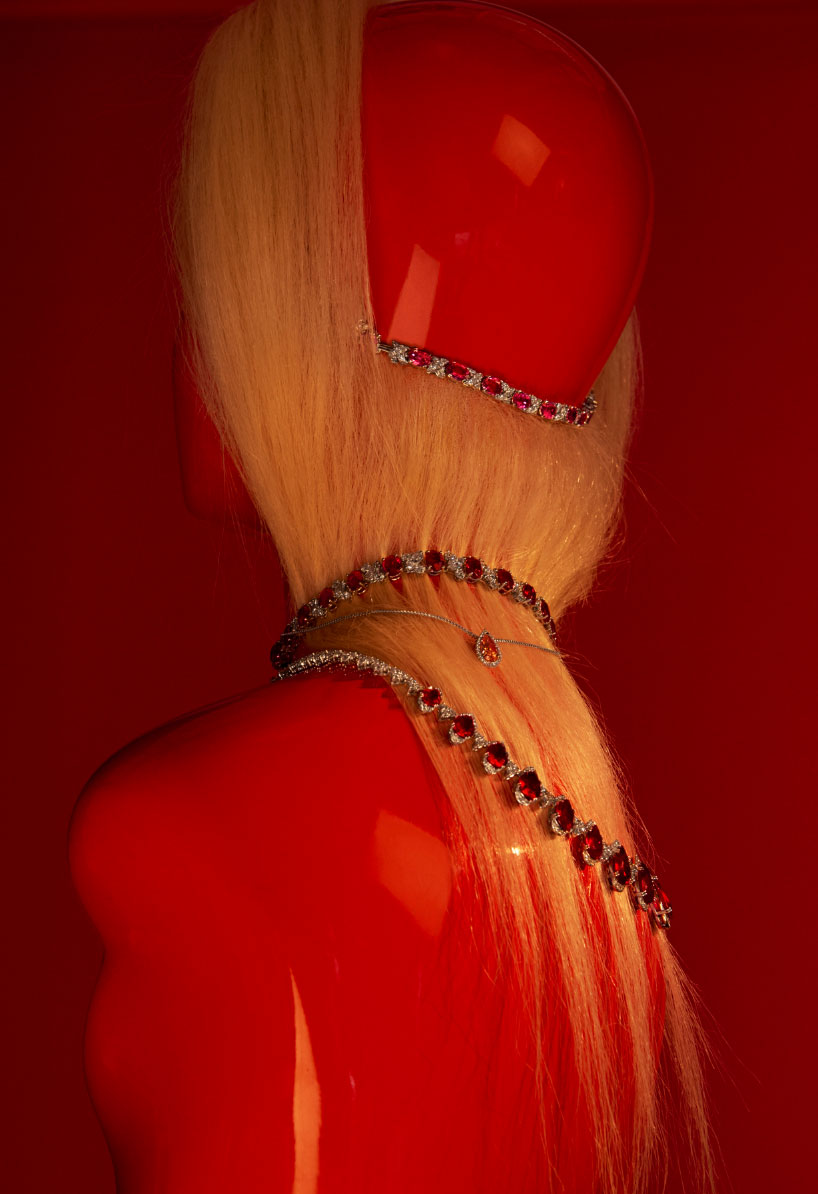
Halfway through hairstylist Tomihiro Kono’s new book, Head Prop: Studies 2013–2016, there’s a four-by-four grid of images, all variations on a theme. Each frame contains the same serene-looking mannequin topped with gold metallic paper, but from there, the fun begins. There’s a conical form resembling a pep-rally megaphone; overlapping panels like an armadillo’s back; and an assemblage calling to mind a three-dimensional Nude Descending a Staircase. You can imagine Tilda Swinton wearing one, or the Egyptian queen Nefertiti, from the 14th century BCE.
As someone who has dreamed up wildly inventive headpieces for Junya Watanabe’s runways, along with more street-friendly looks for Jil Sander and Derek Lam campaigns, Kono might well have put out a compilation of greatest hits. But he’s far more interested in the process. “There’s a word—typology—which I get inspiration from,” the New York–based stylist explains in an email, defining it as a “systematic classification or study of different types.” He looks to Bernd and Hilla Becher, whose serial photographs document water towers, steel mills, and other fixtures of the German industrial landscape; Karl Blossfeldt, who trained his camera on subtleties of the botanical world, is another reference point. How does that play out in Kono’s curious imagination? In permutations of pliable cork loops encircling the head from above, behind, on either side. In punk pixies made from snippets of hair extensions pasted every which way. In men’s half-wigs that twist samurai hairstyles with 1950s rock ’n’ roll.
Raised in southern Japan, Kono traces the seeds of his genre-blurring career to an early job alongside a master of classical Japanese hairdressing, where the young apprentice learned the fundamentals of geisha hair, an exercise in precision involving specialized combs (called tsuge-gushi) and unlikely materials (wax glue, paper ribbons). But his mentor also instilled a sense of self-determination. “He told me how he used to work as a salon assistant, doing shampoo for customers. He observed how their hair was made by undoing their hair,” recalls Kono, who picked up the autodidact thread. A move to London in 2007 jump-started his explorations into head props; relocating to New York in 2013 coincided with a shift in methodology—more structured and mathematical—as seen in the book’s experiments in wire mesh, felt, rope, and plastic bottles.
They’re flights of fancy, all, but one of Kono’s most eye-catching designs hits the stratosphere: a set of Space Age helmets for Junya Watanabe’s Spring 2015 collection. “Originally, an idea occurred to me that I wanted to create hair that looks like it’s floating in the air,” he says of the cartoonish cut-paper bobs suspended between clear vinyl. For now, though, Kono is happy rooting back into nature. “I’ve always loved hair more than anything,” he says of his current fascination with wig-making, hand-knotting strands onto lace. “Hair is a material that’s alive. It can be energetic, mysterious, creepy, and happy. That’s what I’m excited about.”
Head Prop: Studies 2013–2016 is distributed by Idea Books; Canal Street Market’s Office Magazine newsstand hosts a launch event on Friday, April 7, from 6:00 p.m.–8:00 p.m.
When it comes with items with which to adorn the uppermost part of the body – Tomihiro Kono, the Japanese-born, New York-based hair stylist-cum-headpiece artist is the master. He’s the man behind Junya Watanabe’s incredible headpieces, as well as collaborations with just about everyone worth knowing in the fields of art, fashion, music and performance. Not mentioning his creations frequently appearing in many an issue of our very own fashion bible. His work draws influence from the early 20th century Dada movement, as well as assemblage expressionism (think: Robert Rauschenberg), creating headpieces that are entirely unique. And now, Kono is releasing a brand new book all about his incredible career, from his time as a classically trained hair-dresser in a tiny village in Japan, through to archived collections of his world renowned head prop designs. There’s even some unseen works. Juicy! The new book, ‘Head Prop’, is apparently the first on the subject (who knew?), and will be published on April 1st with a launch to follow at the Office Magazine newsstand in New York on the 7th. For the real jet-setters amongst you, Kono also has his own exhibition opening at the Place by Method gallery in Tokyo, from the 2nd to the 26th August. ‘Head Prop’ will be available for purchase between 7th and 14th April at Canal Street Market, NY and online at konomad.com Distributor: Idea Books, ideabooks.nl
“Head props are pieces of transformative and wearable art. I don’t see them as headpieces used to decorate hair but as a way of creating one-off characters.” – Tomihiro Kono
Beginning his career as a classically trained hairstylist, Tomihiro Kono’s work no longer begins and ends in the salons of Tokyo. Instead, the Japanese creative’s designs are used by designers and stylists worldwide to transform both editorials and catwalk shows. Kono frequently contributes to titles including W Magazine, Numéro and Harper’s Bazaar, as well as working with designers such as Jil Sander and Derek Lam. His longstanding collaborative partnership with designer Junya Watanabe (Kono has created pieces for the shows since 2014) has made him a recognisable force within the fashion world.
Kono moved to London in 2007, where he swapped salon-based hairstyling for session work. This is when he began to experiment with the creation of head props, “I developed so many creative, inspiring and supportive friendships there, which helped me to develop my creative mind” he explains. “The energy, youth culture, music and fashion is so original and cool. Every collaboration I did in London was so vibrant.” After 5 years in London, Kono moved to New York, where he is based today. Here, his approach to designing head props has become increasingly mathematical and methodological. Stylistically, his pieces have become very graphic and distinctive, with Kono incorporating a diverse array of materials into his projects, including vinyl, rope, iron sand, rubber tubing and visual motion effects.
Kono’s first book, Head Prop: Studies 2013–2016, showcases the sheer range of his creative capabilities. Released this month, the book demonstrates how he transforms his ideas into malleable 3D objects. It also represents another notable career shift for Kono as he sets up the Brooklyn based independent publisher Konomad, whilst simultaneously branching out into wig making. INFRINGE spoke to him about the concept behind his new book.
What inspired your move from hairdressing towards head prop artistry?
I actually still consider hair styling as the main part of my job despite having made many head props. Ideally, I’d like to create a balance between them as one stimulates the other. When I moved to London in 2007 it felt really natural to start creating head props – I felt creative and saw this as a way to build my career in my own, original way. I’ve always thought that originality is extremely important when working freelance, as you want people to recognise that you can make something special and unique. Eventually people started to ask me to make exclusive pieces for shoots and to be part of exciting collaborations with artists and performers.
Does your background in hairdressing influence your approach to creating head props?
Yes, definitely. The techniques used are almost inseparable. They are always related to each other. For example, I’ve made a series of 3D hairstyles inspired by the haircut diagrams I used during my hairdressing training in Tokyo. It’s essential to know how each hairstyle is structurally made so you can control the hair shape and line.
Which materials do you most enjoy working with?
Having experimented with lots of different materials I find hair the most interesting one to work with. Hair is a responsive material, easily affected by weather, humidity and change of environment, which makes it both profound and challenging. When I am on set, I try to constantly adjust the hair as the photographer shoots as even minor changes in hairstyling can transform a photograph. In my personal opinion, there’s also something relaxing about touching hair.
Your new book Head Prop: Studies 2013–2016is comprised of diagrams, sketches and photos. Why did you decide to present the book in this way?
I wanted my book to inspire as many people as possible, which is why I adopted both a graphic and educational approach inspired by Typology. I like that the book doesn’t look like a hairstylist’s work at first glance as I think this allows for the content to reach a wider audience. There was something very satisfactory about organising the images into a grid-like system as it gave the book an unemotional quality where the results are objectively recorded, like a catalogue.
What made you decide to compile this book, a retrospective from 2013-2016, now?
I started the book in April last year as a personal documentation of all my experiments and the trials and errors of my creations. I had spent so much time and effort on the pieces that I wanted to keep a record for myself and the rest of the world. There is always some work that remains unseen as it has no place to go, so I wanted to make a place for them to be shown so I wouldn’t forget what I’d made. Books are my favourite medium to record and archive, I’ve always believed in analogue mediums rather than digital. I hope that upcoming creators or next generations will have a chance to dig out my book someday, just like I have done with old haircutting and styling process books.
What is your most unlikely source of inspiration?
Daily life is my inspiration. It’s all around us if you want to see it.
Special Thanks Tomihiro Kono Website tomihirokono.com
By la rédaction, translated by Holly Lambert and Isabelle Johnson
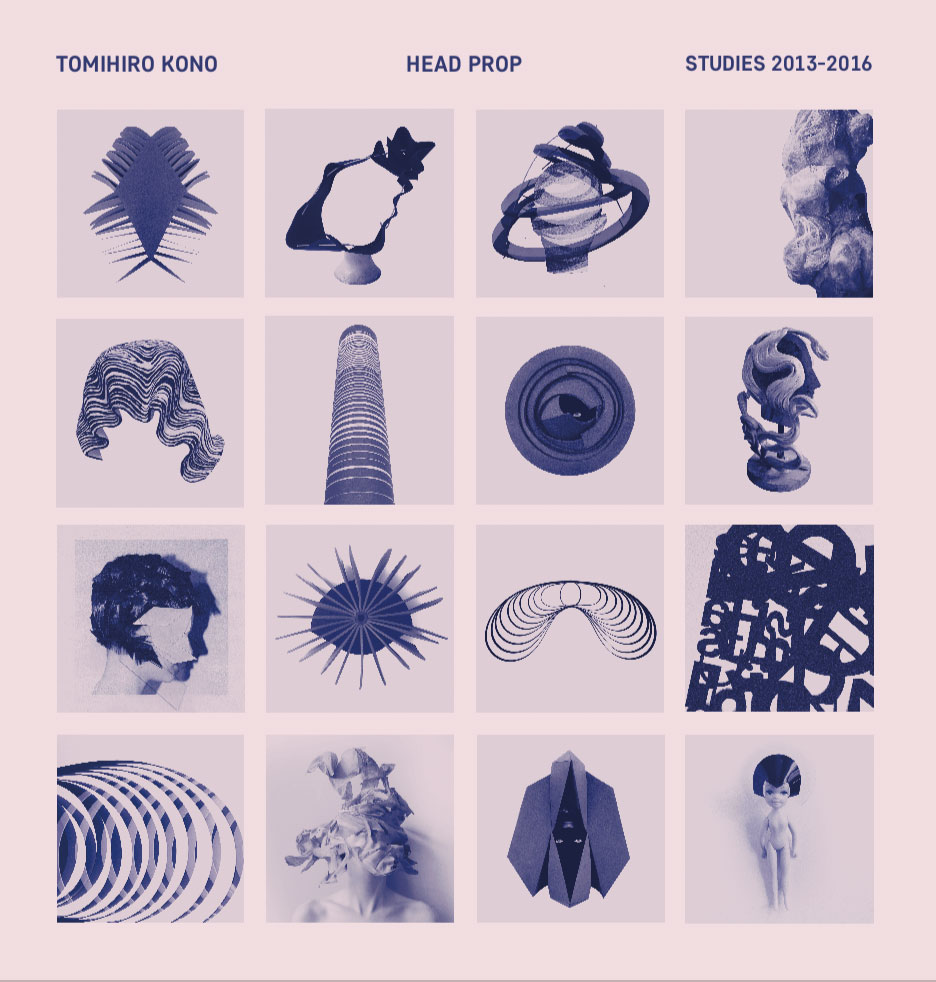
From visionary make-up to incredible hair and skin-saving secrets, honor beauty in all its forms in these seven books you need to add to your library.
Head Prop: Studies 2013-2016 by Tomihiro Kono After having illustrated his one-of-a-kind aesthetic, punctuated with Japanese influences and surrealist graphics at the Junya Watanabe shows, Tomihiro Kono shows the creative process behind some of his most beautiful hair effects in a new book. Head Prop: Studies 2013-2016 explores three main points: the shape, materials (like string, rubber and glass) and the surprising end hair result, which is often a 3D structure. A book of research and ideas from 2013 to 2016 illustrated in just one book, it shows the hair’s limitless potential.
Tomihiro Kono has self-published a new book extensively outlining his creative processes
Tomihiro Kono is the hairstylist and author behind a self-published new book titled Head Prop: Studies 2013-2016. Throughout Kono’s career, his work has developed from solely follicular-based pursuits and into the realm of sculptural headwear. “What is most exciting for me is to create amazing visual photography,” he explains. “I find a lot of possibility in headwear design to broaden creative photography. I’ve always been inspired by historical design from all over the world: from masks, to religious dress and ceremonial dress – Geisha, for example. Using these references tells a story in the photography.” Kono goes on to cite the visionary Serge Lutens as another great influence on his work: “I respect him as a perfectionist. I especially like what he was producing between 1970-1980, when he was creatively directing the experimental commercial work for Shiseido. I hope to be like him and make creative work, constantly.”
It’s unsurprising, with this kind of work ethic behind him, that Kono has gone on to collaborate with some of the most revered names in fashion: from Jil Sander to Junya Watanabe. 2017 – ten years after he embarked on his career – felt like the right moment to release a publication outlining his creative processes. “I simply wanted to record a personal documentation of all the trials and errors of my creations,” he says. “These days many people use Instagram to record their work – I think it’s good if you want to use as a diary. But the work is going to disappear in the constant updates of all kinds of random information. Making and publishing a book by myself is like having a personal space to put together my archives. I am totally in charge.”
Head Prop is so extensive in chronicling Kono’s designs and inspirations – including unseen works made between 2013 and 2016 – that it feels a little like falling down a secret rabbit hole directly into Kono’s brain. “By revealing how I’ve developed my creations, I think it’s interesting for people to see how I work differently from other hairstylists and to see not only the final output but also the process of how I get to that point. Nowadays, what seems to be important is how you get a good result quickly rather than how hard you’ve worked and telling the story behind that. I find the working process hidden behind this just as interesting as the final result.” Kono releases the book on Friday in New York – the city he now calls home – and also intends to launch it Paris, London and Tokyo later this year. He also notes “I have started working on making wigs from scratch and that will be my next personal project.” Well, we can’t wait to see.
Tomihiro Kono started as a hairstylist in a small village in Japan, but now he is designing hairpieces in a city where most people can only dream about, New York. He worked together with several designers to create the most extravagant hairpieces for their shows and now he launched his book called Head Prop where he explains his design process. We had the opportunity to talk with this master of hair about his work.
Can you tell us a little bit about yourself? Who is Tomihiro?
I grew up in the country of Ehime, in the south of Japan. My village was surrounded by nature, just by the sea and behind my house was orange farm mountain. Since it was such a tiny village, there weren’t many kids. I had many girlfriends around me that I used to play with. I would catch insects or make a secret base. I also liked to make original toys and tools which I would call “my new inventions” – so I think I have been a creator since then. I used to play in nature a lot and that was my main playground.
Where does your love for hair come from? How did you career in hair begin?
As I told you it was such a countryside where I used to live, I didn’t have many places to go out. So it was a joy for me to go to a hair salon to get my hair done nicely. It was like when you start being interested in fashion as a teenager. I wanted to be like the hairdresser guy who used to cut my hair. I thought it would be cool to be like him.
You were born in Japan and then moved in 2007 to London – at the moment you are living in New York. It seems like you have seen it all. Which city feels like home for you?
Yes, I have seen a lot by now. I wasn’t expecting myself living and working in different cities. So far London is my home because I have many friends there, but I would love to live in Paris too. I like traveling and moving to different places. It inspires me a lot.
Did for instance your style changed while you were living in London or New York?
It really affects my style. I would say I am very adjustable to the places. I feel people are different, how they work in the fashion industry is different so I try to think how I should deal with my situation next and I enjoy changing my style by adjusting to the places. I think that’s how I make my originality in the end.
You created hair pieces for the collections of designer Junya Watanabe; can you tell us more about your collaboration?
Our collaboration started off with my proposals. I was given total freedom of expression to create my own designs. It was a good training for me to search for ideas to create new forms and find out a clear concept in design. I learned so much during this process, it’s been a great opportunity for me to focus on my head props and bring all my ideas and concepts to light.
Can you tell us something about the new projects you are working on?
For me it’s important to always move forward, searching for new ideas, inspirations and collaborations, I never want to feel static or 'typecast' as having one style. I am always seeking to learn new things and keeping my work and myself in progress. I’ve started making wigs from scratch at the end of last year. For me it is one of meditations knotting hair into lace cap one by one. It is special for me to have my personal time concentrating on that. I’ve prepared all the equipments for it and am excited to make more one-off wigs. I’ve found more possibilities in wig designs right now. I am planning a special project with my partner Sayaka Maruyama which will showcase my handmade wigs.
What about Konomad?
We’ve made books of each project we have done together since 2007. Now we’ve officially started Konomad editions, which is an independent publisher. For now we are focused on our own personal work and publish it as a book. Head Prop is going to be the Konomad edition No.001.
In an exclusive first look at his upcoming book, the master of hair and head props reveals how he carved out his own unique path in fashion.
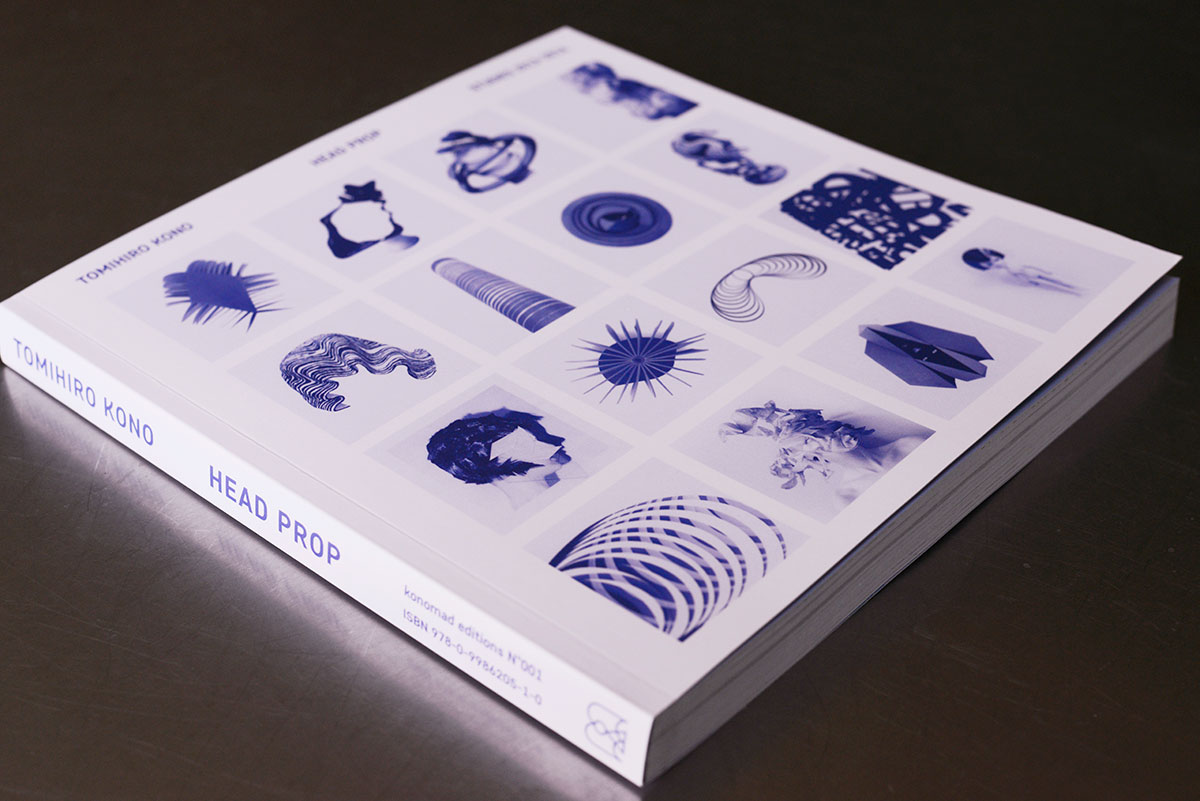
“It requires hard work to create something original,” says Japanese hairstylist and head prop artist Tomihiro Kono. And he should know, having carved out a career within the fashion industry quite unlike any other. Curiosity lies at the heart of everything Kono does: as a young boy growing up in a small mountain village in southern Ehime, he spent his days exploring and cultivating an enduring love of natural forms. As a teenager, he discovered punk music and fashion, burying himself in British magazines and, after finishing school he moved to Tokyo, securing a job in a traditional Japanese hair salon.
“To create the traditional Geisha style we had to follow rigid step-by-step instructions using special wooden tools,” Kono tells us. At first, he felt unconfident in his ability to master such intricate skills, he explains, but this all changed when he met his hairdressing teacher. “He was a master of classical Japanese hairdressing, but I found out that he had developed his own techniques and style just by observing and studying hair. I was very impressed. After that, I realised I could teach myself anything, and even create my own equipment for hairstyling.”
Kono soon began designing his own unique styles, expanding into sculptural head props in 2007, the same year he moved to London. There he gained acclaim as a session stylist for publications like Dazed and i-D, using his brooding bespoke headpieces, crafted from found objects such as metal and feathers, to further enliven shoots. Since then, Kono has established himself as the doyen of his trade, constantly pushing at the boundaries of hair and head styling.
“It’s quite hard to make something you’ve never seen as a hairstyling work, so I challenged myself to change how I create” – Tomihiro Kono
He has collaborated with some of fashion’s most prominent designers such as Jil Sander, Proenza Schouler and, most famously, Junya Watanabe (think: the lacquered, sumo-inspired hairpieces punctuating the menswear SS15 runway show or the brilliantly angular, 3D foam sculptures for AW15). Kono’s work for Watanabe highlights a purposeful shift in the artist’s previously romanticised aesthetic, which occurred after his relocation to New York in 2013. “It’s quite hard to make something you’ve never seen as a hairstyling work, so I challenged myself to change how I create; to apply a mathematical method whereby the designs became more functional and size-adjustable, which is practical for fashion shows,” he explains.
Refining this new, more logical approach required three years of extensive research and experimentation, all of which forms the focus of Kono’s brand new book, Head Prop: Studies 2013-2016, a fascinating glimpse into the inner-workings of his extraordinary imagination and technically skilled practice. The publication is divided into three sections, each fabulously illustrated with infographics, diagrams, sketches and photo grids. The first focuses on forms, shedding light on the ways in which Kono uses 2D shapes, from curved lines to typography, to conjure elegant, wearable 3D artworks. The second explores materials, showcasing creations made from rope, beer bottles, rubber tubes, you name it – there are even beards sculpted from iron sand. The third and final chapter focuses on experiments in hair, depicting some of the most beautiful, bizarre and meticulously constructed hairstyles you’re ever likely to see. Here, ahead of the book’s launch, we catch up with Kono to learn more about his multifarious practice and his advice for young creatives looking to forge their own unique paths.
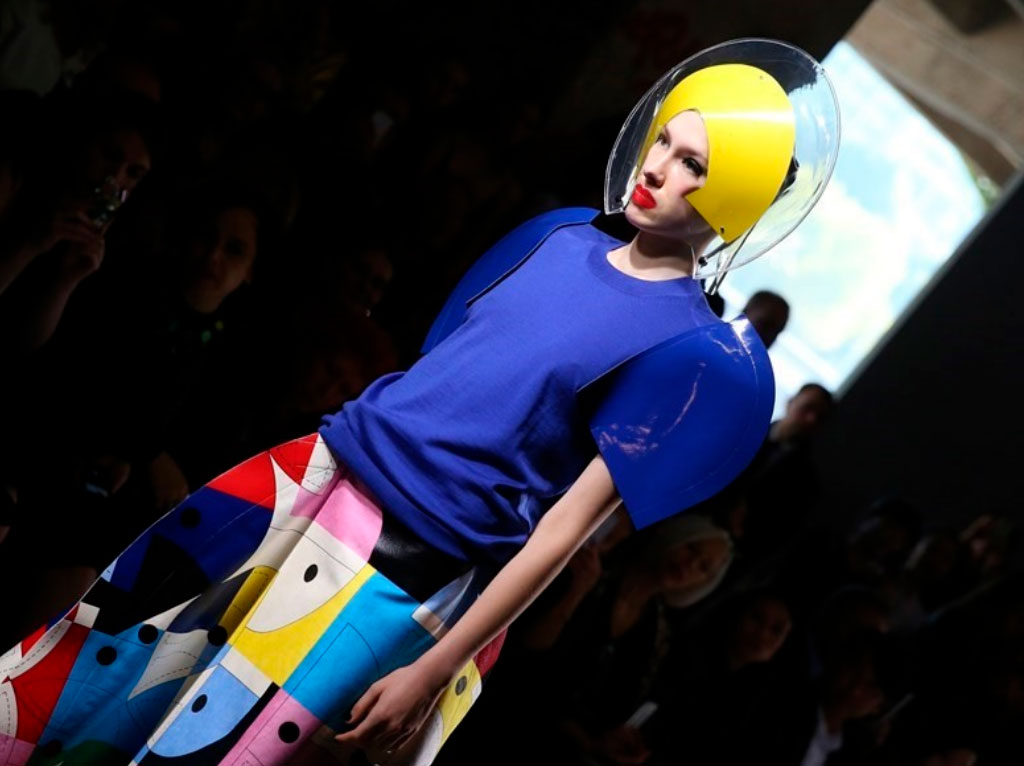
Photography Susie Lau
What are the key ingredients of a great head prop?
Tomihiro Kono: Inspiration, ideas and research. The beauty of form. Unconventional material choices and combinations. Intelligence and elegance, and more importantly, making sure it’s not too heavy to be nice to your model! Then, of course, there’s originality. I like to create pieces that are unrealistic and extraordinary, but the head prop can also look like a hairstyle, which I find interesting and clever.
What should a head prop make the wearer feel?
Tomihiro Kono: A head prop is a piece of wearable art. So the wearer can be transformed into new character when they wear it.
You look at a lot of very varied references in your work. Who or what would you say has most inspired your practice?
Tomihiro Kono: I’m inspired by random things, but when I began to create more mathematical designs I would say I was inspired by Bauhaus, Dada, Fluxus art and American conceptual art. I was looking for more graphic elements. Ideas can be found anywhere, though – an interesting idea once occurred to me in an art materials shop.
“A head prop is a piece of wearable art...the wearer can be transformed into new character when they wear it” – Tomihiro Kono
How did you first come to collaborate with Junya Watanabe and what was the collaborative process like?
Tomihiro Kono: He first asked me to collaborate on a show when I was in Japan at the beginning of 2014. I sent him my initial proposal around one and a half to two months prior to the show. Junya never tells me what kind of clothes he’s working on for the coming collection, so I keep sending him ideas, without having any concept of the looks, until he picks what he thinks is the right one. I think he works this way because looking at clothes in the beginning might narrow my ideas, in a way. It’s fun seeing how the clothes and head props match each other perfectly in the final show!
What is your favourite material to work in and why?
Tomihiro Kono: Hair is the best material to play with because it’s difficult to control and I’m still learning a lot.
What prompted you to first branch out into making head props?
Tomihiro Kono: I think it was natural for me to start making head props when I began working as a session hair stylist in London. Fashion was in a very creative mood and people were shooting really interesting images, which I was really excited about. When hair stylists are working on editorials or shows – basically anything that will be photographed – our aim is to make a photograph look better, look phenomenal. I think hair and head prop design plays a very important role in fashion photography.
Why did you decide to compile this book?
Tomihiro Kono: Firstly, because I wanted to record a personal documentation of all my experiments – of the trials and errors of my creative process, because I’ve spent so much effort and time on it. Nowadays, what seems to be important is how you get a good result or archive quickly rather than how hard you’ve worked on it and the telling of the story behind it. Secondly, when you have so many ideas, you don’t have many opportunities to show them so the book seemed like a good way of doing that.
“Nowadays, what seems to be important is how you get a good result or archive quickly rather than how hard you’ve worked on it and the telling of the story behind it” – Tomihiro Kono
What do you hope readers will take away from it?
Tomihiro Kono: This book can be viewed as tool for sparking ideas and inspiration, not just for people working in fashion industry but for all creatives. It’s more about design and handicraft. I think the way I work is different from other hairstylists, so I hope it will prove inspiring for readers, not just now but in the future. It would be great if one day people came across secondhand copies of my book and realised that it’s still inspiring. I believe good designs are timeless.
What would your advice be for young artists looking to follow in your footsteps?
Tomihiro Kono: I’d like young artists to be real creatives and look for their originality slowly. I think it’s getting harder these days because it’s becoming more about how you show than what you make. I think you need both the sense and the techniques to be a real creative. If you want to be a hairstylist and make head props too, like me, firstly you need to learn about basic hairstyling, then tap your imagination and make some props to realise your ideas. This is how I started my career and I hope it’ll help others to find and own their creativity and pursue their dreams in fashion.
Head Prop by Tomihiro Kono is available from April 1, 2017, distributed by Idea Books, with a launch Friday April 7th from 6pm to 8pm, at OFFICE MAGAZINE newsstand at Canal Street Market, Canal Street Market 265, New York.
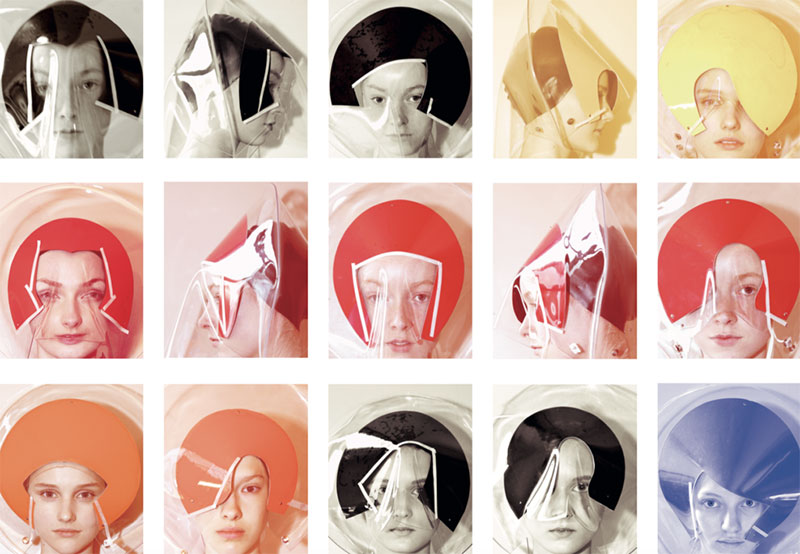
Tomihiro Kono might be a headpiece designer, but he’s not definitively in the business of accessorising. Rather, Junya Watanabe’s nine-time runway collaborator is intent on using his sculptural coiffures to build fully-formed characters — characters that are “thorough”.
Many of Kono’s head props are conceived at the juncture of fantasy (leisurely) and mathematics (laborious), revealing both blue-sky and meticulous processes. A cross-section of his CV reveals disparate possibilities: pierced leather in archetypal bondage style; Elizabethan era frivolity; the droll surrealism of René Magritte; and the follicular decisions of English new-wave band, A Flock of Seagulls.
Kono doesn’t dance near any preoccupation with the sparse and minimal. The Japanese artist offers a counterpoint that isn’t underpinned by the culture of aspiration — the stuff of beauty vloggers and Instagram tutorials. He’s interested in the spectacle — which on the runway is most often relegated to the body and the garments — and a sweeping cohesion that corporate marketers might tout as the 360-degree brand experience. Jargon notwithstanding, Kono says, “Hair design takes such an important role in making complete characters and to give a certain impression to the viewers. Building a thorough character is something I’m so into, especially when I work with brands with strong concepts and aesthetics.”
Welcome to the stage, Junya Watanabe: a man deeply entrusted to the realm of theatrics. When Kono engineered head props for Watanabe’s Fall/Winter 2015 presentation, their debut collaboration, I’m certain spectators hypothesised about Watanabe’s foray into headwear — so fluid was the affair. Kono’s work up top serves conceptually rather than clinging passively on, making him relatively peerless in his practice.
“I was free to propose whatever I liked and [Watanabe] either chose the best of my proposals or we discussed and evolved [the ideas] as we went,” he says of their work together. To round out Watanabe’s offerings — a feast of excruciatingly laboured pleats and folds, and serrated reptilian silhouettes — Kono seemed to reference semi-stretched accordions and the preposterous guard hats of Buckingham Palace. At times the headpieces resembled shark fins: charred, fanned out in perfect ovals that jutted very far into the wearer’s peripheries. Elsewhere, it was a spherical structure: very large and manifold, best visualised as an oversized origami rose fringing the circumference of the wearer’s face and almost, but not quite, obscuring her view. For his final trick, Kono diluted the conceptual quality, dressing heads in permutations of a short inky asymmetrical wig.
Onlookers might wonder — distressed or incredulous — about the materials involved in Kono’s head props, extending warm regards and well wishes to the necks of his models. Surely the more elaborate ones are not easy to hold up?! To sidestep injury and other site-specific concerns, he confirms extensive planning phases: “I had to consider long, strong, bendable materials to create the beautiful layers of arcs. They also needed to be light to stay on the head and thin so that they could be bound at both ends with metal screws.” For the frenetic toggling between looks — on-off-in-out-over-under-through —add “easily attachable and detachable” to the checklist of non-negotiables. The numbers involved in such precise preparations, however, are the sort of punctilious calculations that are irksome for a person with limited fluency in geometry— “I am not so good at math,” he admits.
The craft of head prop design is very different to the craft of, say, orange farming (you guessed it! Or you didn’t?!) — a fate that was very nearly sealed for Kono. But instead of inheriting his father’s business, he picked salon hairdressing “because I thought it was a cool job” he explains simply. He moved increasingly into synthetics, quickly accumulating a plump resumé of work that was bound up in a self-published book earlier this year: Head Prop 2013-2016.
It could have easily been just a glossy coffee table book — there are enough alluring images. Rather, it’s a (still beautiful, still glossy) record-keeping object, documenting the swings and roundabouts of Kono’s highly procedural career. It’s a blueprint-cum-journal featuring nearly every creation he has fashioned during that period. It’s like climbing into his middle mind: trace the tracks of clear bubble helmets enclosing cartoon-like 2D wigs (paper, plastic), black swathes punctured with gaping holes, falling about heads and bodies (ethylene and vinyl acetate), and buoyant structures in coalescent primary colours (papier-mâché). It’s big futurism with one eye on the past.
The swirling of old and new feels very true to the land Kono hails from. The merciless innovation of Harajuku, for example, versus the tiny village of Ehime in Japan’s south, where Kono grew up. “[There are] mythical legends that I got so much influence from as a kid. We have rituals to pray for the Sun Goddess (Amaterasu Oomikami), wishing for big catches for fishermen and good harvest for farmers,” he explains. “It’s a big event, a unique tradition of my tiny hometown. I had to dance all day long to pray when I was six.”
Exhausting but impressive, diligent but childlike: the same as his fantastical head props.
Images: Courtesy Tomi Kono
Junya Watanbe, Rei Kawakubo’s protégé, first summoned Tomihiro Kono to collaborate on his Autumn/Winter 2014 runway collection. Years later, Kono, a master of experimental coiffure-making, has evolved from stylist to artist-at-large, creating an oeuvre of multidimensional head forms that display logic order in the most beautiful fashion. On the release of his self-published research monograph, “Head Prop: Studies 2013 - 2016,” Kono reveals his fascinating appetite for mathematical discovery, a practice he realized at the start of this period in order to craft beauty from form.
Michael Beshara—What emotion best describes your work?
Tomihiro Kono—Surprise: I hope my work is surprising for people; ideally, I want to be surprised by what I have made, too.
Michael—How have you embraced hair specifically as an artistic practice?
Tomihiro—I have worked as a hairstylist for over 20 years. Hair is such a mysterious material to work with. The fact that it is living—meaning it is part of nature—is something I cannot control enough. Different types of hair and textures keep me sharp! Its condition is easily affected by the weather. I have also started making wigs, which keeps me busy—to make them from scratch is my next challenge. I need to acquire new techniques such as sewing and knitting. I've always consider myself a hairstylist rather than a head prop artist.
Michael—How has ascribing to mathematical orders given dimension to your artistry?
Tomihiro—Most of the designs I make are based on the mathematical process that is revealed inside the book. [The idea] was a transformative one, because it changed how I selected materials and developed structure. The final product, as a result, can be closely related to that of graphic design. Thinking back to my time as a hairdresser, we used mathematical sequences such as 3D haircut diagrams to understand how to divide and pull out panels in the creation of particular styles. The head props that I have created [since 2013] are based on planning. As mentioned in “Head Prop,” there are mainly two types of creative processes: planned and artistic. Hair design is counted as the latter. To meet accidental design is the exciting part of it. I first start with research, which leads to the initial design and selection of materials; then a redesign for resize and quality improvement before completion. This way is practical. When you work as a team, you have to make head props size-adjustable.
Michael—Tell me about your experience collaborating with Junya Watanabe?
Tomihiro—I had dreamed of working with Comme des Garçons for a long time: It was in the beginning of 2014 when [Watanabe] asked me to collaborate for his then-upcoming Autumn/Winter 2014 collection. I felt so honored.
Michael—What is required of you to create your “characters”?
Tomihiro—Making a character for me means making a concept, which I find the most exciting in the whole process. I do a lot of research for inspirations, mostly found pictures. Nowadays you can search for any sort of images online. Amazing! I also visit libraries; I tend to read books from genres that normally disinterest me. For example, I was not so into Pop art, Minimal art, or graphic design-related books before 2014, but since then I have started to adopt their essences into my work. American art was quite new to me after moving to [New York] from London and Paris.
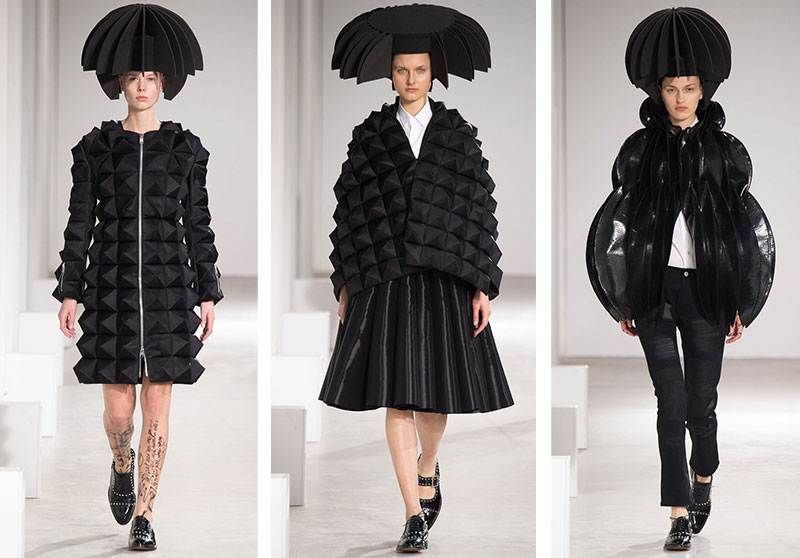
Beshara—London was where you first began making head props?
Tomihiro—London was influential in so many ways. I loved the antiques that I rarely encountered in Japan. I used to make head props inspired by found materials in those days. I once made feather pieces with real feathers of birds I picked up from park grounds.
Michael—Your work is almost gothic; religious in its control, conceptual, yet you create with a childlike freedom, making pieces with a lot of wit and humor at the same time. How do you achieve that?
Tomihiro—The most essential thing is to be curious. It’s good to be easily influenced if you can reflect the influence in your style, in your work. I like to have both childlike freedom of imagination and professionalism at the same time.
Michael—To what extent do you self-edit? Is it important in your creative process and how this book reveals your way of artistry?
Tomihiro—For this book, I wanted to unveil my working process and works that have not yet been seen—the things that are not usually exposed to the public and my creative process of making them. My partner, Sayaka, and I are self-publishing it [under the nomenclature] Konomad Editions. We discussed making this book look educative, design-related. The format is so important to visualize our ideas and she did most of its design. It was important for me to take the responsibility of my work and be in the position to oversee and direct how the archive was compiled. It was a new challenge as we had so much to edit—pictures, texts, archives—it took us one full year to complete, but we feel [now] that we have done a good job. I’ve always liked books. I like going to secondhand bookshops in whatever cities I visit. You can feel the textures and taste in books, which I love.
Michael—“Head Prop” is easy to read, highly informative, pictorially driven, and methodical in its flow. In what ways is it a reflection of your own work?
Tomihiro—You might ask why I exposed so much in the book: I thought it would be interesting for people not only in the fashion industry to see how a single hairstylist could venture into creation as an individual. At first glance, it does not really seem like a hairstylist’s work, which is actually what I do as a job. The book fully reflects my history, archive, and trial and errors. It is my personal research that I’m sharing with the world.
Michael—How do you maintain the integrity of your work, which you refer to as “anonymous design” in the book?
Tomihiro—I came across this idea through the amazing graphic and product designer Sori Yanagi in Japan. When I discovered his work, I realized that I wanted to share his thought: It is what I wanted to achieve with my head design practice. But I cannot describe my design as “anonymous design” until people say that it is. For work to be considered “anonymous design” people need to render it timeless, high quality, and beautiful. That can take over a generation.
Hair Stylist and Head Prop Designer
Tomihiro Kono, a hair stylist and head props creator, currently based in New York City, is best know for his outstanding work with designers such as Jil Sander and Junya Watanabe. His launch of his own book 'Head Prop' is a 'documentation of distinctive head prop work produced' by himself. Not only does Tomihiro produce 'visually striking head designs' but 'designs that focus on functionality in the beauty of form'. Kono has grown to become the master of a genre he created from himself.
words by Tilda Eliasson
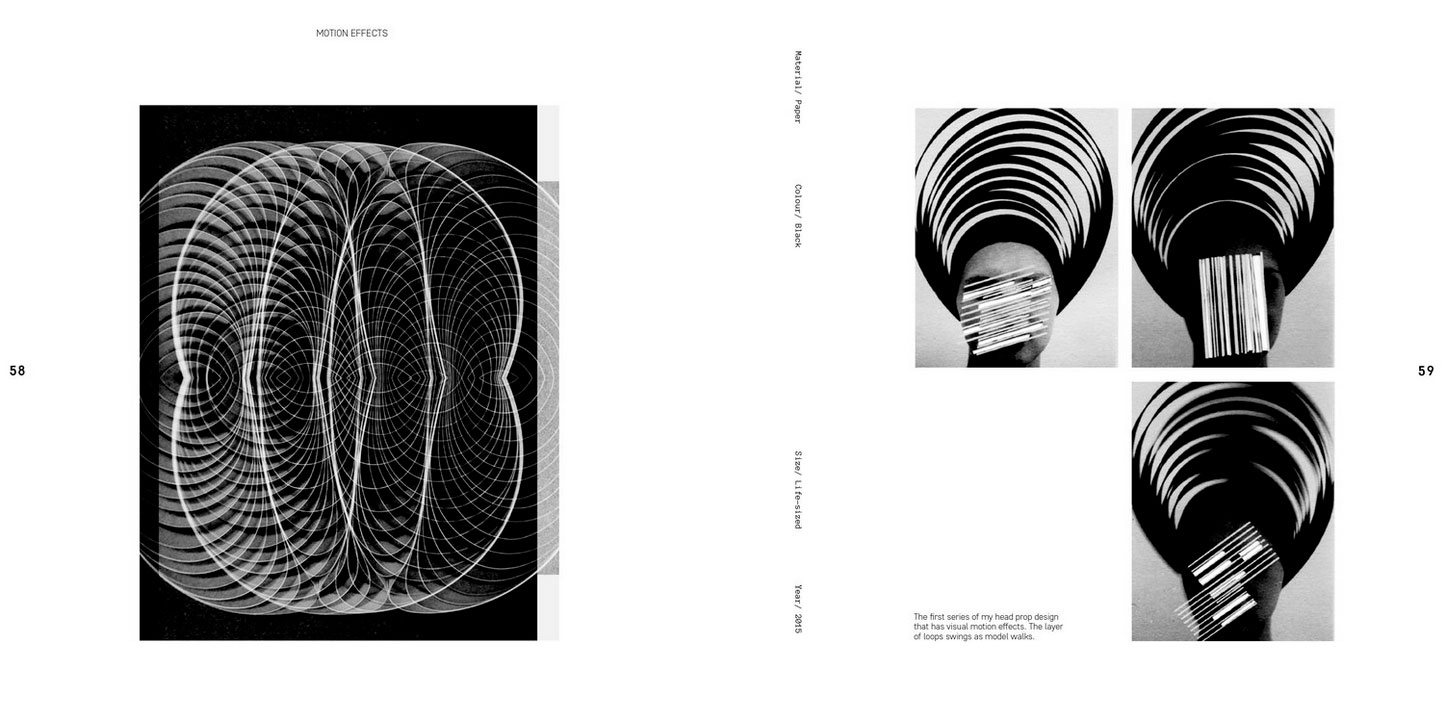
I understand that your career started in Japan, where you worked as a hair stylist. But how did the idea of creating wigs and head props appear in the first place? What was the starting point for you?
I started my career as a hairdresser in Osaka, where I studied basic hair skills. Four years later I had gotten seriously obsessed with geometric haircut techniques and decided to master the method. I ended up working in a few different hair salons in Tokyo and acquired the best haircut skills. In 2017, when I branched into session styling, I moved to London. I started head props originally to satisfy my own creativity but I’ve always been obsessed with new hair and head creations. The act of hair styling and designing head props are, according to me, closely related to each other. They go hand in hand. Therefore, as a hairstylist it’s also my responsibility to keep working with hair designs in order to grow as a creative.
Was this all a part of your childhood dream or was it something you grew into as you got older?
When I was a young boy I wanted to become a veterinarian, which is quite different from what I do now. So I would definitely say that, as I got older, it was something I grew into loving. Even during the beginning of my career as a hairdresser I wasn’t dreaming about working abroad as a session stylist. I have just always been focused on doing the best I can and working hard. This is where it has taken me.
From a creative point of view, what was it like to grow up in Japan? Did the Japanese culture become a strong source of inspiration to you or was it just an influential cultural background?
Personally, I always got more inspired by the Western cultures. But when I moved to London I started to find more understanding of my own background. I think that the Japanese culture used to be something I would just take for granted.
After moving to London, I created a Geisha inspired portrait series. This is a classic example of our distinctive heritage, which I’m proud of.
Many successful people have said that having access to a big city is always an important part of your career. After living in both London and New York, two of the largest fashion capitals in the world, what do you think is the most significant difference between the designs you've produced in each city? In what way did the city affect your work?
I believe that my first choice of city was the right one. London has a great hair culture, especially the avant-garde style with its young creative- and punk influential spirit. It’s a city where people really appreciate originality. For me, working in London was a mix of crazy dark, romantic goth and experimental design, which was very satisfying from a creative aspect. But I do think that New York is the best place to establish oneself. I always try to adapt my work to the city I’m in and its current fashion trends. Therefore, since I moved to Manhattan, my work has been quite clean and modern.
The line between most creative subjects and art is often very blurred. Do you consider yourself to be an artist? If so, did you always feel like one or was there a significant moment in your life when you realised that you wanted to become one?
If there is one hairstylist that could be called an artist, I might be that person. But that is not how I see myself. However if I could choose, I would much rather be the only one than the best one.
By being involved in the fashion industry, you are constantly surrounded by the idea of beauty and how it should be presented, but in what and where do you personally find beauty in the world?
Personally I find beauty in the world of nature, music and old Japanese films - which I like the aesthetics in.
Working with craftsmanship and creating each design by hand must be very creativity challenging from time to time. What is currently your biggest source of inspiration? When you lose track, where do you go to find it?
At the moment, my source of inspiration comes from wigmakers around the world. That is the subject I will build my new project around. Luckily, I never feel like I “lose track” so I always just keep moving.
What motivates you to grow and do better?
I motivate myself to be original at all times.
A lot of people tend to seek comfort in hiding behind their hair, do you ever feel like your bold and fearless style comes as a shock to people? Would you say that this is a part of the purpose for you?
My designs tell a story of what I do in life, if that tends to shock people, I take it positively. I know what I have done in the past three to four years is completely different to what most other hairstylists in this industry do. I personally like both natural hair styling and over-the-top head prop design at the same time, because I feel confident in both shadowing trends and being original at the same time. Whilst working in the fashion industry, you’ll always have the choice to create a trend as well as following a trend. So if head props become something that inspires upcoming artists and they want to follow that, or even keep building on this path I have created for them, that is something that would be very interesting to me.
Have you seen any good examples of how people have adapted your creative work into their everyday lives?
Except for my friends, wearing my creations on an occasional night out, I never think of my head props as being used in people’s everyday lives. I see them as head art.
What is your best piece of advice for the people who want to follow your footsteps?
Be creative and work on building your originality. If you want to be a hairstylist and make head props as well, you need to learn about the basics of hairstyling, then play with your imagination from there on. This is how I started my career and I hope that my story can be helpful for young artists who want to pursue their dreams in Fashion.
You have worked with some of the biggest names in the current fashion industry and has had your work published in the most influential magazines and online platforms in the world. Now, just a couple of weeks ago you had your very first book launch as well. Where do you see yourself going from now on?
I never really expected my first book to get so much attention! It was a big surprise for me to see that people are curious about what this book was all about. I created the concept one year ago and I haven’t changed anything since. Towards the end of the process, after having had several meetings with some very talented good publishers, I decided to publish the book myself, because I wanted to keep the creation as pure and personal as I possible could. I consider the release of this book too both mean the end of one chapter and the beginning of a new one. What’s next for me? Well, as you go, your career establishes your style and, for now, I have a lot of wig making to do. Hair will keep me busy for a while.
When you see a fashion show your mind naturally focuses on the clothes and accessories on the runway. Makeup and hairstyles are other important aspects, but, quite often, they become secondary elements and in reviews they get neglected in favour of a description of the space where a show is taking place or a mention of the best-dressed celebrity sitting in the front row. Yet this rarely happens when the hairstyle in a show is created by Japanese-born, but New York-based Tomihiro Kono (河野富広).
A visionary master in the art of hairstyling, who developed an intriguing mix of traditional techniques combined with the most modern moods captured in the vibrant cities where he has lived, Tomihiro Kono has worked for different designers, including Jil Sander and Junya Watanabe.
Hairstyles designed by Tomihiro Kono go from geometrical foam sculptures to vinyl circles dynamically surrounding the heads of the models like futuristic halos. The models wearing them could be considered as punk Alice-like characters lost in space rather than in the proverbial Wonderland.
A few months ago Konomad Editions published the volume Head Prop: Studies 2013-2016 (distributed internationally by Idea Books), that could be described as a compendium of Tomihiro Kono's creations and an introduction to his modus operandi.
Photographs, sketches and photo grids in the volume show his passion for forms (such as circular shapes and lines), materials (ropes, wire mesh, felt, plastic bottles and rubber tubes...) and avant-garde experiments with hair.
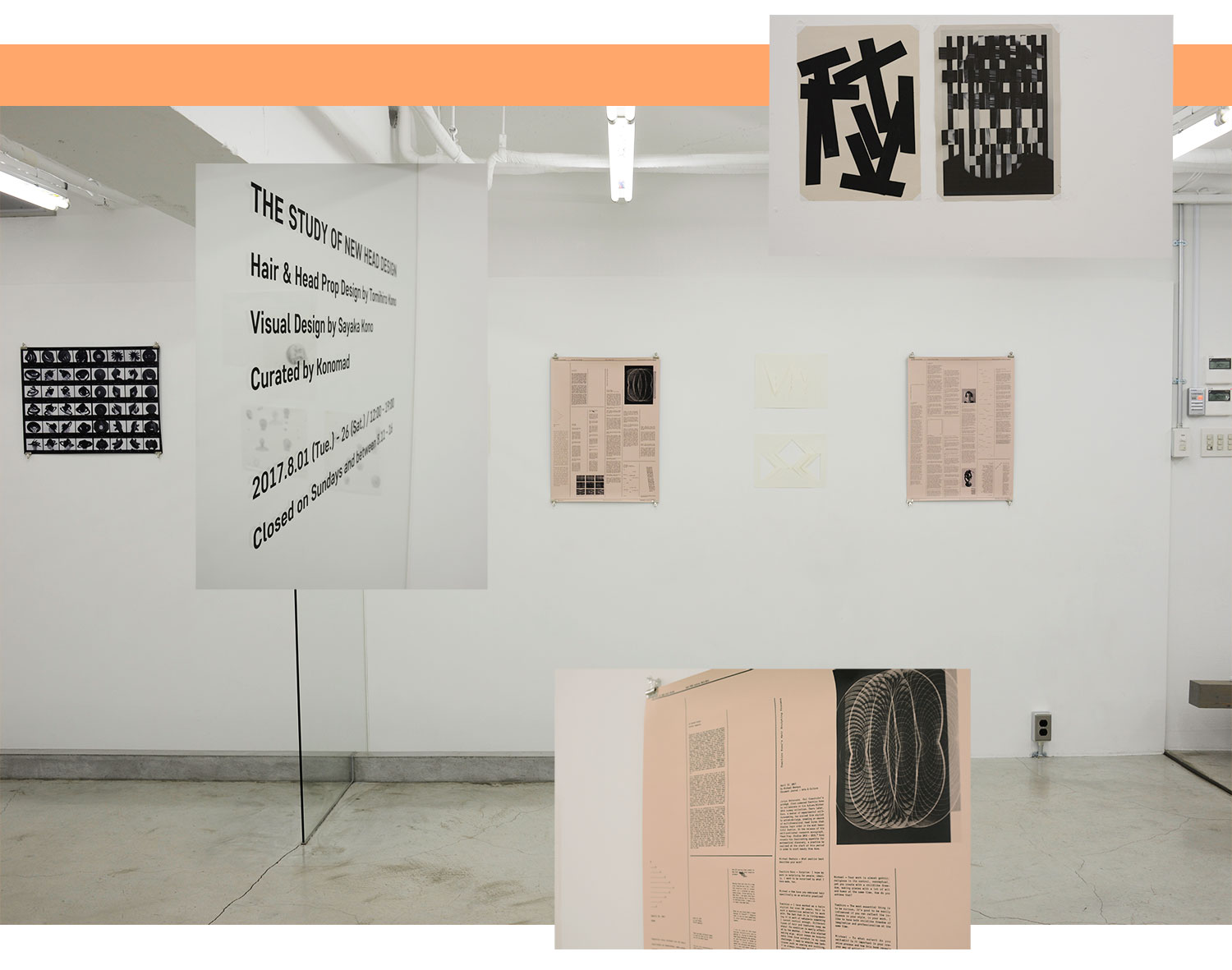
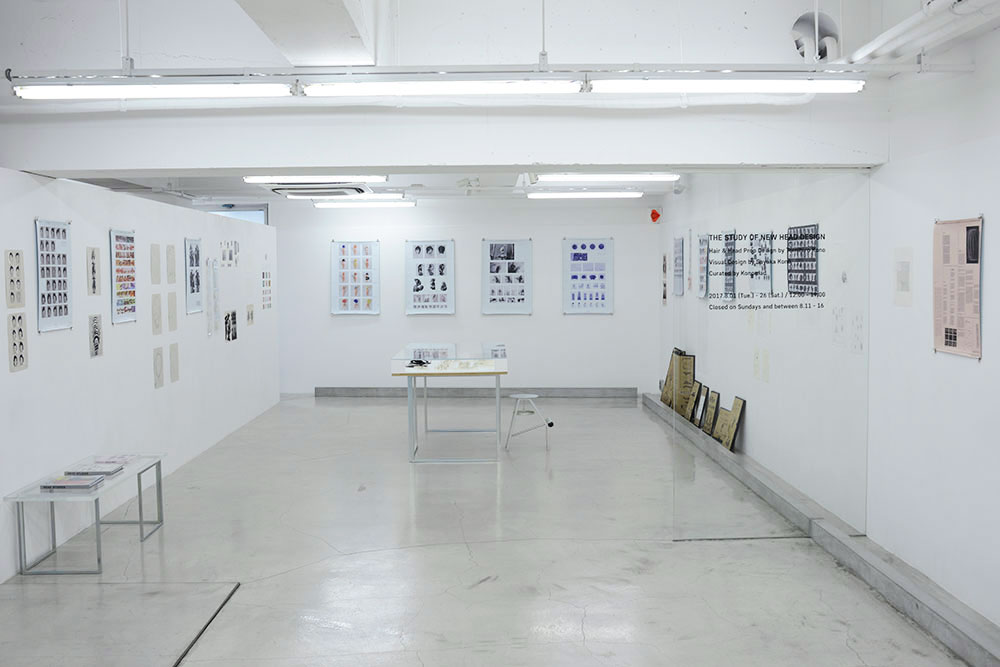
Tokyo August 2017 © konomad
The background reasearch included in the book proves that Tomihiro Kono's practice is suspended between mathematics, geometry and architecture, and sprinkled with childish glee.
The author of Alice in Wonderland, Lewis Carroll, was a writer with a powerful imagination, but also a mathematician and logician; Tomihiro Kono, the father of modern Alice characters in a punk wonderland, is an artist and a hairstylist playing with mathematical and logical principles. You can bet we will soon find him collaborating with a major artist or architect.
Head Prop features a very intriguing documentation about your work: why did you decide to publish it only now and how long did it take you to compile all the material you had?
Tomihiro Kono: The reason why I decided to publish the materials in a book format is that, as first thing, I wanted to document what I had worked on and had kept as a record for myself. Secondly, I thought that revealing my secrets - that is the stages of my creative process - would have been inspiring for all sorts of people and not just for those ones working in the fashion industry. I also wanted to expand my personal boundaries: taking the book on the road through exhibitions means getting the chance to meet new people, and even find more creative possibilities and collaborations with individuals working in other industries. My partner Sayaka and I worked on this book design for a year, we did a lot of editing, adding texts as well, and I genuinely hope that Head Prop will be inspiring for readers even in ten or twenty years' time.
Some creative people do not like revealing their modus operandi or background researches, but you willingly take readers behind the scenes of your work, what prompted you to do it?
Tomihiro Kono: I used to hide my process and background researches because I thought that in that way I was protecting my originality. However, now I'm positive about sharing my background researches with my readers. I think that, to keep searching for a new style, I must release what I have done. This is my past archive anyway and I don't think I should hang on what I have done in the past too much! Besides, if I hadn't published these projects I would only remember them roughly and that would be a shame considering the time and effort that went into those creations. Last but not least, the book format allows me to share my creativity and protect my copyright, so releasing this volume at this stage of my career makes perfect sense to me.
In the book you show us many inspirations behind your projects – where do you usually go to get inspired - museums, libraries or the Internet? Or do you have a favourite artist/art movement or architect you often go back to for ideas?
Tomihiro Kono: My inspirations can be found in many differemt places, I go to museums and libraries, but not so often. I guess nowadays I use the Internet more and look at photography of artists' studios. I also get inspired by documentary films. Surrealism, Dada, Bauhaus and Fluxus - very energetic movements - are my favourite ones. The academic approach of Bauhaus was one of the inspirations when making my book.
The late Vidal Sassoon once told me in an interview that the Five-Point Geometric Cut was based on different ideas and concepts, including the Bauhaus and architecture. Your work clearly displays links with disciplines such as art and architecture, but also mathematics and geometry, can you tell us more about them in connection with your work?
Tomihiro Kono: I developed my career as a hairdresser and a hairstylist, so I didn't specialize in architecture or graphic design, but I learnt all the haircut techniques at the Vidal Sassoon salon. The way they worked on hair was mathematical and logical, so each hairstyle is perfectly calculated to be made. I learnt there that there is a hair diagram to design hairstyles and an accurate work was needed to create a complete hairstyle, for example you must take into consideration which angle you are pulling the hair strands out to create the form that you want. There are haircuts called "geometric cuts", so they consider hair as regulated by geometrical and graphic principles. I therefore think that these mathematical connections in my work come from my haircut training.
Which is your favourite section from the book and why?
Tomihiro Kono: The diagram of systematic process and artistic process at the beginning of the book. This was the first time I analyzed how I proceed with my work and found out that I have two different processes. The diagram tells the readers that my process of hair design is somehow connected with other disciplines - such as architecture, design and products.
What's the most unusual material you have used so far for your hair pieces?
Tomihiro Kono: I would say iron sand, I used it to design a moving beard. It was kind of exciting to experiment with it. I often try to express the concept of hair using other materials.
What do you like or dislike about contemporary fashion?
Tomihiro Kono: I like the fact that huge social media platforms such as Instagram allow us to show our work whenever we want, so there are more chances for young designers which is a positive side as we become our own producers in this way. At the same time, I dislike the fact that so many things look alike nowadays, they are on a same average level and it's harder to find more originality or high quality.
You did two exhibitions in Tokyo in August: what did they feature, images from your book or also your materials and sketches?
Tomihiro Kono: In "The Study of New Head Design" at Gallery Place by Method in Shibuya, I exhibited posters of different head prop design variations and some paper prototypes; in the other for the bookshop POST, I showcased real head props as an installation - they were not on mannequins but arranged in modern displays. It was good for me to have two places at once as one complemented the other and visitors got a complete vision of my work by checking out both spaces.
How did the exhibitions go?
Tomihiro Kono: They were very successful. A lot of people came over and we sold many books, more than expected. I met new people from different industries - graphic design, art direction, architecture, interior design and product designs. I was at the galleries as many days as possible to explain my work and the book and visitors were willing to stop, listen and understand what I was trying to achieve. It made me realise how much publishing the book has meant to me.
What are your plans for the future, any chance to see an exhibition of your works in Europe as well?
Tomihiro Kono: I'd like to do an exhibition in Paris or in London, but I have no plans yet. In the meantime, I'm working on an event entitled "Light Is Calling" that will open at HACO (31 Grand St, Brooklyn) at the end of October in New York. This exhibit will be a collaborative effort between me and my partner, photographer and filmmaker Sayaka Maruyama, reunited under the moniker Neon O'Clock Works. It will focus on photography, short films, drawings, installations and books. Visitors will be able to see during this event some of our early box collages that we created in 2006, tackling themes such as achieving beauty through pain - think about the history of corsets. The boxes are connected with electric cables and light-up in the evening to create a sacred and solemn atmosphere. The energy locked in these boxes has been sleeping for around 10 years in our closet, so it is time to awake it again and pass it on to a new generation! You can all come and share the energy with us on the opening party night, on 31st October (6.00pm - 8.00pm).
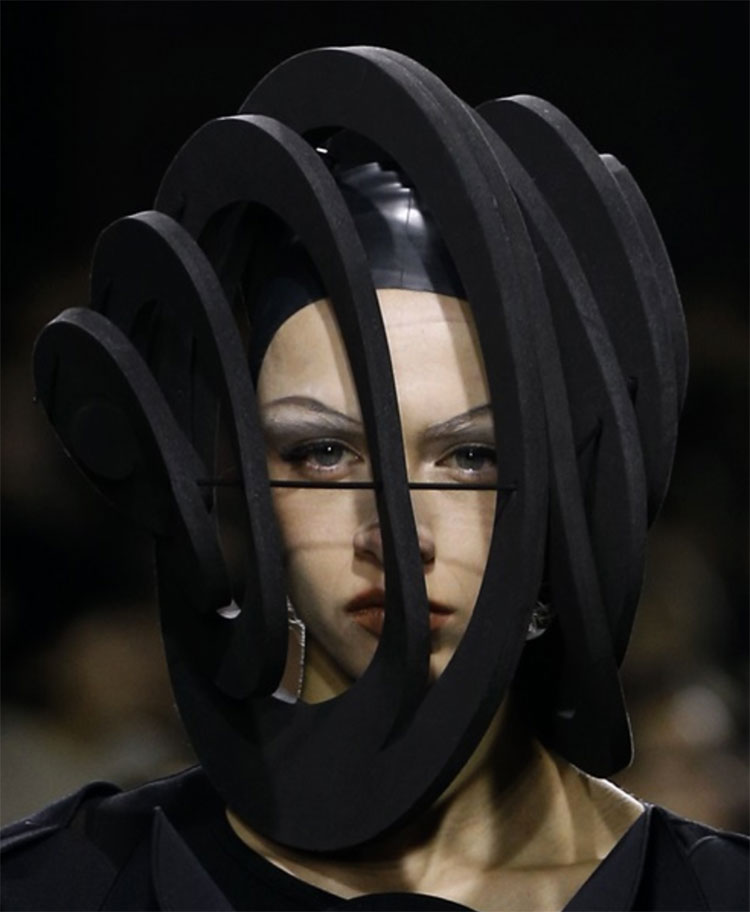
Head Prop marks the first volume dedicated to the work of Tomihiro Kono, the visionary Hair and Head Prop Artist who designed the sculptural headpieces for Junya Watanabe. The 232-page volume includes photographs, sketches and texts documenting and unveiling the creative process behind Tomihiro Kono’s work through famous creations and previously unseen prototypes produced over the period between 2013 and 2016. Japanese-born, New York-based Tomihiro Kono is one of the most visionary hair stylists of his generation and over the last ten years has made his name known in the industry thanks to major editorial collaborations with prestigious publications, including Vogue Italia. Distributed by IDEABOOKS, Head Prop by Tomihiro Kono will be presented today April 7th at Canal Street Market, Soho, New York. Timed with the book launch, limited edition posters featuring blown-up renditions of some of the artist’s most representative creations will also be available for sale. Next August 2017 Tomihiro Kono will be celebrated in his native Japan with his own exhibition at the Place by Method gallery in Tokyo. Check out our gallery for some images from Tomihiro Kono’s Head Prop exclusively for Vogue Italia.
Hair and head prop artist Tomihiro Kono is launching his archival book and limited edition poster at the office newsstand on Friday, April 7th. Head Prop is a documentation of his design work from 2013-2016, and the book clearly shows Tomihiro's innovative, uncompromising work. Having developed a highly successful international career as a session hair stylist, here Tomi ventures into new territory. He's not only attempting to produce visually striking head designs, but work that focuses on functionality without sacrificing overall beauty.
Tomihiro Kono started his career as a classically trained Japanese hair stylist. His passion soon lead him to begin exploring more creative hair and head designs. Since 2013, when Tomi moved to New York, he has regularly shot for the likes of various editions of Vogue, Interview, W, and V.
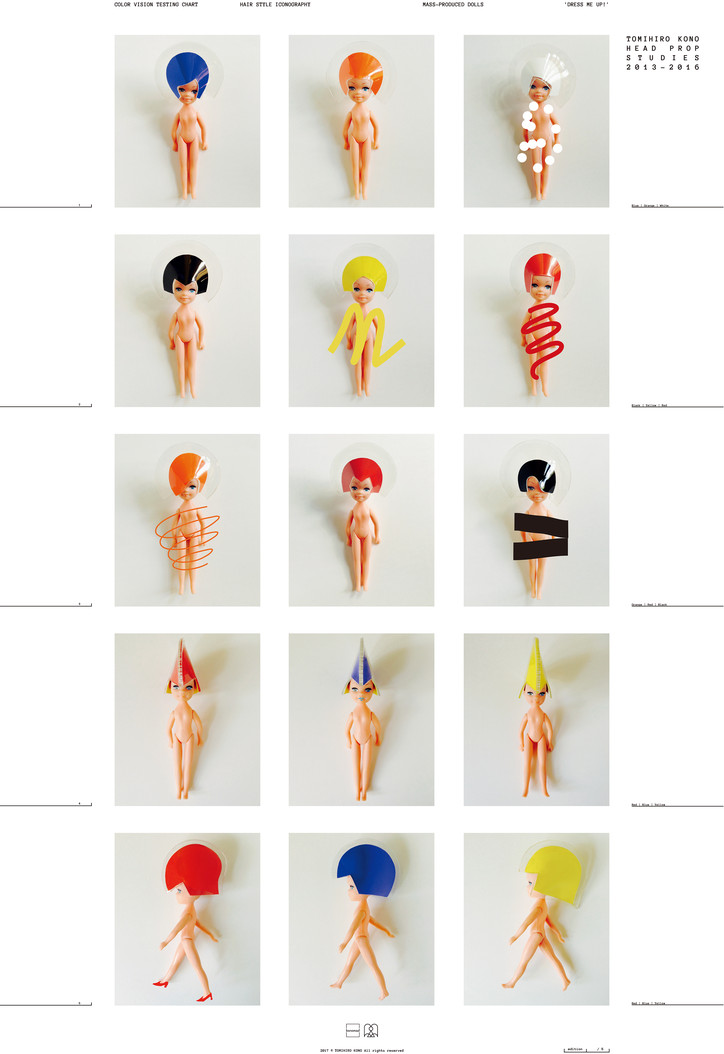
We also did a little Q&A with Tomi. Scroll down to learn more about him.
There are many different types of head art that you do. Could you tell me about these?
For me, it’s interesting to make different types rather than making a similar kind of design over and over again. I try not to categorize what I make. I just randomly get inspired from different things, and my interests changes from time to time. I learned traditional Japanese Geisha hair dressing before moving to London. I enjoy a variety of styles related to hair.
How do you merge being a hairstylist with being a head prop artist? What skills transfer over?
In the beginning of my career, I started making head props to broaden hair & head expressions as a hair stylist. To fully satisfy my creativity and a passion to pursue my originality was a starting point. Being a hairstylist and a head prop artist means that I have more options of head designs. When people need my creativity for a collaboration, I believe we can bring out something conceptual and strong in us together. Since I like photography more than anything, I always think about creating a strong visual image that inspires people.
Run through your creative process with us. What are the steps in coming up with one of your head props?
There are 2 ways: a systematic process for mathematical designs & a more artistic process. For the mathematical designs, it goes like this: 1) Idea research 2) concept 3) planning 4) material selection 5) making prototypes 6) material selection 7) resize 8) redesign 9) overall improvement (design development) 10) model size fitting 11) completed. The artistic process involves more intuitive and freehand styles.
How did moving from London to New York impact your creative process?
Moving from one city to a new city inspires me a lot. I felt the creative vibe in London most, so I created so many head props. Since moving to New York, I am more into hair and wig making for a variety of nationalities. I have a lot to learn from New York.
When do you know that a head design is “done”? I imagine that it can be hard sometimes to stop adding layers and layers.
I try to look at the head design objectively while making it, trying to avoid the head prop becoming too personal and too much in terms of design. I think carefully about the balance and materials I use and what kind of impression the design will give to the viewer when it’s a collaboration and there is a concept.
Has your Japanese culture influenced your hairstyling and/or head prop art in any way?
Yes. I’ve made a Geisha inspired hair portrait series, which was featured in Eyemazing Magazine in 2010 and Japanese Mage (Samurai hair-style) inspired wigs for a men’s fashion show. I studied classic Japanese hair dressing, and that’s definitely one of my signatures.
What do you hope people take from your head art?
Hopefully what I create is something inspiring for people.
I know your head props have found their place in high fashion/runway already, but looking at them, I personally think that they could find a place on drag queens, performance art, etc. How do you think the emerging head prop movement, which you pioneered, could potentially make its way into the mainstream?
I think it depends on the changing trends. For me, it seemed like head prop movements were in the mainstream when I was in London back in 2008-2011. I felt people were really passionate about head props, and lot of stylists were looking for creative masks and head pieces. Recently the trend worldwide is more natural, so hairstyling is relatively natural-looking. What people want tend to change from time to time, so there’s always a chance for the emerging head prop designers to be under the spotlight.
「拡張する髪」 髪とアタシ
Hair & Head prop artist 河野富広。 美容師からキャリアをスタートさせ、セッションスタイリスト、ヘアアンドヘッドプロップアーティストになった彼の目に、「髪」はどう映っているのだろうか。 河野富広のX軸は髪の探求に伸びていき、 Y軸はキャリアの進化として伸びていく。 この時間、この瞬間にも、彼は髪のイメージを拡張し、ひとつの運動体となっているのだ。 作品たちは、幾何学、非重力、連鎖、非対称。 まるで日本庭園を見ているような、 JAZZを聴いているような、 ひとつひとつに意味を孕みながらも、 明確なメッセージは隠された代物。 髪の既成概念を、蓄積されたロジックで越境してくる。 髪が、拡張されているのだ。 髪を「立体物」として捉え、髪を「髪」と捉えない。 そこにヘッドプロップというブルーオーシャンが 見えた気がした。
美容文藝誌 髪とアタシ 編集長 ミネシンゴ
Shaping New Head Design
The 1st Head prop book by Artist Tomihiro Kono
of his design archives including unseen works
Head Prop by Tomihiro Kono is a documentation of distinctive head prop work produced by Hair and Head Prop Artist from 2013-2016. This book gives a clear indication of the insight and path Tomihiro has followed in his innovative journey for new head designs through his uncompromising approach to his work. Having developed a highly successful international career as a session hair stylist Tomihiro Kono ventures into new territory, not only attempting to produce visually striking head designs, but designs that focus on functionality in the beauty of form. Book will be available at konomad editions. On April 7 from 6 to 8pm, will be held the book launch opening at Canal Street Market, NY.

ヘアスタイリストとして世界で活躍する河野富広氏の作品集「HEAD PROP studies 2013-2016」の刊行に合わせた展覧会『THE STUDY OF NEW HEAD DESIGN』が8月27日(日)まで、渋谷区恵比寿南のアートブックショップPOSTと渋谷区東のギャラリー(PLACE) by methodで開催されています。
ヘア表現の延長線上に《ヘッドプロップ(ヘッドピース)》という新しいジャンルを確立し、頭のデザイン表現の可能性を試すべく独自の道を切り開いてきた河野氏は1980年の愛媛県生まれ。美容師として約10年間、日本でヘアカットの技術を磨く傍ら、結髪(けっぱつ)の手ほどきも受け、2007年に渡英。セッションヘアスタイリストとして、海外のファッション誌やアート誌での仕事をしながら、ヘッドプロップアーティストとしても注目を浴び、さまざまなアーティストとコラボレーションを行ってきました。
10年には、ロンドンファッションウイークで、自身プロデュースによる初めてのhead prop collectionのパフォーマンスショーを披露し、「Dazed & Confused」や「Another」など多くのメディアが注目。11年には、〝NEWS WEEK JAPAN 世界が尊敬する日本人25人〟の1人に選ばれました。
13年からは米ニューヨークに拠点を移し、14〜16年までの間、JUNYA WATANABE Comme des garçonによるショーのヘッドデザインなどを手掛けました。
河野氏によると、当初は、羽毛や釘、レースやレザー、クリスタルなど頭に合いそうな素材からインスピレーションを受けてヘッドプロップを制作。しかし、「これではどこかで見たことのあるものしか生まれない」と、それまでの素材ありきの手法を捨て、まずは新しい形そのものを探る手法に変えることで自身のスタイルを一新しようと試みました。そうすることで、頭の形にとらわれない斬新な形のデザインを作ることが可能になりました。 会場では、主にファッションショーのランウェイというステージに現れた実物のヘッドプロップをインスタレーションとして展示。ビニールやスポンジなど、さまざまな素材で作られたヘッドプロップは、一見 頭の装着物に見えないものもあり、見るものに新しいデザインとは何かを問いかけているようです。
もちろん、河野氏が力を注いで制作した作品集「HEAD PROP studies 2013-2016」を見れば、彼の作り出す世界の全体像を知ることができます。
頭という制約の中でも自由な発想でヘッドプロップのプロタイプを制作。その後、軽さなどの機能性を重視した素材選びや衣装とのペアリングなど考えながら作品を作り上げていくという河野氏。会場へ足を運び、世界が認める斬新な〝Kono World〟を体感して下さい。
THE STUDY OF NEW HEAD DESIGN
会場:POST(渋谷区恵比寿南2-10-3)
会期:2017年8月27日(日)まで
営業時間:12:00~20:00
Ten Meets: Tomihiro Kono, Hair & Headpiece Artist
Where did you grow up? Do you have memories of fashion from your childhood?
I grew up in a small village by the sea and the mountain in Uwajima in Ehime, south of Japan. I was a country boy playing around in beautiful nature! When I was a junior high school student, I started to arrange my hair in styles inspired by rock musicians, so that’s when I started to have fashion in my life.
You started off in hair, but have since moved towards creating headpieces, which you are now most known for. What prompted the change?
I love both hair styling and creating head props, it just depends on the job. For the moment I mainly create head props for shows, I started making them when I moved to London in 2007. At that time fashion needing something strong and unique and different and think it’s good for me to continue with hair and head props, helps to keep up my creativity.

On Fashioning Architectural Beauty for Junya Watanabe
“Watanabe’s fascination with advanced math and geometry is no new thing,” wrote Sarah Mower following Junya Watanabe’s A/W16 collection this season. “A glance at his history proves just how frequently he’s devoted himself to cutting, crimping, and stamping out fabric.” And she’s right; the exacting elegance of Watanabe’s pattern cutting and his profoundly technical understanding of construction is what makes the Japanese designer just so magnetic – more so, his ability to transform mathematics into something visually graceful (remember the undulating honeycomb of A/W15 or the fetishistic Orphism the season previous). This time, he went for neoprene and polyurethane origami layered over closely-fitting trousers and bodies in a collection that was simultaneously elegant and avant-garde, with fabrics cut so precise that they looked as though he’d traced them around a Helix maths set – and the headpieces and makeup crafted by Tomihiro Kono and Hiromi Ueda respectively only served to mirror his preoccupation with structure.
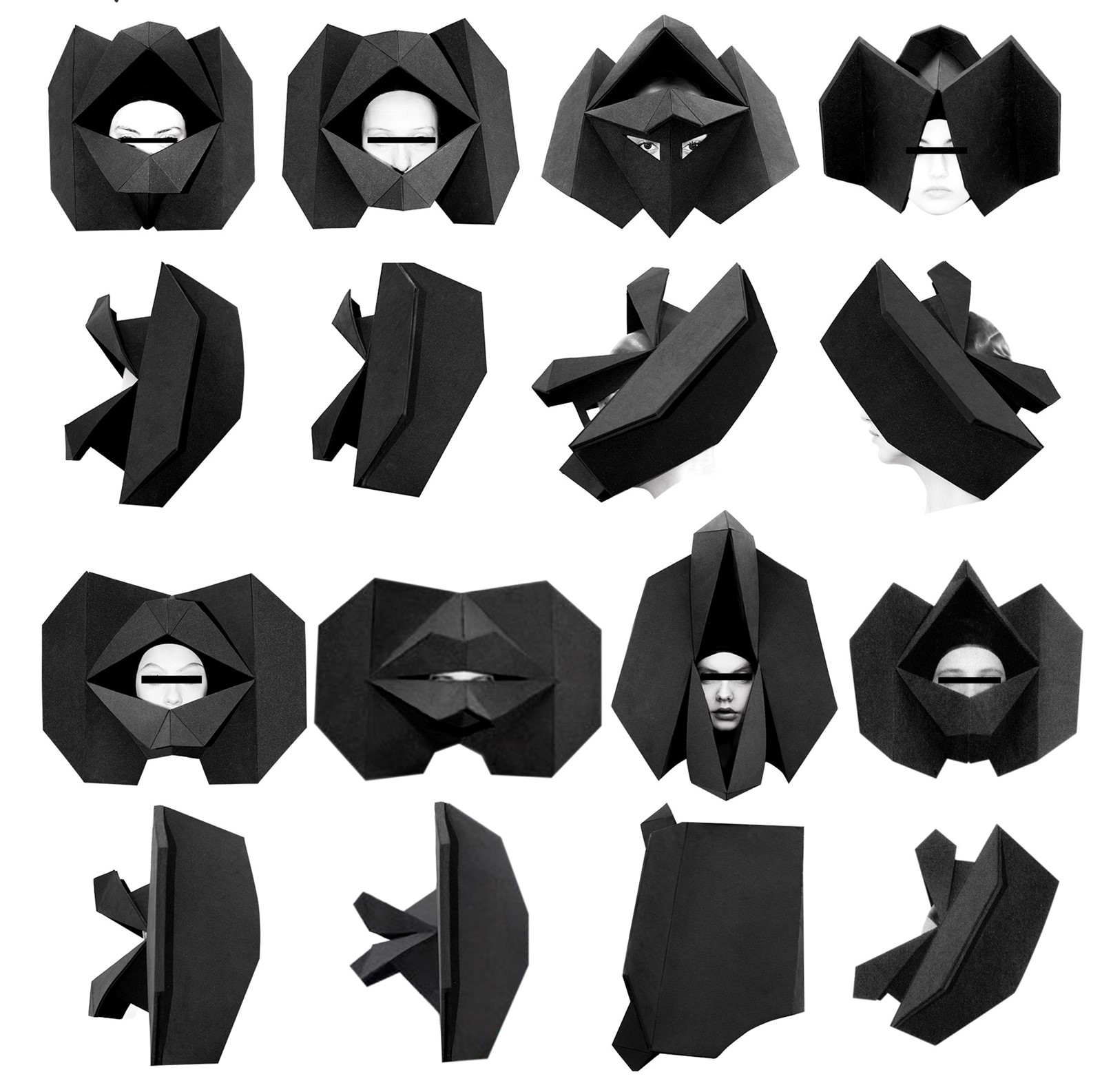
“I’ve been making graphical headpieces for Watanabe over the past three seasons,” Kono said, “and so, in that way, the ones I made for A/W16 were connected to previous collections – but every time, I try to design by different principles like flatness, kinetics, or origami. Watanabe is so strong at using geometrical patterns on clothes and I interpreted that in the headpieces by seeing them as objects, sculptures; they were non-human.” Then, there were the rubber swimming caps which encased some model’s scalps: “Because rubber is industrial, alien-like: it was stretchy enough to cover ears to hide and disguise humanity.” The result of each approach, of the orbic and angular alike, was a precise accentuation of the model's facial features, somewhat severely enhanced by Ueda’s hand.
“I’ve been dreaming of working with Watanabe since I started doing makeup,” explained Ueda, who enacted Watanabe’s “creative idea of construction makeup.” Inspired by the architectural cosmetics of the forties, she erased brows and replaced them with single arched lines in a move that was simultaneously evocative of Marlene Dietrich and drag, while a sculptural use of highlighters was a throwback to the dramatic lighting of Richard Avedon’s monochrome photography. “The clothing this season was quite couture in its construction, so I think [Watanabe] wanted to have that idea of luxury in the makeup as well: that Rita Hayward, Joan Crawford look.” Paired with the “hyper construction dress” of the pieces themselves, Watanabe’s runway was a graceful unison of the super-modern and iconic vintage: a throwback to golden age glamour rendered in black geometry.
See Striking Photos of Junya Watanabe’s Sculptural Fall Collection
 Though Junya Watanabe is no stranger to larger-than-life designs — see this spring’s graphic cubist collection, or last year’s “patchwork madness” show — his fall collection saw a shift toward architectural, origamilike constructions. At times, the headpieces for the show, created by frequent Comme des Garçons collaborator Tomi Kono, were helmetlike; other times, they were crafted like fragile bird feathers. The garments, on the other hand, resembled paper dolls, featuring honeycomb cutouts and spiky hexagonal shapes.
Though Junya Watanabe is no stranger to larger-than-life designs — see this spring’s graphic cubist collection, or last year’s “patchwork madness” show — his fall collection saw a shift toward architectural, origamilike constructions. At times, the headpieces for the show, created by frequent Comme des Garçons collaborator Tomi Kono, were helmetlike; other times, they were crafted like fragile bird feathers. The garments, on the other hand, resembled paper dolls, featuring honeycomb cutouts and spiky hexagonal shapes.

Photography: Erik Madigan Heck
Head Prop: Tomihiro Kono
Pressure Space: Junya Watanabe’s astro-girls

All clothes and accessories by Junya Watanabe SS15
Photography Nicolas Coulomb, styling Agata Belcen,
Hair & Head Prop Tomi Kono, Make-up Isamaya Ffrench
Finding the off-kilter in uniformity, make-up artist Isamaya Ffrench was the mastermind behind the smudged lips and sealed-off mouths at Junya Watanabe’s space-age SS15 show. Collaborating with hair stylist Tomihiro Kono, the duo’s mechanical brides wore vac-packed PVC with dangerous pop-art precision. Taking their show concept one step further for this Dazed shoot, the malfunctioning mannequins have gone into overdrive – a chance, for Kono, to develop the 2D symbolism of his hair-helmets. Part Oskar Schlemmer, part pure imagination, the arresting design was the result of a trial-and-error process. “Junya doesn’t tell me about the concept or clothes, so it’s not so easy to reach the final design,” he says. “He sends us clues,” adds Ffrench. “Like solving riddles.” What was the inspiration behind the beauty looks for Junya Watanabe SS15? Isamaya Ffrench: I was inspired by the precision of industrially produced objects and their synthetic material make-up. The idea that something can appear to be mass-produced, but contain technical glitches that can subtly affect the overall appearance of the object, thus giving it a kind of personality. How does the collaborative process work with Watanabe ? Are make-up and hair the very final things to be considered, or do they co-evolve with the collection?
What is collaborating with Junya Watanabe like? It’s always very challenging working with Junya – and I mean that in a positive way, because it makes me expand in so many different directions. I always have to come up with a design that suits the clothes, but the amazing thing – and I think the most important part about the way that we work together – is that Junya never shows me the collection. It’s more about a feeling between us, an energy, working in silence. It’s always very special.
What inspired the headpieces? Were there any particular references? Under the theme of 'Semiotics and Structurism,' I came up with six or seven design propositions for Junya, and made paper prototypes of them. When he chose the one he liked, I then had to think of what material to use. The design that he chose was very big, so I had to think of a light material for stability and, of course, the model. That’s when I came up with the idea of sponge…but it was my first time using sponge as a head-piece material. The design itself was originally inspired by a 3D haircut diagram, the technical drawings that stylists use for cutting hair, that I learned how to draw when I was working in a hair salon.
How did you construct them? I started to calculate the circumference using the diameter…it was like studying maths back at school. I made a column for the base of the head-pieces and then added some hair-wings in a radial pattern.
meet junya watanabe’s go-to hair guru, tomihiro kono
After setting up shop first in Tokyo, then London, and now New York, it might seem like hair stylist and headpiece designer Tomihiro Kono has seen it all. But after nearly 20 years creating some of the most one-of-a-kind looks in fashion, Tomi is just as curious and adventurous as he was when he spent his childhood afternoons searching for buried treasure hidden in the Japanese mountains. Tomi transitions effortlessly from fashioning romantic Victorian headpieces straight outta Miss Havisham's closet to creating the Party Monster-meets-Metropolis retro-futuristic caps that stole the show at Junya Watanabe fall/winter 15. We catch up with the designer about working with Junya, ditching orange groves for hair salons, and why his parents wouldn't let him play Nintendo.
Tell us about yourself. Where did you grow up and what were you interested in as a teenager?
I grew up in a small village in southern Ehime, Japan surrounded by mountains and the sea, so most of my time was spent outside with nature, family and friends. My parents encouraged me to spend time outside and refused to buy me a Nintendo game machine, which was popular with my peers. Instead, they bought me a baseball glove. I was first inspired by the film The Goonies; I pretended be an explorer and looked for treasures in the isolated islands surrounding my home town, built base camps and made treasure maps. So many adventures and so much fun! Then I became a teenager and loved rock and punk music and, of course, fashion. I would sit and read UK culture and fashion magazines for hours.
How did you get started working in hair?
Quite funnily, really, as I was supposed to be going to the agricultural university to follow in my parents' footsteps. They were orange farmers, but I didn't qualify and decided to go in a different direction: HAIR. At first I was more into working with animals - I love animals - but my mother advised that I should work with people and cut their hair because I would be thanked by them.
You worked in Tokyo for ten years before moving to London in 2007. Has either city influenced the direction of your work, and if so, how?
When living in Tokyo, I was fascinated by European cultures, design, fashion, everything. Whilst working in the hair salon, I was into making cool images and studied photography by assisting photographers. I wasn't able to sleep much when I was in Tokyo because I was so busy working in a salon during the day, training at night, and then hunting hair-cut models in Harajuku on my day off. My aim was to concentrate and master all the basic haircut techniques before I left Tokyo. Before I left Japan for London, I visited Kanasugi, a traditional Japanese beauty salon, to learn some Geisha hair techniques - called Takashimada - to help perfect hair technique from my culture. When I got to London, I found there was so much inspiration around. So many people were creative and original and had their own lifestyle and fashion. So unique.
When and how did you make the transition from hair styling to creating hair and headpieces?
In London, there was so much creativity and it felt avant-garde: mixing old with new, creating intelligent, edgy styles together. I felt I needed my own originality as a hair stylist, my own voice, my own direction, so I started making head props. I always loved visiting antique markets in London, they can be so inspirational. I wanted to learn more and understand how things were made by hand - all the details of embroidery in Victorian period clothes and laces - to help with my head pieces and props.
You've worked with Junya Watanabe on several collections, including menswear. What's your collaborative process like?
It's always very challenging to make something new between us, and I mean this in a good way. Mr. Junya Watanabe doesn't show me the collections or what his vision is for the coming collection. So every time, I have to come up with ideas to show Mr. Junya Watanabe when we meet. It's a very organic process, working in silence with Mr. Junya Watanabe. It's more of a feeling, an understanding between us. When finalizing the looks, we discuss several times in meetings before we head to Paris for the show. I always can't wait to see how my head props and his clothes come together.
What's the story behind your pieces for Mr. Watanabe's fall/winter 15?
Under the theme 'Semiotics and Structuralism,' I came up with six or seven designs and proposed them to Mr. Junya Watanabe, and he chose one design he liked. As I had made all prototypes in paper for Junya to see, I then had to think about what material to now use! The design Mr. Junya Watanabe chose was very big, so I had to think light material for stability and, of course, for the model. Then I came up with the idea of SPONGE! This was my first time using sponge as a head piece material. The design is originally inspired by 3D hair-cut diagrams - technical drawings that hair stylists use for cutting hair. I learned how to draw the diagrams when I was working in hair salons.
You've mentioned in the past that you enjoy working with vintage materials. What are some of the most interesting materials you've found or sourced?
Whilst in London, I was very into vintage and natural material. Then I moved to NYC and started playing with materials that are more chemical and industrial. I like to adapt to my surroundings, so my style depends on where I'm living and what I see in my daily life.
Technology Attack. Junya Watanabe AW15
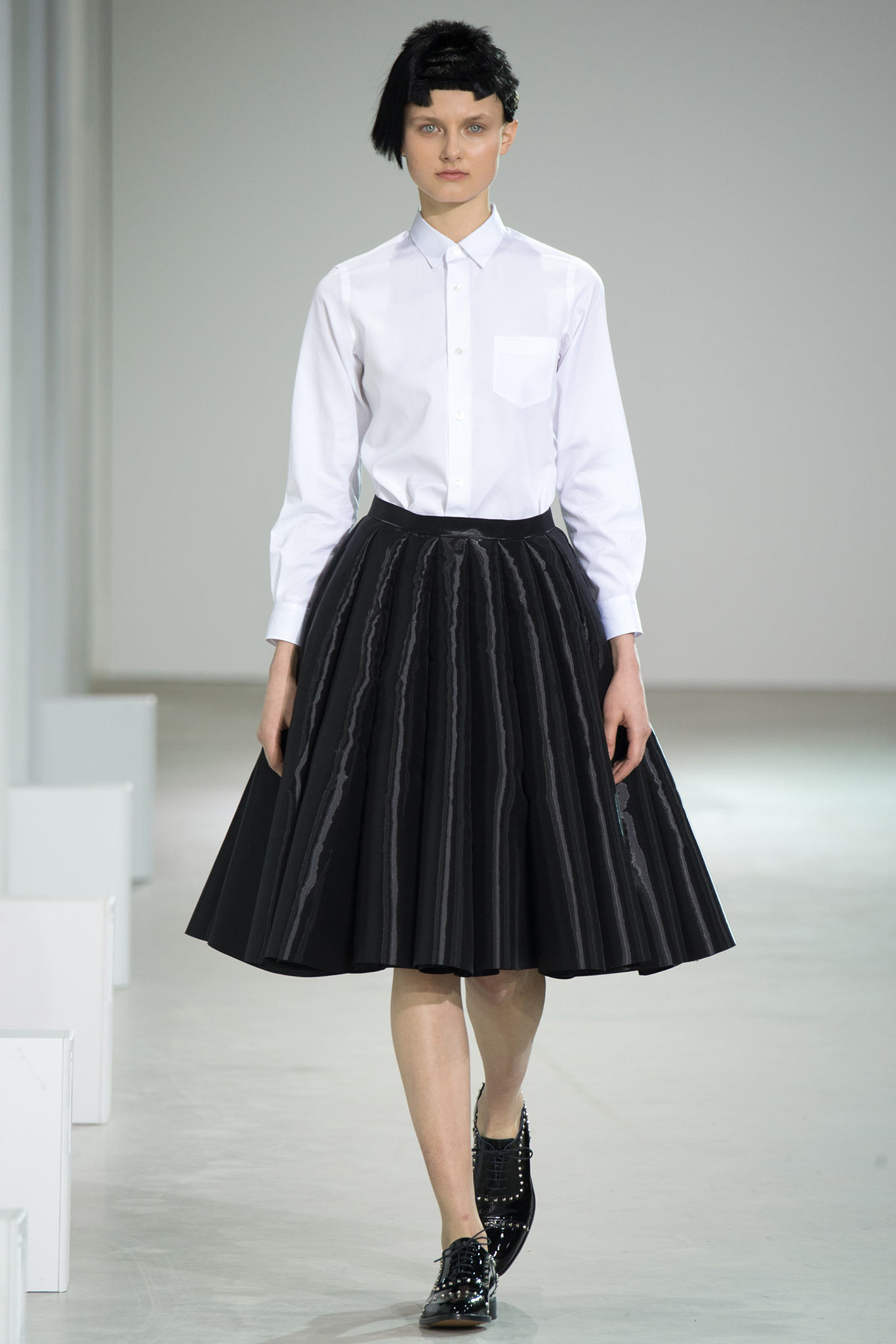
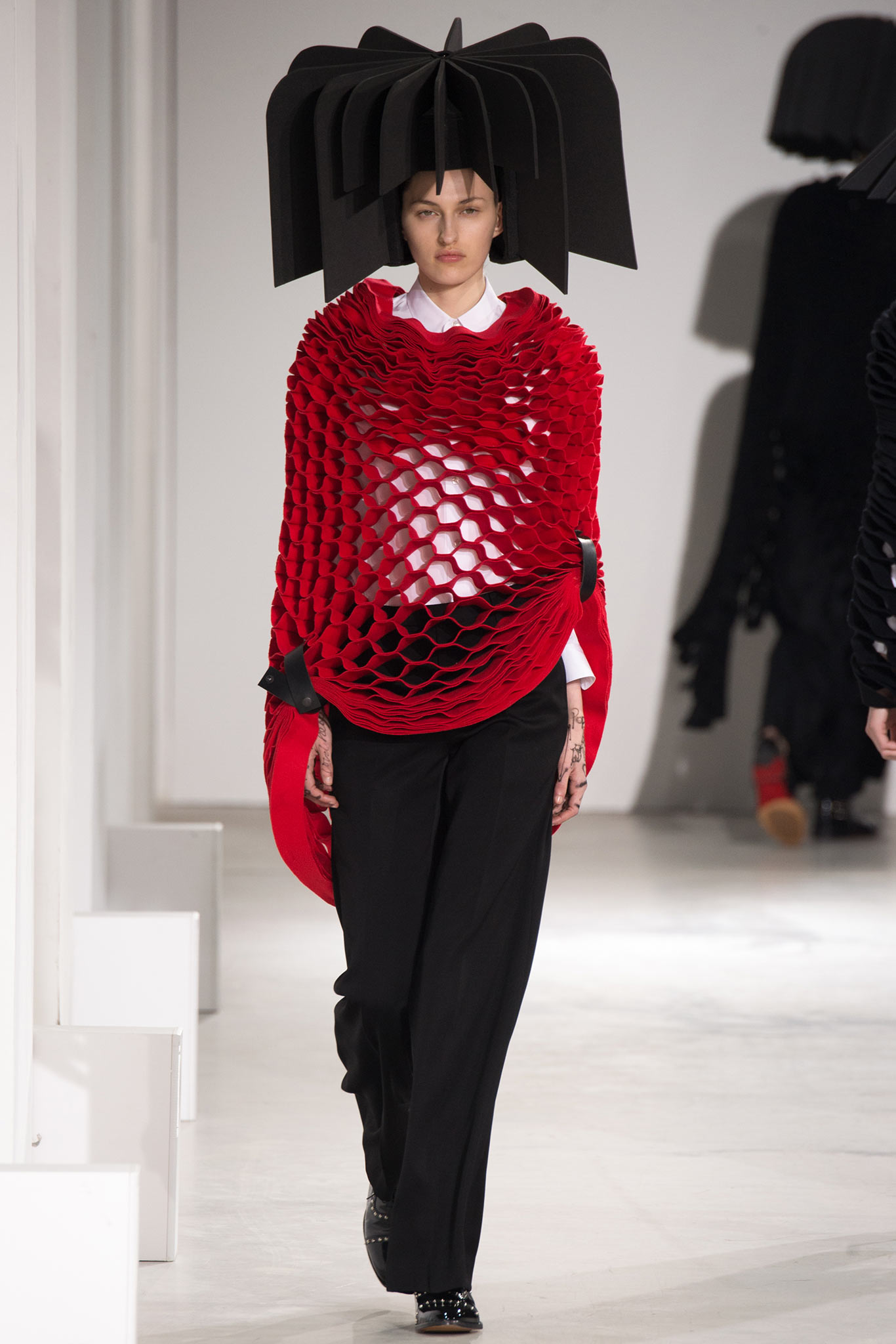
Junya Watanabe is considered as one of the most modernistic designer of our times. This season, he prepared another break-out which seems to be out of this world – thanks to high technology and Tomihiro Kono’s help, the AW15 season for the designer means the importance of maths. Isamaya Ffrench doodled mathematical equations onto the arms, legs and necks of the models while Tomihiro Kono created angular foam sculptures to sit on the top of their heads. The two Japanese geniuses worked together to create fashion in new dimension. The capes made out of hexagonal, laser & hand – cut textiles were fixed and improved for more than three months – it took a lot of time calculating its durability. If talking of the alien head-pieces, Kono approves – that was a hard thing to do. “I started to calculate the circumference using the diameter…it was like studying maths back at school. I made a column for the base of the head-pieces and then added some hair-wings in a radial pattern.” Definitely, science and fashion get closer and closer together each season…
Tomihiro Kono on Mathematical Headpieces at Junya Watanabe

With undulating fabrics and concertina-like creations, Junya Watanabe's A/W15 collection was a self-proclaimed effort at "exploring dimensionality through clothing." Isamaya Ffrench scrawled mathematical equations onto the arms, legs and necks of the models while Tomihiro Kono created angular foam sculptures to sit atop their heads – it all appeared a wonderfully buoyant inquiry into the technical possibilities within fashion. We spoke to Tomihiro about his inspirations, how he managed to turn his ideas into reality for the show, and what the collaborative process is like with Watanabe.
What is collaborating with Junya Watanabe like? It’s always very challenging working with Junya – and I mean that in a positive way, because it makes me expand in so many different directions. I always have to come up with a design that suits the clothes, but the amazing thing – and I think the most important part about the way that we work together – is that Junya never shows me the collection. It’s more about a feeling between us, an energy, working in silence. It’s always very special.
What inspired the headpieces? Were there any particular references? Under the theme of 'Semiotics and Structurism,' I came up with six or seven design propositions for Junya, and made paper prototypes of them. When he chose the one he liked, I then had to think of what material to use. The design that he chose was very big, so I had to think of a light material for stability and, of course, the model. That’s when I came up with the idea of sponge…but it was my first time using sponge as a head-piece material. The design itself was originally inspired by a 3D haircut diagram, the technical drawings that stylists use for cutting hair, that I learned how to draw when I was working in a hair salon.

How did you construct them? I started to calculate the circumference using the diameter…it was like studying maths back at school. I made a column for the base of the head-pieces and then added some hair-wings in a radial pattern.
Pushing the physical dimensions of clothes with 3D incarnations of Victor Vasarely paintings, algebraic scrawls and bulbous headpieces
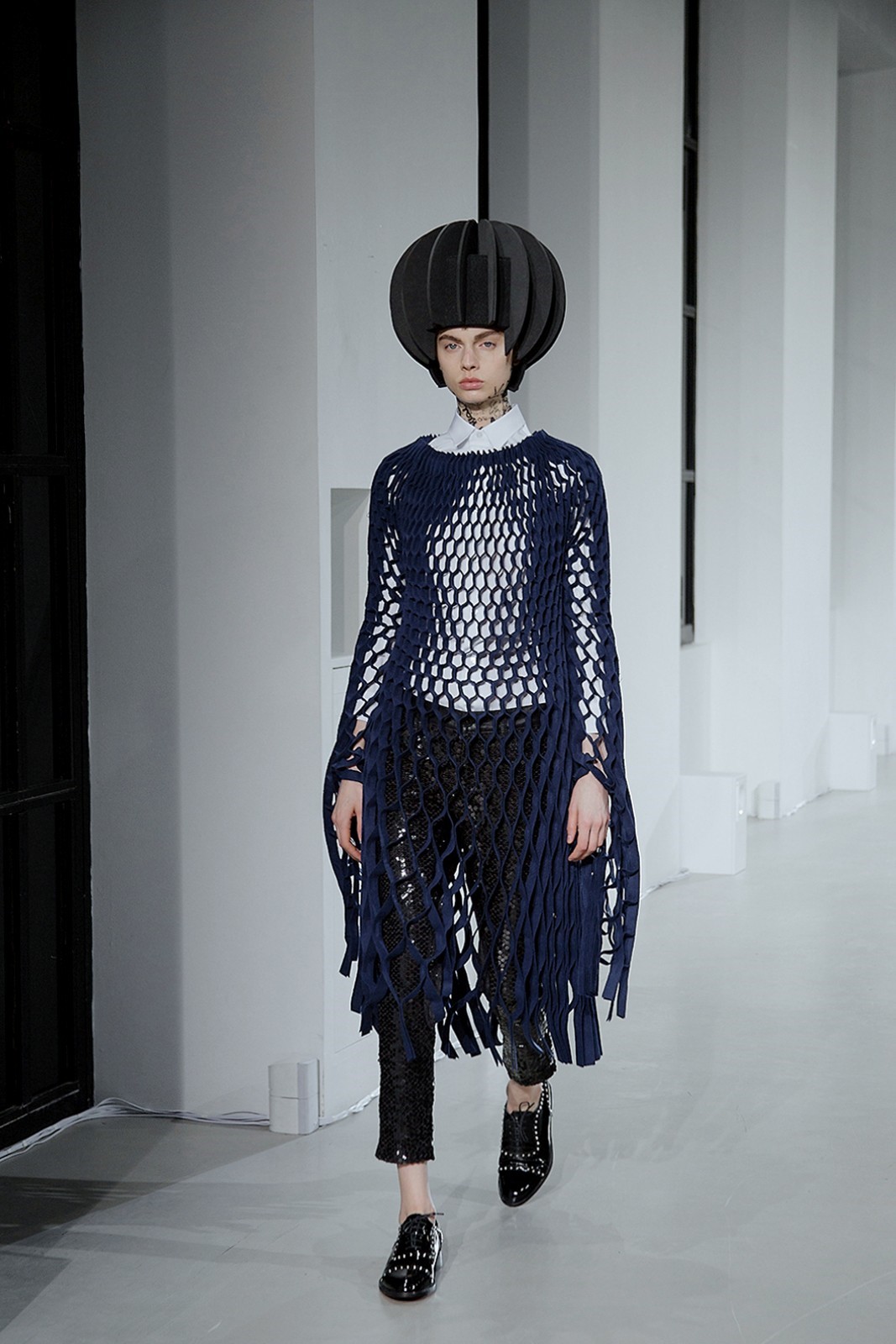
Junya Watanabe SS15
Photography: Virginia Arcaro
From McQueen's fetishistic face masks to mouths sealed with sellotape at Junya Watanabe, we chart the city's top five most iconic beauty looks
We didn't think much could top New York's multiple brow piercings and mini bun mohawks, but Paris Fashion Week threw up some of this season's most boundary-pushing beauty looks. We take a look at the artists who constructed masks, sealed mouths and painted bodies in Paris's five most directional SS15 transformations.

Junya Watanabe SS15
Photography: Susie Bubble
Hats Off to Junya Watanabe

Junya Watanabe SS15
Photography: Virginia Arcaro
Junya Watanabe SS15
Initial reaction:
This is the show we've been waiting for. In what seems to be this season's month-long obsession with minimalism and a lack of the conceptual, Junya Watanabe's latest collection brought with it a welcomed sense of complexity, and conquered new ground. We've come to expect nothing less from the elusive Japanese mastermind, but even for his standards, it felt revolutionary.
The look:
A Watanabe show is always difficult to dissect, but that has become part of the charm of experiencing his work. This season his models emerged wearing space age fishbowl headpieces created by Tomi Kono, complete with PVC silhouettes of hair – those in red reminiscent of the signature ‘do of Japanese artist Yayoi Kusama, renowned for her obsessive repeated forms and radical art 'happenings' in New York during the 60s. As for the clothes themselves, prints that made their way across garments in cut out coloured plastic felt like the hypnotic futurist paintings of Giacomo Balla, come to life.
Pressure drop:
Lips were painted blood red, with mouths then covered with sheer tape – the show’s make up was the work of Dazed contributor Isamaya Ffrench, known for her hyperreal creations. It wasn't only the mouth that was restrained – several headpieces covered an eye entirely, the sense of the off key enhanced by the way bright shadow was daubed across only one eyelid. Set against the disjointed soundtrack, these elements of the show gave the feeling of a building pressure. Through a collection that presented an almost retro vision of the future, it felt as if it was ideas of the ‘modern’ woman Watanabe was pushing to breaking point.
Junya Watanabe
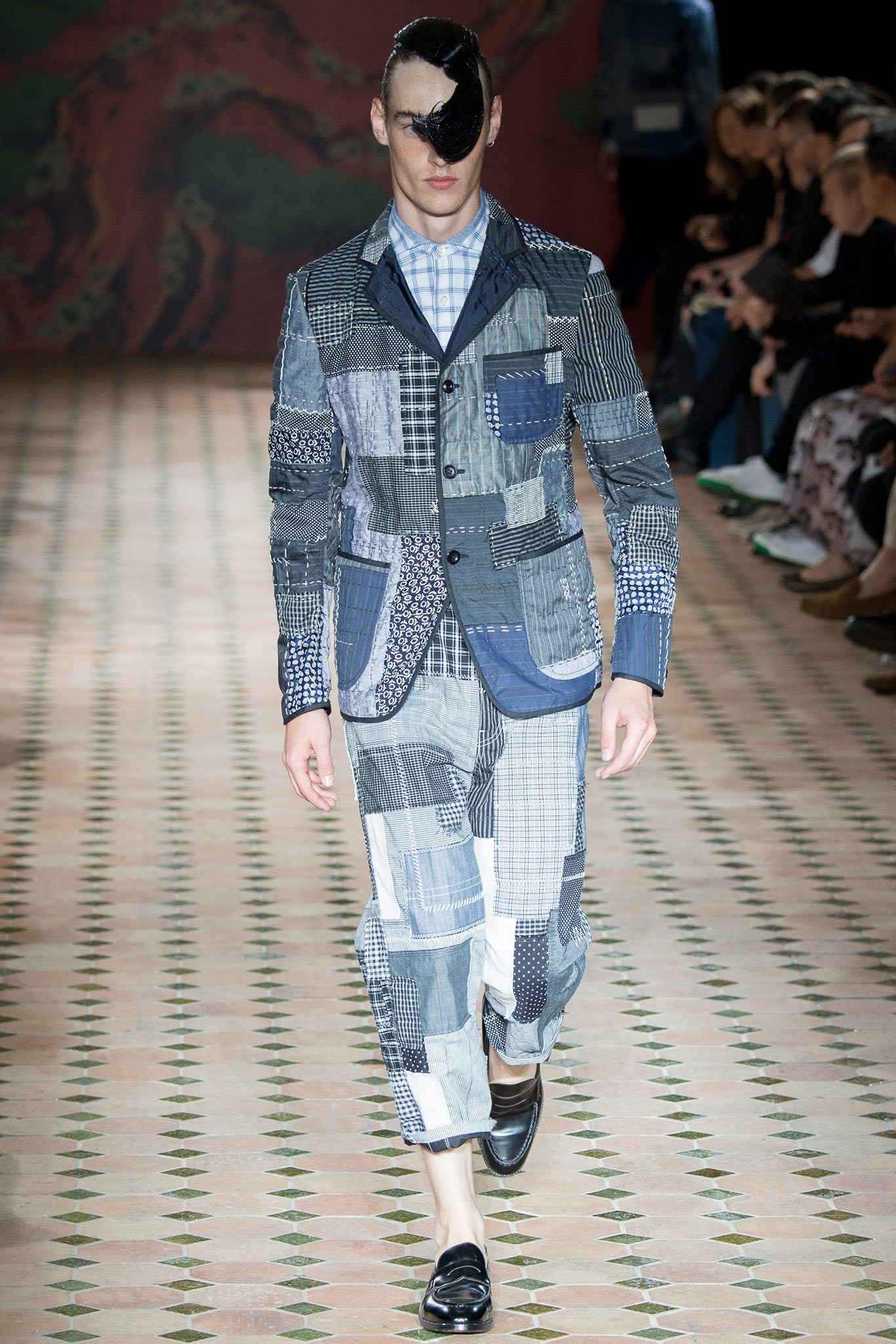
When Junya Watanabe has anything to say about his collections, it is often gnomic to the point of obfuscatory, but today's declaration, "Japanese tradition," was as succinctly accurate as you could wish. After what feels like years absorbed by the nuances of European workwear, Watanabe came home this season with a brilliant collection built on boro, the traditional Japanese patchwork that began centuries ago as peasant clothing. It was still the humble working man that the designer was celebrating, but boro has such a dense, furiously worked quality that each garment seemed to be telling a big story, rather like Raf Simons' mobile mood boards the other night.
Patchwork has served Watanabe well in the past. Last season's jeans were instant fashion classics. But boro has a particular beauty that elevated this collection. As a whole suit—in the traditional indigo, but also in grayish and cream tones—it was the apotheosis of the hobo chic the designer has made a signature of.
But boro wasn't the only Japanese tradition he was honoring. Ancient motifs like camellias and waves were integrated into patches of pinstripes, check, and denim, or woven into spectacular T-shirts. A soundtrack of that salt-of-the-earth traditional entertainment, sumo wrestling, accompanied the show. The models sported lacquered hairpieces by Tomihiro Kono, based on sumo styles. After a few minutes of wrestlers slapping and grunting, jazz kicked in, a reminder of Japan's extraordinary ability to absorb cultural imports and make them its own. Then there was a burst of the stringed koto, the country's national instrument. Accessories were workers' flip-flops and a simple square of printed indigo fabric knotted into a sack, carried in the hand or slung across the chest. Its rejection of excess means that Watanabe may have unwittingly come up with Spring's It-est man bag.

What is the influence of nature on fashion?
That is the intringuing perspective adopted by Gemma Williams, curator and designer of the Second Nature exhibition in the Pitzhanger Manor in Ealing.
Flowers, birds, insects, trees, skulls and much more have invaded architect Sir John Soane’s country retreat. Dresses are made with feathers and necklaces with dandelions, while black butterflies almost climb a wall and worms are worn as broches.
The show explores the elaborated relationship between nature and fashion, trying to understand its impact on inspiration, patterns, material and shapes.
Presenting a sparkling review of this underlying link, the exhibition features the work of more than 40 international artists and designers, such as Cong Tri, Giles Deason, Lara Jensen and Roksanda Ilincic.
Two gigantic greenhouses welcome some impressive pieces of clothing in the middle room making you feel like you are entering a white garden of fashion. Inspired by the collective passion of Sir John Soane, the small room is designed as a cabinet of curiosities, gathering all the surprising pieces of this show.
Second Nature has adopted a captivating angle to talk fashion. A must-see.

5月8日(水)〜5月20日(月)までラフォーレ原宿1Fコンテナスペース(1F階段近く)にて、期間限定イベントとしてNEON O’CLOCK WORKS がプロデュースする不思議書斎空間『NEON O’CLOCK LIBRARY』がオープン。
会場には、NEON O’CLOCK WORKSの新作 作品集・オブジェをはじめ、ボックスコラージュ、アーティストの一点ものZINEやレア本などを陳列しつつ、『ART BIRD BOOKS』の店主、加藤正樹とonly free paper元代表、石崎孝多などブック界のスペシャリストたちのセレクトによる本やポスター、タブロイド紙などが販売される。
NEON O’CLOCK WORKSは、河野富広と丸山サヤカによるクリエイティブ・ユニット。ヴィジュアルメイキングを中心とした作品は、写真、映像、インスタレーション、本 (作品集)などと幅広い。2007年よりロンドンを拠点とし、これまでの作品は、インターナショナル・アートマガジンの表紙を飾るなどし徐々に注目を集め、アートとファッションの境界に立ちながら表現の可能性を広げる。展示は東京・ロンドン・ドバイで行われ、今後もインターナショナルに発表の場を広げていく。
最近では、JAPAN AVANT GARDE シリーズが、ロンドンのクリスティーズのコンテンポラリーアートフェアで展示販売された。海外のミュージシャンやパフォーマーとのコラボレーションも頻繁におこなう。個人的にも河野はHAIR & HEAD PROP ARTIST ‘TOMIHIRO KONO’として、丸山は写真家、フィルムメーカーとして活動する。
http://www.neonoclockworks.net
http://www.tomihirokono.com
加藤正樹 / art bird books 店主
現在、中目黒のカフェ&バーMalmo内で、コラボで写真集なども行う。中目黒駅前の店舗は山手通拡張立退きのため店舗はクローズ、現在は代官山蔦屋書店アートフロアのブック・コンシェルジュとしても活動している。
石崎孝多 / Kota Ishizaki
1983年生まれ。フリーペーパー専門店「Only Free Paper」元代表。Amazonにない本を紹介する「nomazon」を始め、「五感書店」「朝まで本屋さん!」など本の企画、その他、執筆、選書、店舗のディレクションなどを行っている。
『NEON O’CLOCK LIBRARY』
会場:ラフォーレ原宿1階
期間:5月8日(水)〜5月20日(月)
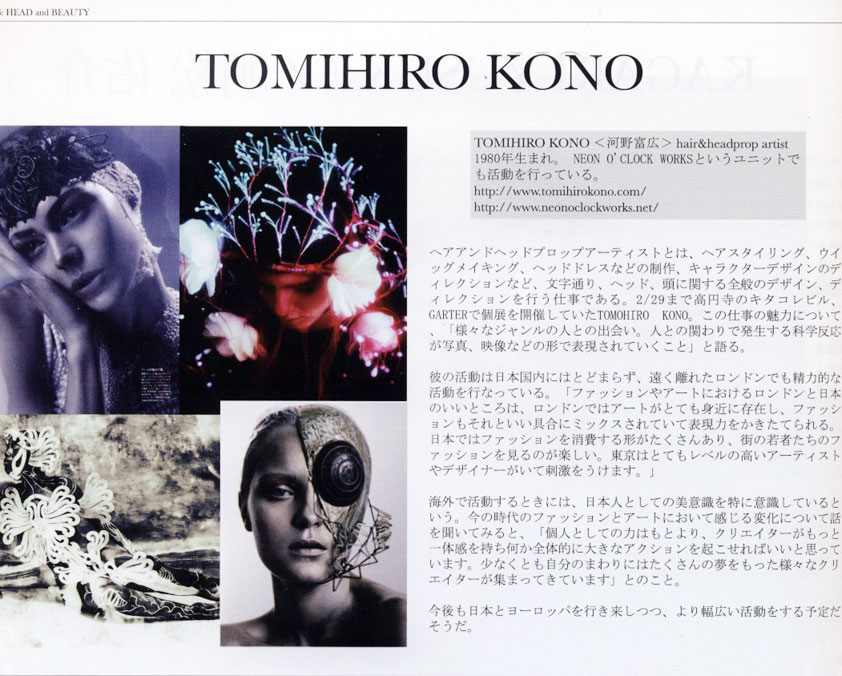
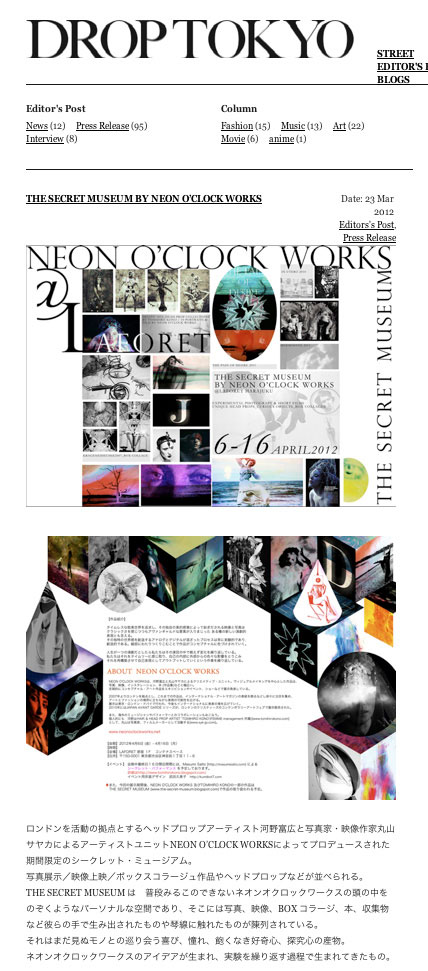
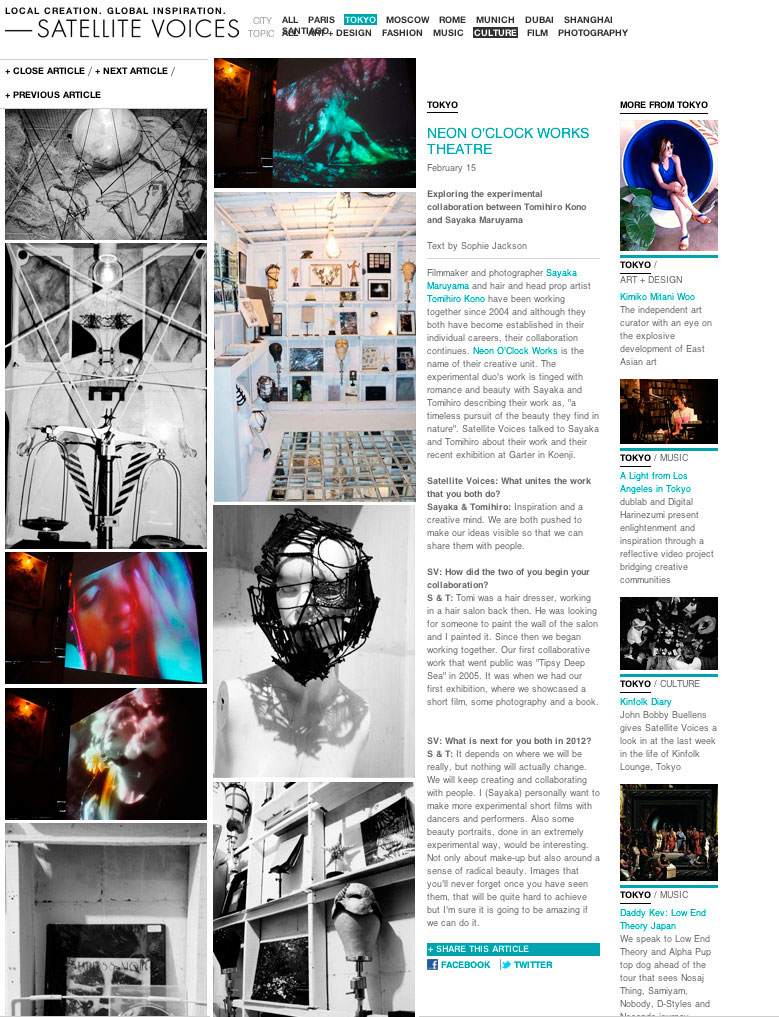


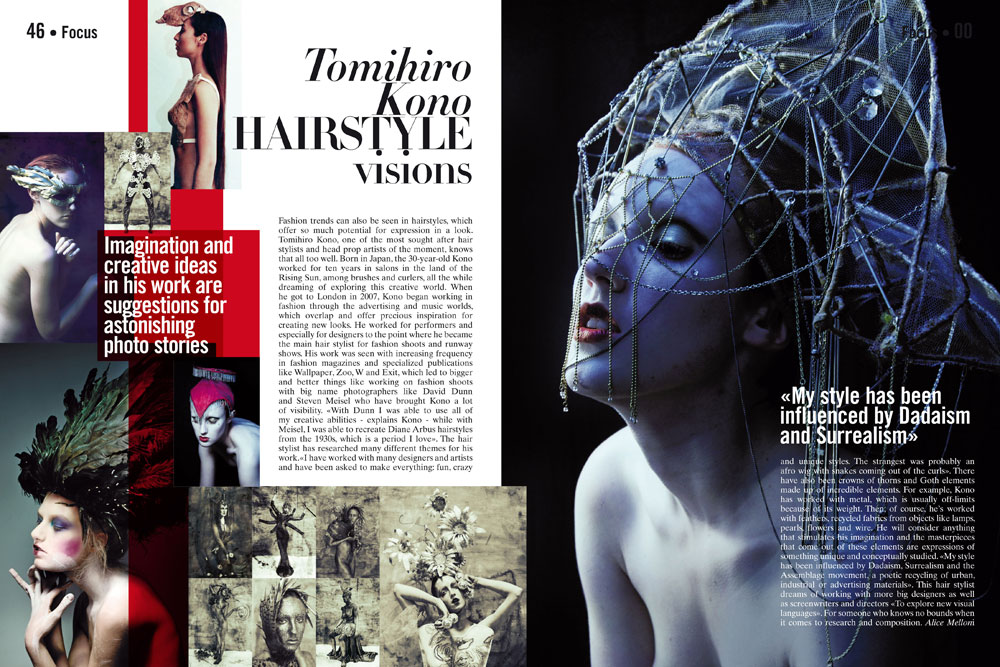
New Beauty film 'Mnemosyne'
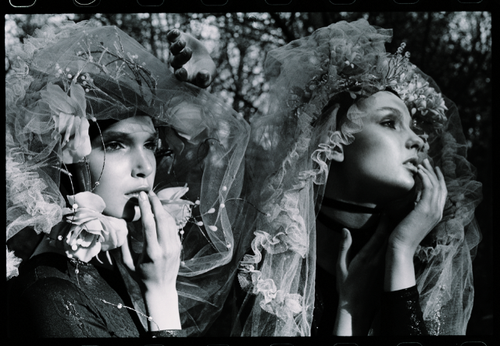 My two Japanese friends in London hair & head prop artist Tomihiro Kono and filmmaker and photographer Sayaka Maruyama, have just completed their latest film, MNEMOSYNE.
My two Japanese friends in London hair & head prop artist Tomihiro Kono and filmmaker and photographer Sayaka Maruyama, have just completed their latest film, MNEMOSYNE.
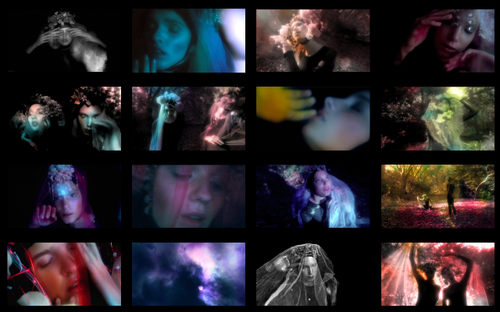 Tomi wrote me an email and had this to say about the film, "I'm so happy to update you that I'm going to launch this new beauty film 'Mnemosyne' which we have been working on for the last 6 months. Showing respect to the beauty of nature, I used flowers as a main motif for this new head prop series. This film is a piece of fantasy and romanticism reflected in the light and shadows. The films we make are a way of expressing our vision which we hope to share with people. Compared to the dark films we made last year, this year we are more into romanticism, escapism, and some kind of mystical feeling (although our eternal theme is the sense of beauty)."
Tomi will have a head prop exhibition at Sister Tokyo in Tokyo on DEC 5-11TH 2011.
Tomi wrote me an email and had this to say about the film, "I'm so happy to update you that I'm going to launch this new beauty film 'Mnemosyne' which we have been working on for the last 6 months. Showing respect to the beauty of nature, I used flowers as a main motif for this new head prop series. This film is a piece of fantasy and romanticism reflected in the light and shadows. The films we make are a way of expressing our vision which we hope to share with people. Compared to the dark films we made last year, this year we are more into romanticism, escapism, and some kind of mystical feeling (although our eternal theme is the sense of beauty)."
Tomi will have a head prop exhibition at Sister Tokyo in Tokyo on DEC 5-11TH 2011.
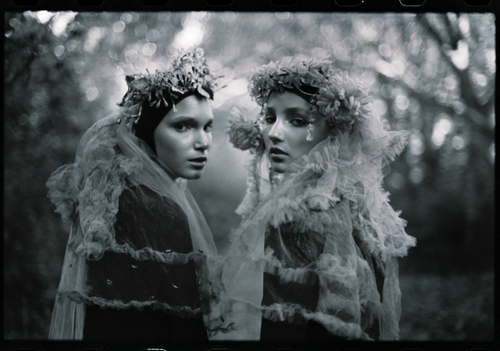
This is the second collaborative film with Wendy Bevan and Masumi Tipsy Saito. Wendy Bevan expresses a woman’s outer beauty and emotions while Masumi Tipsy Saito performs as an inner soul. The director Sayaka Maruyama thinks this is a very feminine piece as it conveys complex emotions and the fragility / the firmness of woman which are hidden inside beauty. The color of vivid red and blue connote the invisible emotional flows inside woman… the passion, anger, calmness and nothing. This inspiring location where the sea is nearly eroding the land, and there are strange shaped trees are nearly drown is where Wendy Bevan grew up. Tomi will have a head prop exhibition at Sister Tokyo in Tokyo on DEC 5-11TH 2011.
THE JAPANESE EDGE
「世界が尊敬する日本人25人」
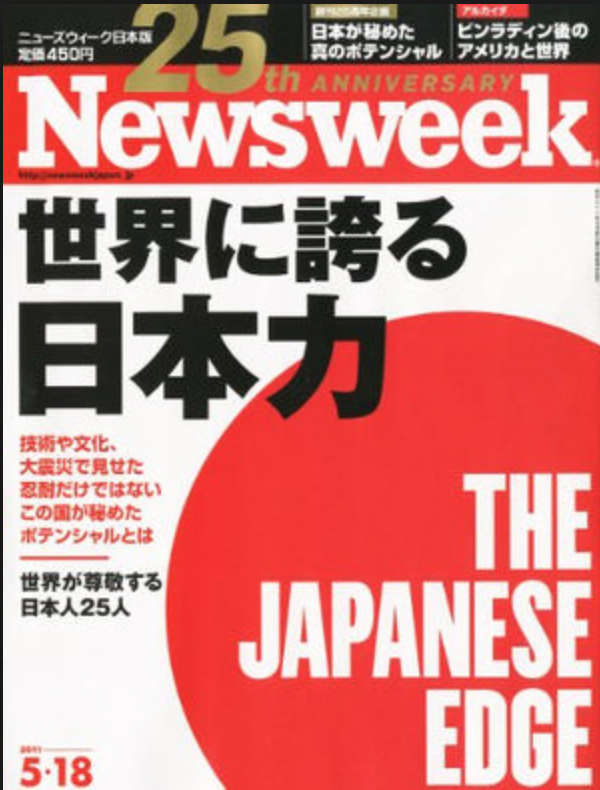
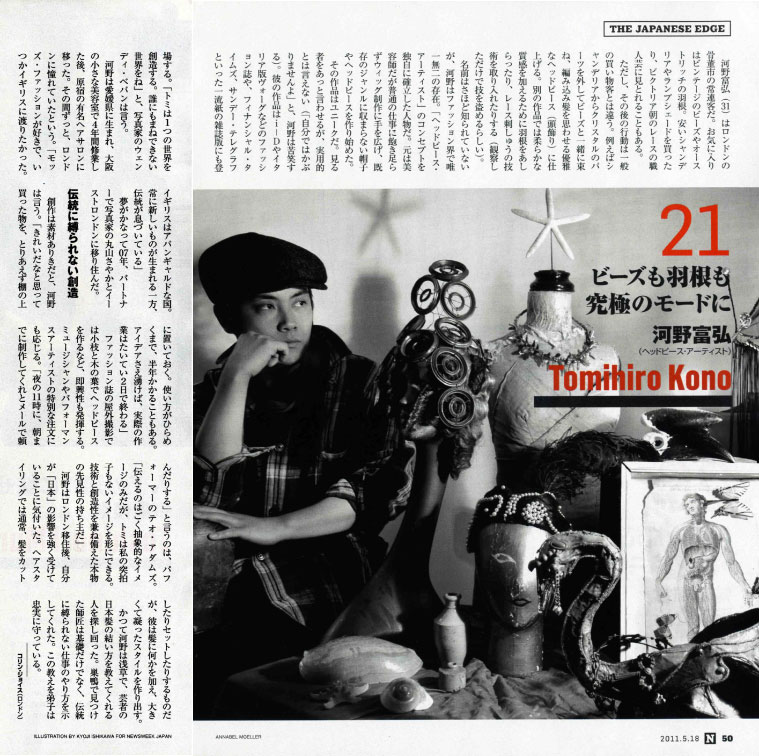
HEAD PROP COLLECTIONS BY TOMIHIRO KONO 2010 17 SEPTEMBER 2010 DURING LONDON FASHION WEEK DIRECTION / PRESENTATION BY NEON O'CLOCK WORKS
DIRECTION / PRESENTATION BY NEON O'CLOCK WORKS
Many thanks to all who helped us out!
Deja Vu – Performance directed by Neon O’clock Works from sayaka maruyama on Vimeo.
QUOTATION>
NEON O'CLOCK WORKS
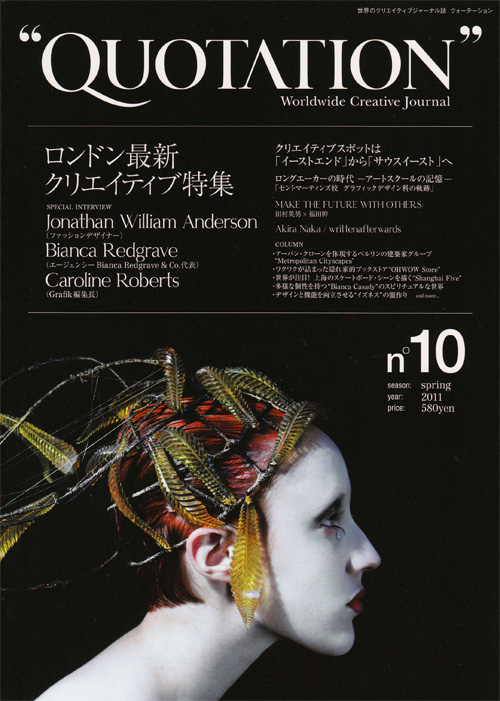
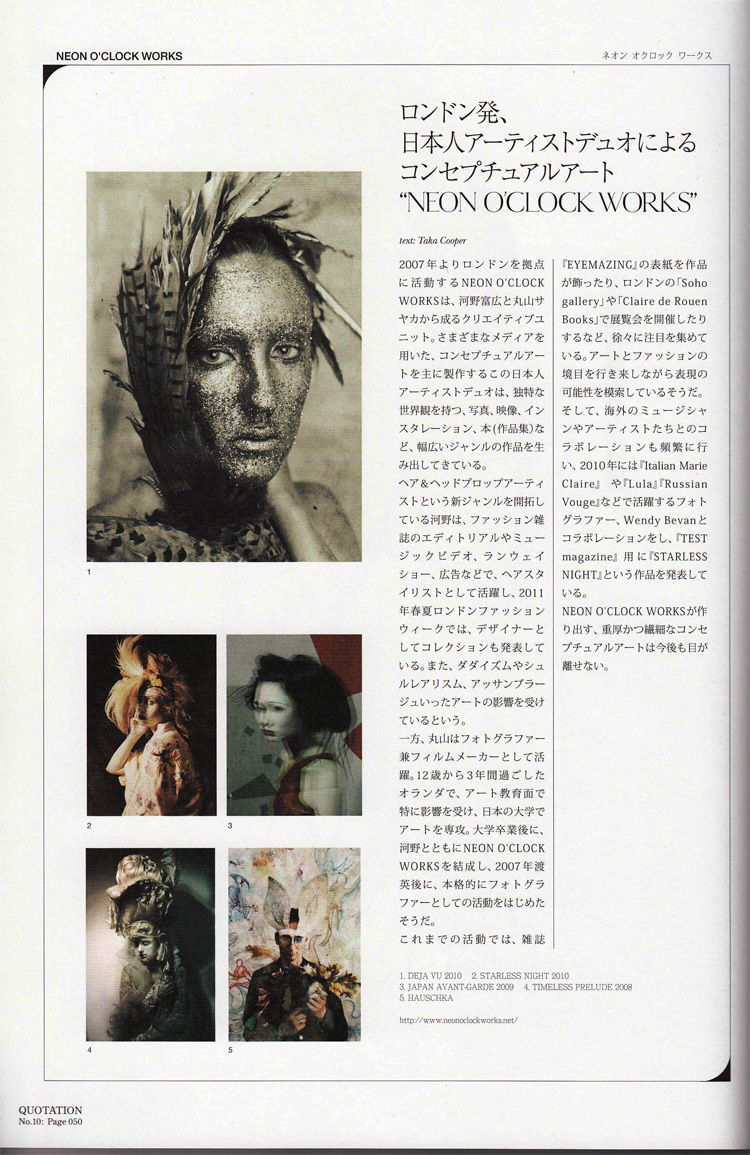
Collaborative video art 'Mnemosyne'
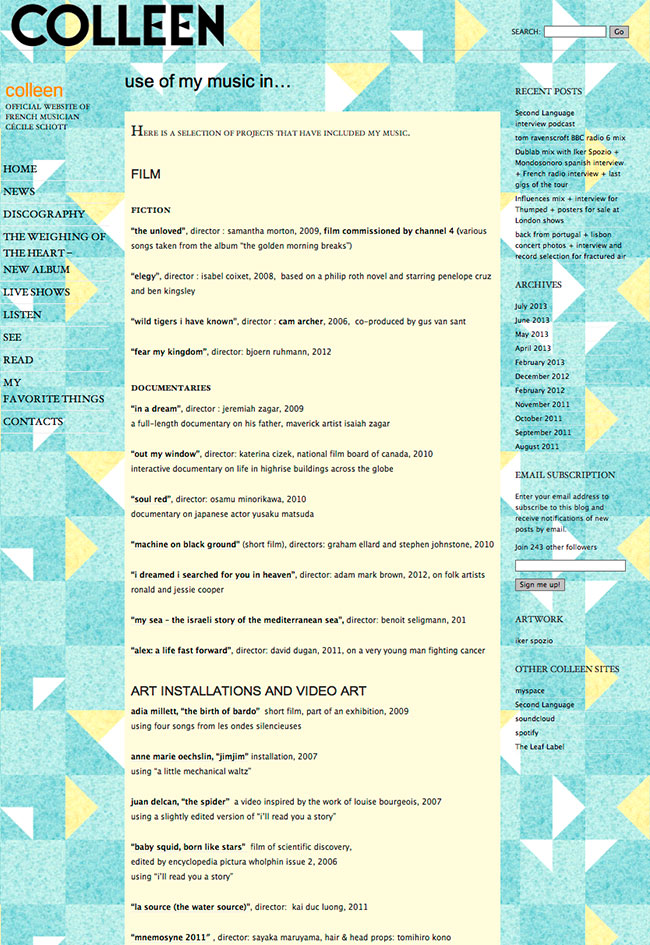
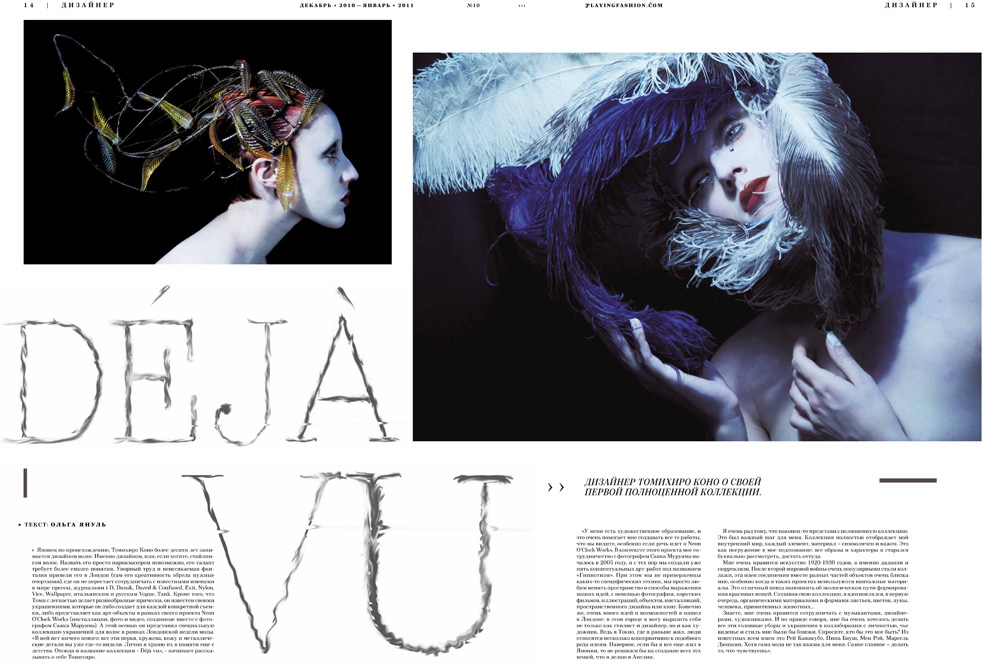
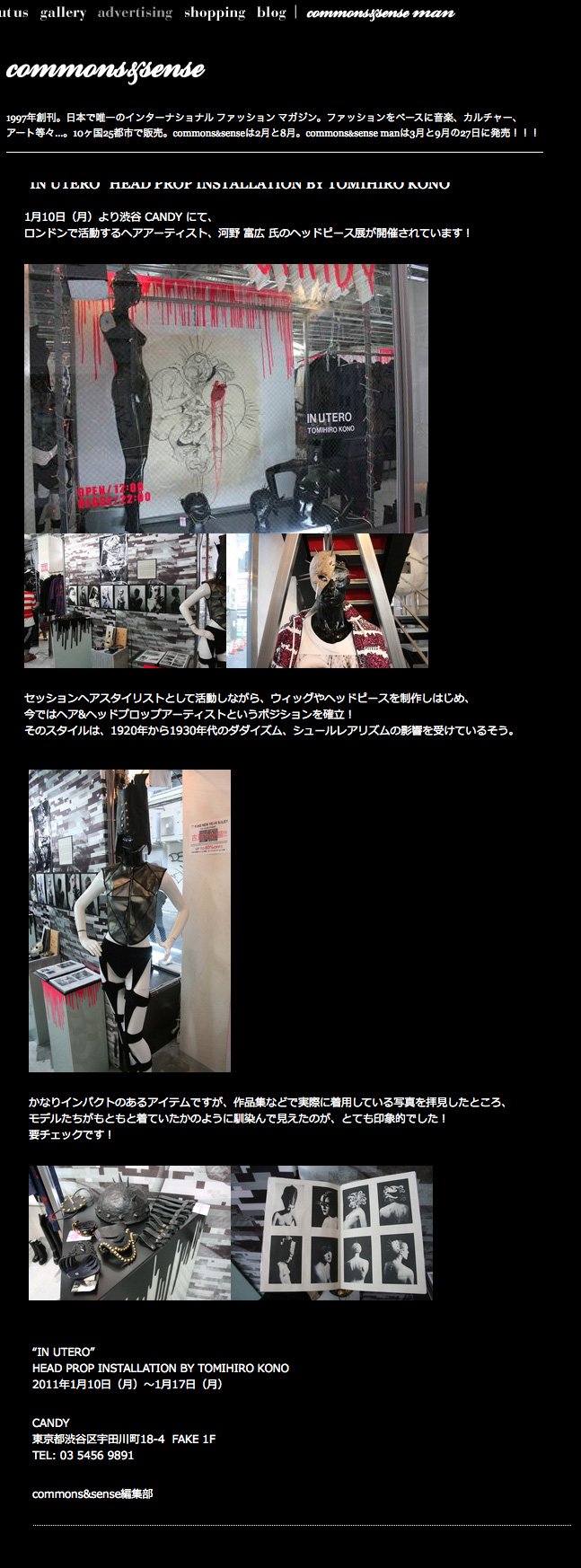
I really dislike Tumblr. To me, it’s a giant, pulsating mood board devoid of context; the who, what, why and where. What are the stories behind all of those pictures? Without that it’s just a bunch of meaningless scans (more or less) tumbled through eternity.
So…let me talk through my foot when I say that the last thing I want to do is write a bunch of hoo-haw words here when really all I want you to do is look at the damn amazing pictures.
But context? Here is some &%$#! context: Tomihiro Kono is a Dadasim-inspired hair stylist and hat/mask artist. Now, I’m going to shush so you can whet your imagination with these pictures.
私は「Tumblr」を好まない。何故かというと、「イメージ・ボード」を作るような道具だけで止まって、アップする画像の「誰が、何処で、何を、どうして」という背景のコンテクストはほぼ無いからね。
最初に矛盾なことを言ってしまって、先に「すみません」とあやまります。だって、この画像は美しすぎて、沢山の文書でごちゃごちゃにさせるより、まずは画像だけに集中してほしいの。でも、はい、わかった・・コンテクストがないとわからないよね。じゃ、これならどう?Tomihiro Konoという方はダダイズムにインスパイヤーされたヘアスタイリスト及びヘッドピース・マスクの制作者。彼のすばらしい作品をご覧下さい:
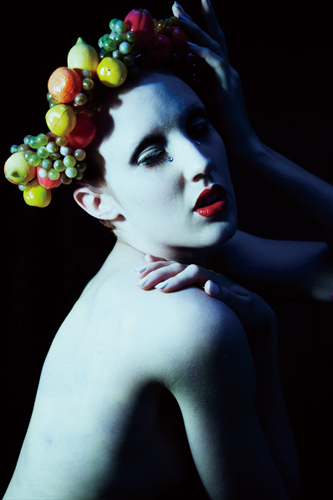 |
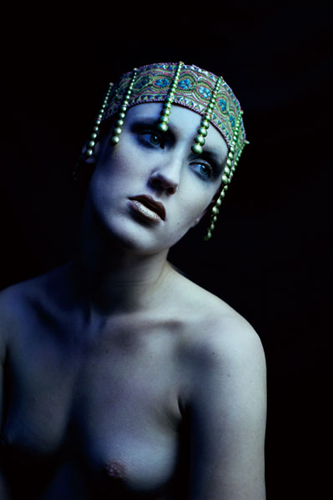 |
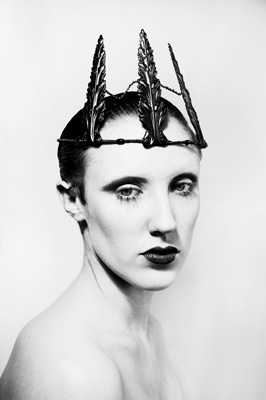 |
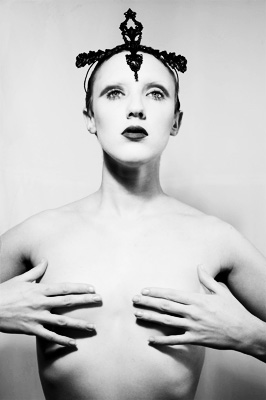 |
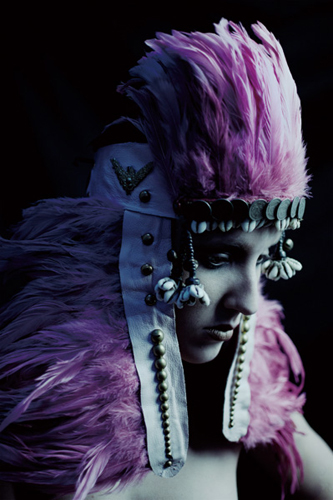 |
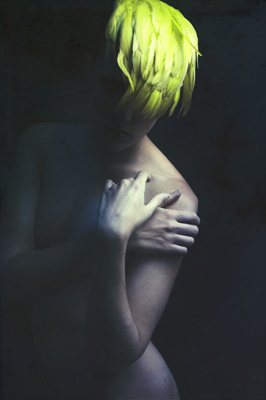 |
Tomi’s website is just bursting at the seams with examples of his work. Really, it just doesn’t end. There.is.so.much. And it’s all quite amazing, visually..I got somewhat exhausted just going through it all and trying to choose my favorites. I know it’s quite rude to equate an artist with a machine, but his output is outta control. And he has only been making hats and masks since 2009?? How is that possible?!? He is a machine, I am sure of it.
TomiさんのHPには、本当に沢山の作品がずらーーーーーーり。いや、ほーんとうに。多いってば。全て素晴らしすぎて、チョイスするのに頭がフラフラした。「アーティスト=機械」と言っちゃ、ちょっと「変だよ」ってわかっているのですが、Tomiさんのアウトプットというか、出力というか、効率が高すぎるぞ。だって、2009年にこういうアートピース制作に専念し始めて、わずかの間なのに、こんなに沢山の作品を打ち出してなんて。機械でないと、何なんだろう?!笑
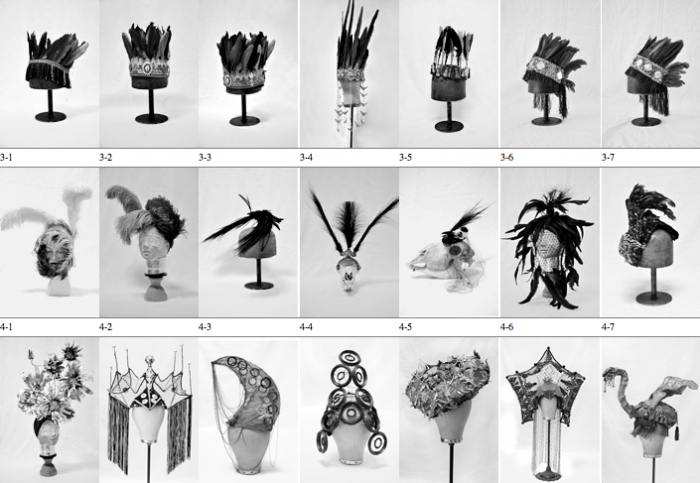
IN UTERO @ CANDY
HEAD PROP INSTALLATION BY TOMIHIRO KONO
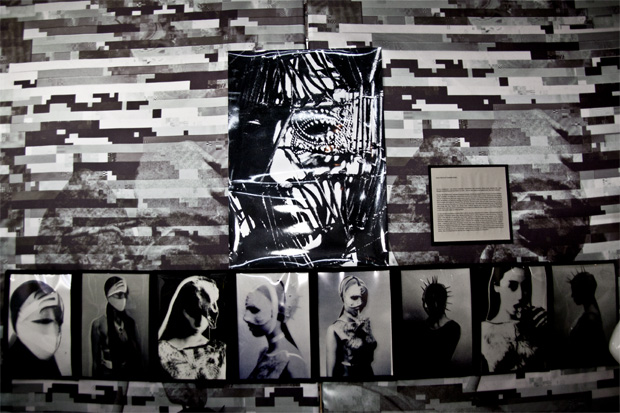 今回は渋谷気鋭のSHOP CANDYと、世界的ヘアー&プロップアーティストTomihiro Konoがコラボレーションでインスタレーションを開催。CANDY独自の感覚によるコーディネートと、Tomihiro Konoのヘアープロップは一つの新しいクリエーションとして化学反応を起こしている。ファッション→カルチャー、カルチャー→アートこの二つのベクトルが重なり合ったインスタレーションを体感していただきたい。
■今回、Tomihiro Konoさんのインスタレーションを開催された経緯は?
ロンドンで活動している知り合いのパフォーマンスアーティスト/THEO ADAMSさんのパフォーマンス講演でヘアアートを見たのがきっかけです。以前から、インターネットなどで拝見させていただいて、面白くて素晴らしいクリエイションだなと思い、どうにかこれを業界だけでなく、一般のお客様に伝え何かを感じとっていただきたいと思いました。ロンドンベースで活動している方と共通の知り合いが多く、そういった中で自然な流れで紹介していただき、日本とロンドンという遠く離れた土地ですが連絡を取り合い今回の展示まで至ったわけです。お互い今回が初対面なのですが、うちに秘めた感覚は一緒で何か通じるものがあると思いました。CANDYとしても、ヘアプロップドアーティストというTomihiro Konoさんの様な新しいジャンルの創造性は、CANDYにも通じると考えています。この展示を通し、一人でも多くの方に新しいもの、アート、クリエイションを何らかの形で感じとっていただきたいと考えています。
■2011年CANDYとしての展望は?
CANDYはUndergroundなイメージが強く、それは、一般の方から離れたものだと周りから思われがちだが、それは周りが思っているだけで、CANDYはUndergroundを意識して提案している訳ではないです。今は取り扱っている服や自分たちが行っているクリエイションを通して、よりCANDYが多くの人々とのコミュニケーションツールになったらと考えています。新たに移転したこの通りはフォーエバー21などができファッションストリートとなりうる、この通りの一つにFAKEという新しいスポットとしてFAST FASHIONとはまた違った視点、提案力で積極的にお客様との人間関係、コミュニケーションを、服やエキシビジョンを通しておこなっていき、盛り上げていきたいとおもっている。
今回は渋谷気鋭のSHOP CANDYと、世界的ヘアー&プロップアーティストTomihiro Konoがコラボレーションでインスタレーションを開催。CANDY独自の感覚によるコーディネートと、Tomihiro Konoのヘアープロップは一つの新しいクリエーションとして化学反応を起こしている。ファッション→カルチャー、カルチャー→アートこの二つのベクトルが重なり合ったインスタレーションを体感していただきたい。
■今回、Tomihiro Konoさんのインスタレーションを開催された経緯は?
ロンドンで活動している知り合いのパフォーマンスアーティスト/THEO ADAMSさんのパフォーマンス講演でヘアアートを見たのがきっかけです。以前から、インターネットなどで拝見させていただいて、面白くて素晴らしいクリエイションだなと思い、どうにかこれを業界だけでなく、一般のお客様に伝え何かを感じとっていただきたいと思いました。ロンドンベースで活動している方と共通の知り合いが多く、そういった中で自然な流れで紹介していただき、日本とロンドンという遠く離れた土地ですが連絡を取り合い今回の展示まで至ったわけです。お互い今回が初対面なのですが、うちに秘めた感覚は一緒で何か通じるものがあると思いました。CANDYとしても、ヘアプロップドアーティストというTomihiro Konoさんの様な新しいジャンルの創造性は、CANDYにも通じると考えています。この展示を通し、一人でも多くの方に新しいもの、アート、クリエイションを何らかの形で感じとっていただきたいと考えています。
■2011年CANDYとしての展望は?
CANDYはUndergroundなイメージが強く、それは、一般の方から離れたものだと周りから思われがちだが、それは周りが思っているだけで、CANDYはUndergroundを意識して提案している訳ではないです。今は取り扱っている服や自分たちが行っているクリエイションを通して、よりCANDYが多くの人々とのコミュニケーションツールになったらと考えています。新たに移転したこの通りはフォーエバー21などができファッションストリートとなりうる、この通りの一つにFAKEという新しいスポットとしてFAST FASHIONとはまた違った視点、提案力で積極的にお客様との人間関係、コミュニケーションを、服やエキシビジョンを通しておこなっていき、盛り上げていきたいとおもっている。
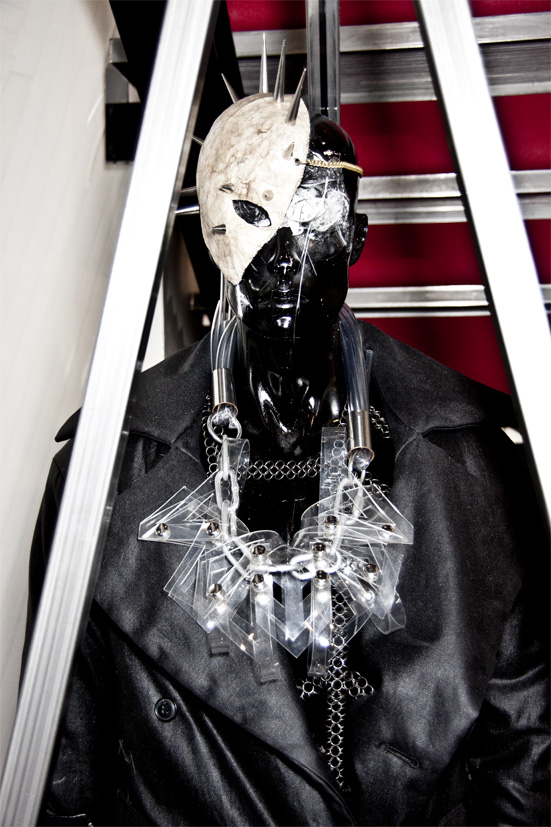 |
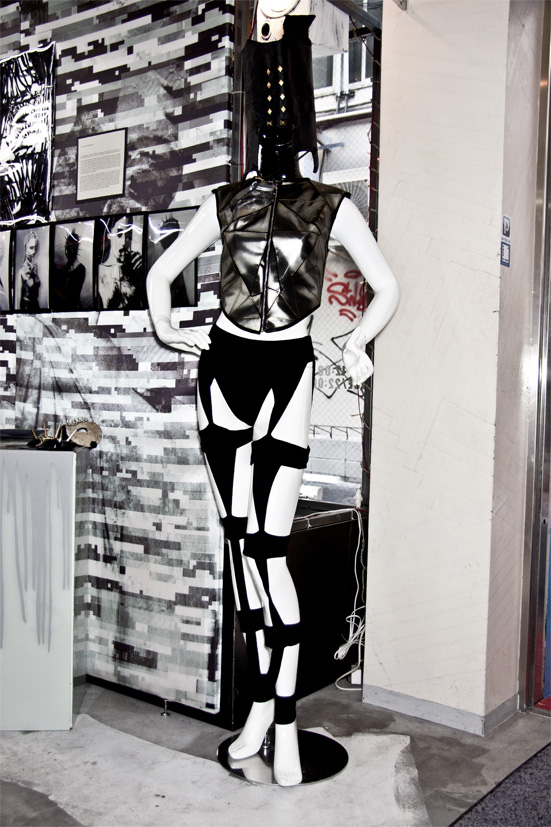 |
IN UTERO @CANDY
Adress : 東京都渋谷区宇田川町 18-4 FAKE 1F
Tel : 03-5456-9891
Web : http://www.candy-nippon.com/
OPEN : 12:00 / CLOSE : 22:00
Tomihiro Kono Interview
今回は彼のヘアアンドヘッドプロップアーティストになった背景から今現在彼自身がなにを行っているのかインタビューと作品を交えお伝えしていく。彼は今回CANDYでの「IN UTERO」というインスタレーションの為に一時ロンドンから帰国している。そんな彼に彼のクリエイションのオリジナリティーの背景、源に対して純粋な疑問と主にお話をお聞きした。
■ヘアアンドヘッドプロップアーティストとして
ある日、知人の美容院がある大阪へと向かうことを決意した河野富広。そこで美容の姿勢、美容師の厳しさなどを日々痛感する中、様々な大人と出会い、彼らに連れて行ってもらったバーやクラブ、音楽ライブ、そしてそれと連動するライフスタイルへのこだわり、ファッションやアートに触れたことで今の自分があると河野さんは語る。
その後、日本のファッション紙、ヘア雑誌や業界紙に目を通すようになり、ファッション、ビューティーの中心は東京だと直感的に感じ、ヘアカットの技術向上、追求のため東京へと活動場所を移す。
ヘアアンドヘッドプロップアーティストとして活動しようと思い立ったきっかけは自分のヘアスタイリストとしてのオリジナリティーを追求したいという純粋な思いから始まった。目にした瞬間にこれはあの人の作品だとすぐにわかるような作家性のあるヘアスタイリストに昔から憧れていたという。そしてヘアスタイリストとしての「オリジナリティー」が何かを探し求めるうちに、そのスタイルは髪の毛を超え、多様な素材を用いるようになり、その後それが自分にしかできないスタイルへと変貌を遂げる。
ヘアスタイリストの役割として、頭全体をトータルでダイレクションすることでより強い作品がつくれるということがロンドンではとても重宝された。ヘアスタイリストとして活動する際はサロンワークの延長として、当然ながらクライアントあっての仕事であるためスタイリストや写真家と話し合いながらベストなものを提供する。そして、ヘアアンドヘッドプロップというジャンルをつくることで自分からコンセプトを提案、発信を試みる。この未開拓のポジションを見つけたことでデザインすることの自由さ、楽しさを本当の意味で知ることになる。
ヘアプロップアーティストとは今まで世界に存在しなかった新しいジャンルである。自身の世界観を発表する場がないのなら自分で作ろうと、「NEON O’CLOCK]という活動を始めた。ヘアメイクに関しては第三者に仕事の依頼をされることが必要である。クライアントありきの世界で受動的な姿勢を保ち続けるのではなく、ヘアアンドプロップという自らが主体となれるジャンルを新たに作ることは、「社会」という漠然としたものに対してのアプローチの手段となった。それに加えて、髪の毛だけだは表現できないフォルムや繊細な動き。ヘア単体では表現できないものを補うという目的もそこにはあったそうだ。河野さんがデザインすることに楽しさを見いだし、不可能なものを可能にできると感じた瞬間であった。
■発表するということ
ヘアスタイリングにプロップを加えることで自らが主体になる。そしてその都度コンセプトにあわせて作品を「発表」をする。この行為自体に大きな意味があると河野さんは語る。
「発表する場所を作るということはすごく重要なこと。デザイナー、ヘアスタイリスト、様々なクリエイターとして活動している人たちに、こういうジャンルもあるんだということを知ってほしい。10代だった頃に、日本のカルチャー雑誌が自分に影響ときっかけを与えてくれたように」
仮面のようなヘッドピース、人毛かと錯覚するようなリアリティー溢れるウィッグ、羽で作った毛、冠、レースなど様々な素材を駆使して、ときには即興でヘアスタイリングを手がけるのがヘアプロップアーティストである。ハットデザイナーとは異なり、即興で撮影中その雰囲気に合わせて作り込んでいくのが主な手法だ。それゆえにあらかじめ作ったものを壊していく過程の中で生まれる儚いものであったり、シンプルがベストであればなにもしなかったり。写真の中に納められた「瞬間」をトータルで、そのバランスを大切にしながらスタイリングしている。
■ロンドンでの挑戦
「NEON O’CLOCK WORKS」 として日本で個展やアート本の出版などを続けて行くうちに海外を意識するようになったという。そして2007年。念願だったロンドンへと活動拠点を移す。ロンドンで生まれた文化や音楽、クラシックで伝統を重んじるその反面、アバンギャルドで斬新なものが共存しているロンドンは新しいことにチャレンジするのに一番適した場所だと感じる。
ヘアスタイリストとして活動していくなかで、写真家やスタイリスト,メイクが一体となって全力で妥協のない取り組みをする。その姿勢から多くを学んだという。使いたいものがないときは自分たちでヘアドレスの制作をするスタイリストと触れ合うことで、これは自分がやるべきなのではないかと真剣に感じた。
ヘアアンドヘッドプロップアーティストとして活動することがヘアスタイリングの奥深さも追求することに繋がると感じた河野さんであるが、当然のことながらすぐに仕事があったわけではない。ヘアプロップという未開拓の分野の中でどのように実績を上げていったのか。
そんな彼がヘアプロップアーティストとして本格的に注目を浴びるようになったのがアンティークのディーラー向けのマーケットでの出来事である。ヘッドピースの展示をしたところ、その新しい試みに興味をもったファッション誌、DAZED AND CONFUSEDが特集を組んでくれる事になり、その活動インタビューを受けたそうだ。渡英してから2年後の2009年のことである。
さらに驚く事に、そのマーケットには日本に住んでいたときから大ファンだったというアイスランドのシガーロスも偶然立ち寄り、 RICE BOY SLEEP という別バンドのためのアルバムのラウンチ用のインディアンをモチーフにしたヘッドピースの制作以来を受けたそうだ。
現在では雑誌VOGUE ITALIA,VOGUE RUSSIAN , DAZED AND CONFUSED, I-D、W,EXIT 等、その活躍はアート、ファッション,MUSIC,PERFORMANCE, 映画、演劇など多岐に渡る。
■コンセプトをもとに作品制作をする
現在、河野さんは「NEON O’CLOCK WORKS」という名義で渋谷にあるコアなファンを抱えるセレクトショップ「CANDY]にて、「IN UTERO」と名付けられたインスタレーションを開催している。 NEON O’CLOCKとは2005年に artist の丸山サヤカさんと結成したユニットだ。コンセプチャルなものを発表する祭には常にはパートナーの丸山さんと話し合いを重ねながら制作を進めるそうだ。
「僕はストリートから生まれるものやその背景、それが生まれた時代性にとても興味があります。その裏側にある思想や時代の空気、それをファッションという媒体を通して伝えて行きたいんです。」
「CANDYに関しては非常に東京を意識したおもしろいお店だと思いました。何よりもカルチャーを大事にしていて、ショップという集合体をひとつの空間と考えカルチャーを発信していこうという姿勢が感じられる。コンセプトを大事にするという点においてロンドンと同じですね」
CANDYのスタッフ方と話すことで気づいた事があると彼は言う。それは渋谷センター街がその立地的要素もあり、膨大なエネルギーに満ちあふれているということだ。加えて、すべてが常々進化を遂げる街、かつ特定のジャンルではなく多種多様な人が行き交う街。今までに見たこともない新しい「何か」が生まれそうな予感を感じた。
CANDYでインスタレーションを決意した目的は奇抜な作品を見てもらい、それに対する反応を見たいという一種の実験的、かつ挑戦的な試みである。足を運んでくれた人がそこにあるカルチャーに対して何を感じるか。河野富広は何よりも作品が完成するまでのプロセスを大事にするアーティストだ。なぜそれを発表したのかという背景、時代、カルチャーを正しく、明確に伝えなければならないという使命感を常に持ち続けている。
■「IN UTERO」とは
「この IN UTERO シリーズはロンドンのSOHOにある machine A というブティックのためにインスタレーション形式で発表したものです。フェティシュで攻撃的パンクなものというテーマがもとからありましたがただアイテムをつくり展示という形をとるよりはなにかコンセプトを打ち出しポツプアートのような象徴的なものを表現したかった。」
アイテムは釘で顔全体覆われたマスクや鋲などでつくられたヘッドピースと攻撃的なアイテムなばかりだが、その反面にあるナイーブで繊細な内面を表現している。マスクの質感は皮膚がただれたようなリアルで生々しい。
「IN UTERO というのは女性の子宮の中に胎児がやどったときの状態をいいます、そこには血管がはりめぐらされ、その緒は胎児の首にまきつき、あらゆる生き物は生まれる前から拘をされていて、人間としてこの世に生まれてきてもその拘束からは逃れられない。」
死に到達することではじめて拘束から解放されるという皮肉を大きなショーケースの中で表現したコンセプチュアルな作品である。グロテスクで繊細な美、得体のしれない角のはえた半魚人,壊れたガラス、なにか不完全でグロテスク、繊細で壊れそうな儚い美がそこにはある。
■母国を知るという事
「日本にいたときはヨーロッパの空気が漂う「もの」に憧れていましたが、海外で活動をしていくことで日本人であるということ。日本人にできること。これらを意識するようになりました。」
イギリスにはとても長い服飾文化がある。それを踏まえた上で新しいものを作っていこうとする姿勢は、そんな空気、クリエイションに対する本物の姿勢に向けられた羨望からくるものだ。当然のことながら東京とロンドンには根本的に文化や美意識の違いがあるが、そんな河野さん自身も、母国である「日本」に対してどこまで深く理解をしているのかを疑問に思った事があるそうだ。
「日本にいた頃、日本髪を勉強するために日本髪の先生に頼み込んで手ほどきを受けました。日本の美を知り、そしてその後ヨーロッパの空気を感じた後で生まれたのがジャパンアバンギャルド という作品です。双方の文化に触れ、感じた状態で表現したらどうなるか。ヨーロッパの世界観を考慮しつつ日本を意識するということ。和洋折衷で起きた化学反応のような現象が当時自分たちには新鮮に思えた。僕たちがビクトリアン時代やマリーアントアネットの世界観にあこがれるように、海外の目線になると芸者のもつミステリアスな部分にロマンスを感じたり。作品を発表したときにアート紙のカバーになったことでその反響が不思議なほど伝わってきた。」
■今後の展望
河野さんはファッション誌だけではなく、ときにはミュージシャンやperformance artist,映画、演劇 、ショップウィンドーのために ヘアヘッドプロップをダイレクションし制作する。又。ヘアスタイルの提案はもちろんだが、そこからもう一歩踏み込んで「女性像」を掘り下げていく。 有名雑誌の廃刊等もあり、海外と比べるとクリエイターの発表の場が少ない日本ではあるが、河野さんのように自主的に、そして誰よりも積極的にクリエイティブな活動を行うアーティストの存在は非常に大きいといえるのではないか。
「日本から発信する日本的な作品や伝統的なものに興味があります。日本で生まれた舞踏や歌舞伎,音楽や文化,ストリートで生まれるファッションだったり、日本の風土があってこその文化にとても興味があります。それらに対して自分が影響を受け、今後なにをクリエイションしていくのかという自分の反応または変化に興味があります。特に自分たちの世代のクリエーターには自ら考え、自主的になにかを始めるという大きな動きを感じます。その人たちとなにか共同でできたおもしろいだろうなとおもいます。」
活動の拠点のメインはロンドン。だがこれからは日本も活動の場として意識していく予定だという。どのような反応が起きるのか。ただそれが楽しみで仕方ない。
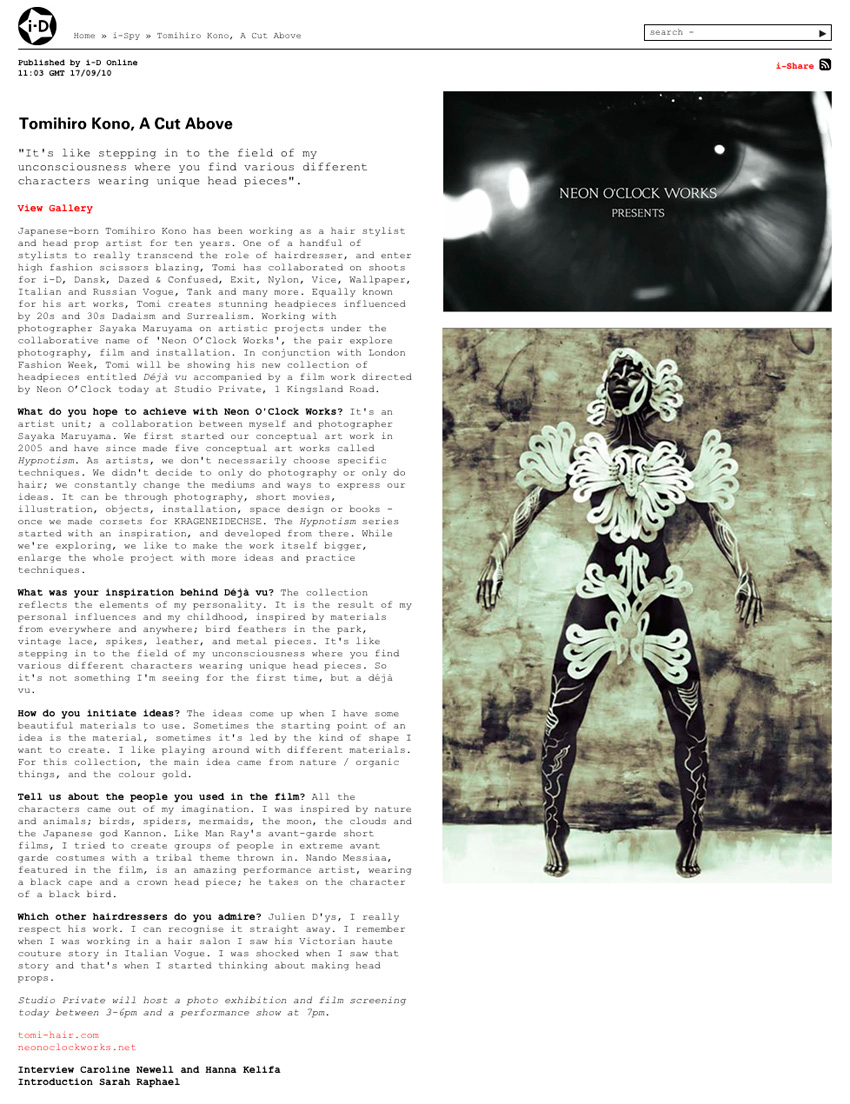
Tomihiro Kono, Meet the Designers, KM3D1 and After Dark
This week sees a series of truly unique events. Tomihiro Kono makes his first London Fashion Week appearance, Dazed & Confused begins the first in its Meet the Designers series in New York, KM3D1, a pioneering 3D fashion film featuring Kate Moss...
September 6, 2010
Headwear Artist Tomihiro Kono's Deja Vu
Inspired by nature and his own intuitions, the Japanese designer delves into memories for his new collection.
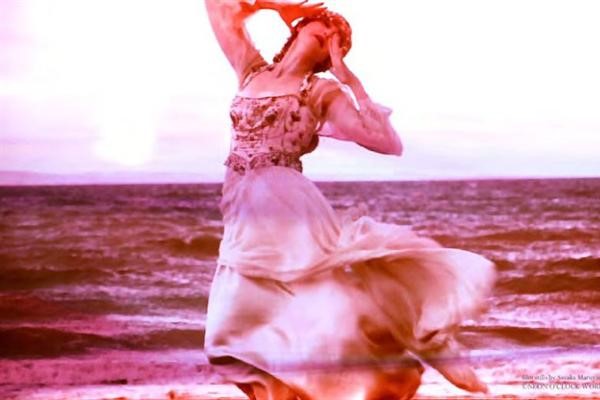
With a new collection reflecting the elements that make up his personality, head-piece designer Tomihiro Kono suggests it is a result from the influences in his life from childhood. Kono constructed the pieces from memories, without thinking too much about particular shapes or materials. Inspired by materials from everywhere and anywhere, such as bird feathers in the park, vintage lace, or spikes, leather, and metal pieces - the collection was an amalgamation of his patterns of thought and a sense of 'deja vu'.
Dazed Digital: Where did the inspirations of 'deja vu' come from?
Tomihiro Kono: By viewing this collection, we are stepping in to the field of my unconsciousness where you find various different characters wearing unique head pieces. It says that these are characters I've never seen before - but it is something based on my background, where I grew up and what I was inspired by. So it's not something I've seen for the first time either. It's just like a deja-vu. This is the strangest world ever made up from my memory and imagination. What I do as a head prop artist is the embodiment of my personality and the nature of things. So basically the theme came up last. When I stepped back and saw what I had done, I found out that it is my identity to create things like this.
DD: Who are the characters in the film?
Tomihiro Kono: These are the characters I got inspired by nature, like creatures and organic things... like birds, spiders, mermaids, the moon, clouds and an octopus, gods (Kannon in Japanese)... Like when Man Ray took a group shot of people in avant garde costumes... it's the extreme, avant garde but something tribal. They are reflecting all my background. And they are actually my friends, and friends of friends or even some people we met by chance... very special people who have their distinctive characters. I carefully selected who should be in what costume as an encounter!
DD: Was it intentional to make it somewhat sinister and eerie?
Tomihiro Kono: So my work tends to go that way somehow... I'd say what we create as Neon O'clock Works (with my partner Sayaka Maruyama) always has a darker edge in the way of observing things... and where we find beauty... there's always some darkness mixed. I like something theatrical, tribal, Victorian and contemporary... and avant garde... and beauty and darkness mixed together. So it's rather automatically, naturally rather than intentionally.
DD: What kind of reaction do you expect from an audience?
Tomihiro Kono: Any reactions we would like to expect! I'd love people to enjoy and see something different and unique in our way. It's something totally quirky and distinctive... we created and produced everything from nothing. Head pieces, costumes, films and portraits, music... everything is made up by our hands. And I really want people to see how creative we can be.
DD: Who made the music for it? What kind of music is it?
Tomihiro Kono: A friend and a music composer Christos Fanaras (aka Jack Shirt) for the short film. Cross-genre, experimental music and a mix of Western and Japanese elements. Mainly inspired by Japanese 60-70s film music. He mixes various sound and noise from everywhere... like paper rustling to radiators, etc.. some characters are actually singing in the film.
The photo exhibition runs from 20 - 21 September 2010, at 78 Luke Street London EC2A (free entry) with a performance show on the 17th at Studio Private, 1 Kingsland Road London
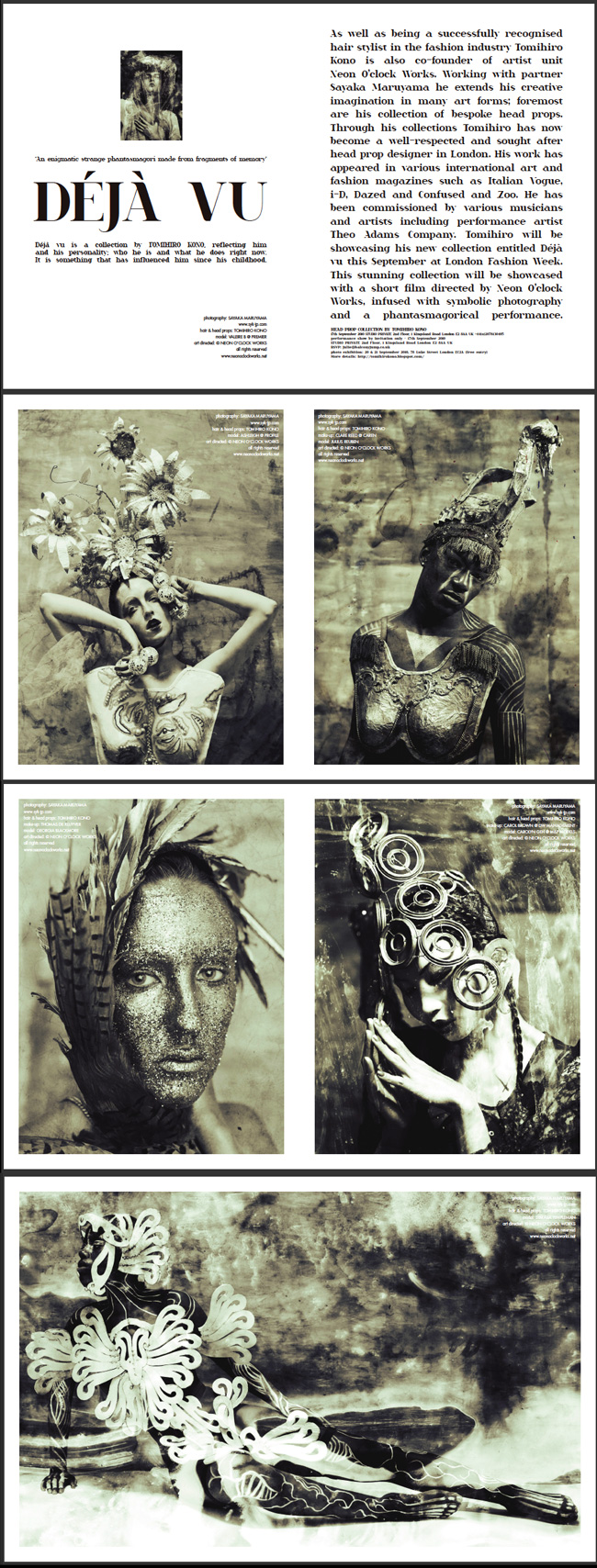
Japanese designer and artist Tomihiro Kono launches his new collection at Soho's Machine-A
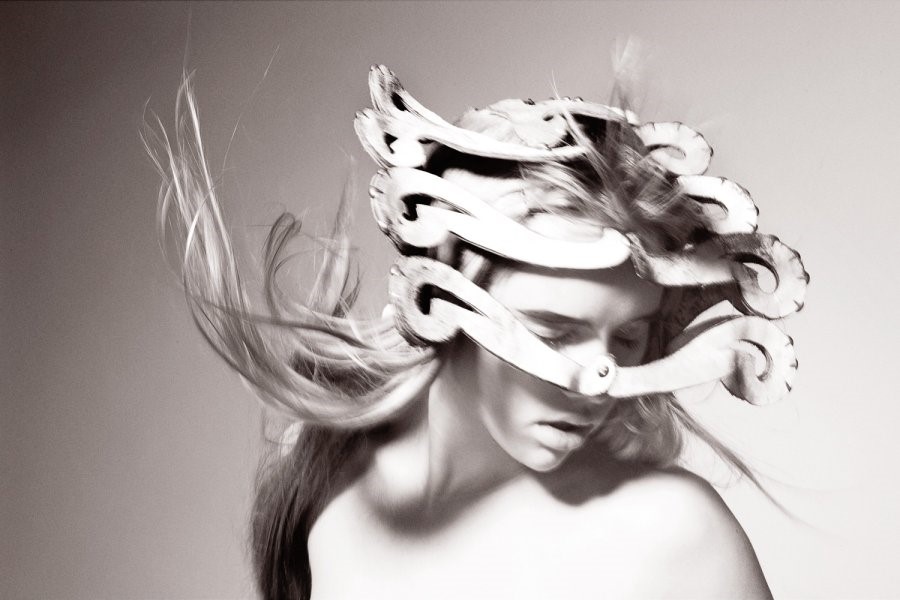
Japanese designer and head piece creator Tomihiro Kono has resided in London for three years, but he has thankfully not lost all creative ties to his native country. The artful fashion of Kono - together with his fashionable art - have made waves throughout the capital ever since Kono started exhibiting his work in a Spitalfield Market stall. This was partly because of his Japanese aesthetics and Dadaist influences. Now, Kono has upgraded his location, moved it to Soho and taken over Machine-A for an exhibition. Dazed Digital spoke to him....
Dazed Digital: Why did you choose to exhibit at Machine-A?
Tomihiro Kono: They actually found me. I knew the shop has upcoming young designers and I thought it was a good place to put my pieces. The shop's concept really suits my style. I'm not just interested in selling products but we'd like to keep doing installations and showing my pieces with concepts.
DD: What inspired your current collection?
Tomihiro Kono: These pieces are inspired from the words 'in utero'. They wanted me to do some bondage looks for the shop so the current collection is made for Machine-A. I've been researching the Machine-A style by looking at past installations and who they like to have in the boutique etc. For my headpieces I use various materials. Sometimes very romantic, tribal, punk, classical etc... I just thought something punk and hard this time, no colour, almost skin texture and spikes that look like new creatures. I want to express the process of human's birth and death in a window display.
DD: What initially attracted you to fashion?
Tomihiro Kono: What interests me about fashion is the 'mentality' of people who wear clothes... and how the clothes react to the body - physically and mentally. The act of restraining body begins when we are a foetus in our mother's body, just when we were given birth in the womb and even after we were born, we restrain our bodies by wearing clothes like tight skirts, heels and lingerie. I like the idea that humans will finally be released from all those restraints when they are dead. Nowadays it's not so common to restrain the body so much as it used to be 100 years ago, but the culture of wearing corsets, lingerie, belts and things like that. People have always been seeking beauty and been changing their style somehow to make themselves look beautiful. It might be a different approach, but I think going on a hard diet is also taken as a body restraint.
DD: And what influenced the window display?
Tomihiro Kono: For the window installation, I focused more on the mentality of humans rather than to take bondage pieces just as objects to wear for fashion. There are quite a few tiny details like the broken glass on the floor, red string spread in the window, a bloody heart, cracks on the wall and floor... each of which kind of implies my idea about the process of birth and death. So birth and death which coexist in this window can be observed by viewers in various ways... objects in reflections of broken mirrors, by the hidden relationship of two objects - body and heart / skull and cracks, etc. I think it's interesting for me to put some ideas in a not so obvious way and also for viewers to find those tiny reactions happening in the window displays which might not be seen in the first glance, but some people might stay there longer and will find something interesting to them...Also it is important for me that the whole images look beautiful and grotesque.
DD: Your collection is called 'in utero' which you say implies restrictions, but does it also create a sense of innocence or naivety that links to the foetus and child-like idea?
Tomihiro Kono: When it comes to bondage or fetish, people tend to think about more sexual pleasure, punk, its striking visuals and as a fashion style. But for my exhibition, I wanted to focus more on birth and death - in which I mean human's fragility and weakness, disappearance and endurance... that sort of something which is not visible. I take spikes as protection to hide one's weakness and to protect one's naivety. So it somehow connects to the idea of innocence or naivety as well.
DD: Why then did you feel the need to add such hard elements such as spikes? Were they intentionally to be gothic and almost punk creations?
Tomihiro Kono: My hair salon was in Harajuku in Tokyo. There are so many punk and gothic boys and girls on the street. They always dress perfectly, do proper hair and make up themselves. They are actually really good at making spiky hair themselves. I take so much inspiration from them. There is a gap between their fragile and naive mentality and the hardcore/gothic/punk fashion. I think they wear that kind of costume to protect their sensitive minds.
DD: What is it about fetish wear and leather and nails that appeals to you?
Tomihiro Kono: For this project, I used hard materials as something to protect oneself. Those, for me, are equivalent to animal's nails and tusks. It shows pain and aggressiveness.
DD: Are you based in London? Do you feel tied to the London fashion or do you feel roots to Japan?
Tomihiro Kono: I really love staying London.There are so many chance to meet creative people. I always think and express and compare cultures as a Japanese person.
DD: Are there any other Japanese artists or designers that you feel linked to?
Tomihiro Kono: Of course I really respect Rei Kawakubo. Her style and concept. Recently I really love contemporary jewellery designer Shinji Nakaba based in Japan. His work is beautiful and he uses recycle material to make pieces.
Machine-A, 60 Berwick St, London, W1F 8SU. 29 March - 17 April 2010. Closing party at 6-9pm on Friday 16th, see Tomihiro Kono for details.
Photography: Patrick Lindblom
Styling: Justine Josephs
Model: Suki at Union Models
Hair / Head pieces: Tomihiro Kono
Make: Nat Van Zee
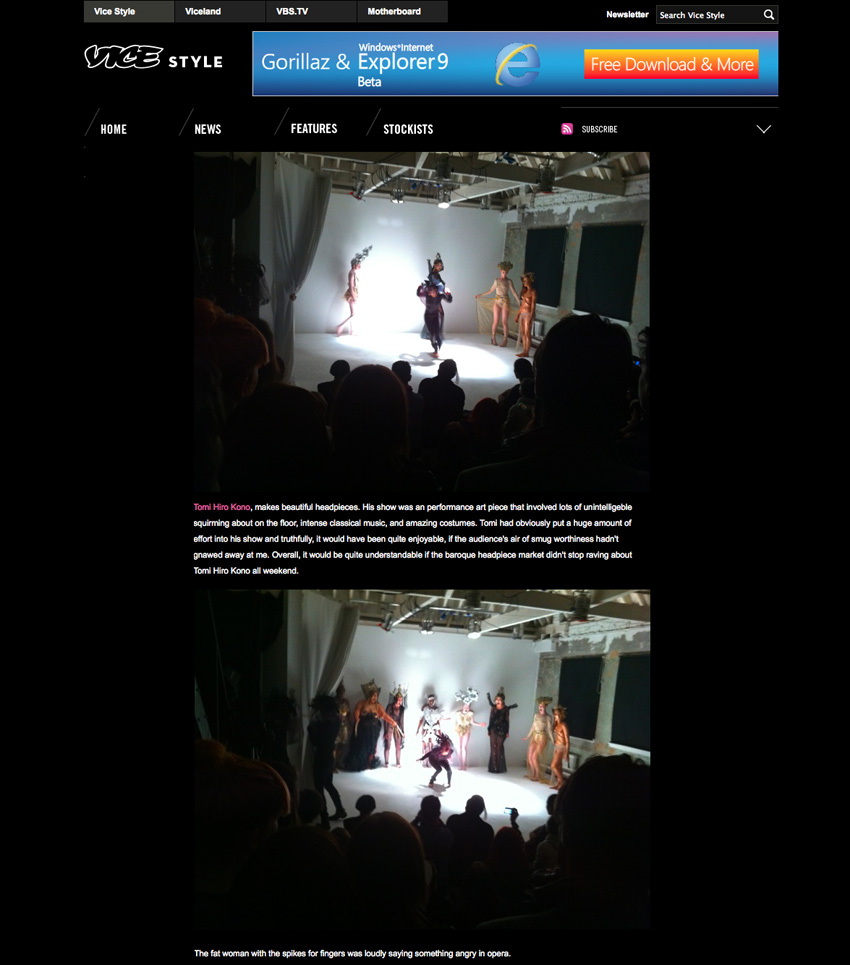



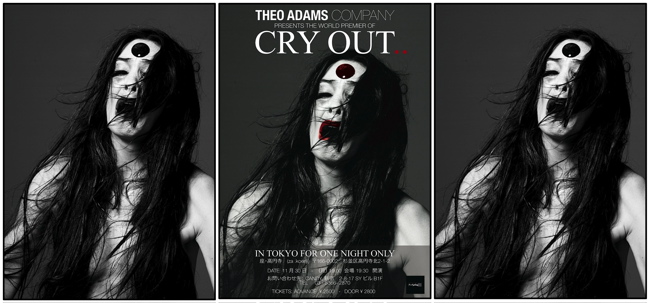 “CRY OUT” はテオ・アダムス・カンパニー(The Theo Adams Company) が 提案する新しい劇場作品。強烈なバラード、古典的なスコア、奇妙なキャバレー、そして表現派のダンスの全てにおける概念を覆した21世紀における新しい叙事詩的なパフォーマンス。
情熱が沸点に達した時、R&B ディーバ達はあなたの魂を忘却から救う為に手を伸ばし、野性的で凶暴なオーケストラは、楽天的な陶酔感から激しい絶望の淵まで動向を変える演奏でそれぞれの動きを強調し、その下できらきらと微光を放つであろう。
“In the spotlight , your tears glow like glitter.
Be a superstar in the chorus.
Step forward and Cry Out.
(Applause).”
“スポットライトの下、あなたの涙はグリッターのごとく燃える様に輝く。コーラスの中 SUPERSTAR になりなさい。一歩前に踏み出して大声で泣くのです(喝采)”
テオ・アダムス(Theo Adams) は 独学で全てを形にしてきた20歳のディレクター、パフォーマー、そして革命家である。世界的に賞賛されている写真家 David Sims と 雑誌 Wとの壮大なコラボレーションを終えたばかりの彼。そんな彼が情熱的で才能溢れるダンサー、ミュージシャン、そしてアーティストを集めて構成したカンパニーが今回新しい作品を引っ提げ、LONDONからTOKYOに更なる高い志を求めやってくる。
完全なる自費で管理され、そして自己啓発により作品制作を続ける新しいジェネレーションの異なる学際のコラボレーションはエキサイティングで芸術的でそして他とは異なるパワーを提供し続ける。
“CRY OUT” はテオ・アダムス・カンパニー(The Theo Adams Company) が 提案する新しい劇場作品。強烈なバラード、古典的なスコア、奇妙なキャバレー、そして表現派のダンスの全てにおける概念を覆した21世紀における新しい叙事詩的なパフォーマンス。
情熱が沸点に達した時、R&B ディーバ達はあなたの魂を忘却から救う為に手を伸ばし、野性的で凶暴なオーケストラは、楽天的な陶酔感から激しい絶望の淵まで動向を変える演奏でそれぞれの動きを強調し、その下できらきらと微光を放つであろう。
“In the spotlight , your tears glow like glitter.
Be a superstar in the chorus.
Step forward and Cry Out.
(Applause).”
“スポットライトの下、あなたの涙はグリッターのごとく燃える様に輝く。コーラスの中 SUPERSTAR になりなさい。一歩前に踏み出して大声で泣くのです(喝采)”
テオ・アダムス(Theo Adams) は 独学で全てを形にしてきた20歳のディレクター、パフォーマー、そして革命家である。世界的に賞賛されている写真家 David Sims と 雑誌 Wとの壮大なコラボレーションを終えたばかりの彼。そんな彼が情熱的で才能溢れるダンサー、ミュージシャン、そしてアーティストを集めて構成したカンパニーが今回新しい作品を引っ提げ、LONDONからTOKYOに更なる高い志を求めやってくる。
完全なる自費で管理され、そして自己啓発により作品制作を続ける新しいジェネレーションの異なる学際のコラボレーションはエキサイティングで芸術的でそして他とは異なるパワーを提供し続ける。
The World Premier of “CRY OUT” will take place on the 30th November 2009 at the Za Koenji Theatre in Tokyo, Japan. “Theo Adams creates a sensory spectacle with his indefinably cathartic artwork.” –Dazed&Confused “Thrilling Crowds Across the World.” – The Metro “Theo Adams and his posse of dancers, musicians and muses has taken London’s avant-garde by storm” – W Magazine “London’s most intriguing performance artist” – i-D magazine Set design: David White Projections: Matthew Stone Lighting Design: Rob Pel-Walpole Costumes: Olivia Hegarty & Pipa Greenbank Headpieces: Tomihiro Kono.
“Cry Out” は2010年を通して世界中の都市で公開される。The Theo Adams Comany は各国の都市のミュージシャン、アーティストそしてパフォーマーと共同制作をし、交流をしながらよりいっそうユニークなショーを観客に提供していく。The Theo Adams Company は アーティスト Theo Adams本人がLondonをベースとしたダンサー、ミュージシャン、そしてパフォーマーを集めたカンパニー。
座・高円寺 (ZA-KOENJI) 〒166-0002杉並区高円寺北2-1-2 DATE : 11 月 30 日(月) 19:00 会場 19:30 開演 Tickets:Advance ¥ 2500 — Door ¥ 2800 お問い合わせ先:CANDY 新宿 2-8-17 SY ビル B1F TEL 03 – 5366- 2870
www.theoadams.net
上記映像は、09年4月号のW誌にも取り上げられた若干19歳のアーティスト、Theo Adamsを中心とした「The Theo Adams Company」による物語。そんな、エキサイティングな一夜限りのパフォーマンスが体感できるのは11月30日(月)だけ。観ないと損するはず。
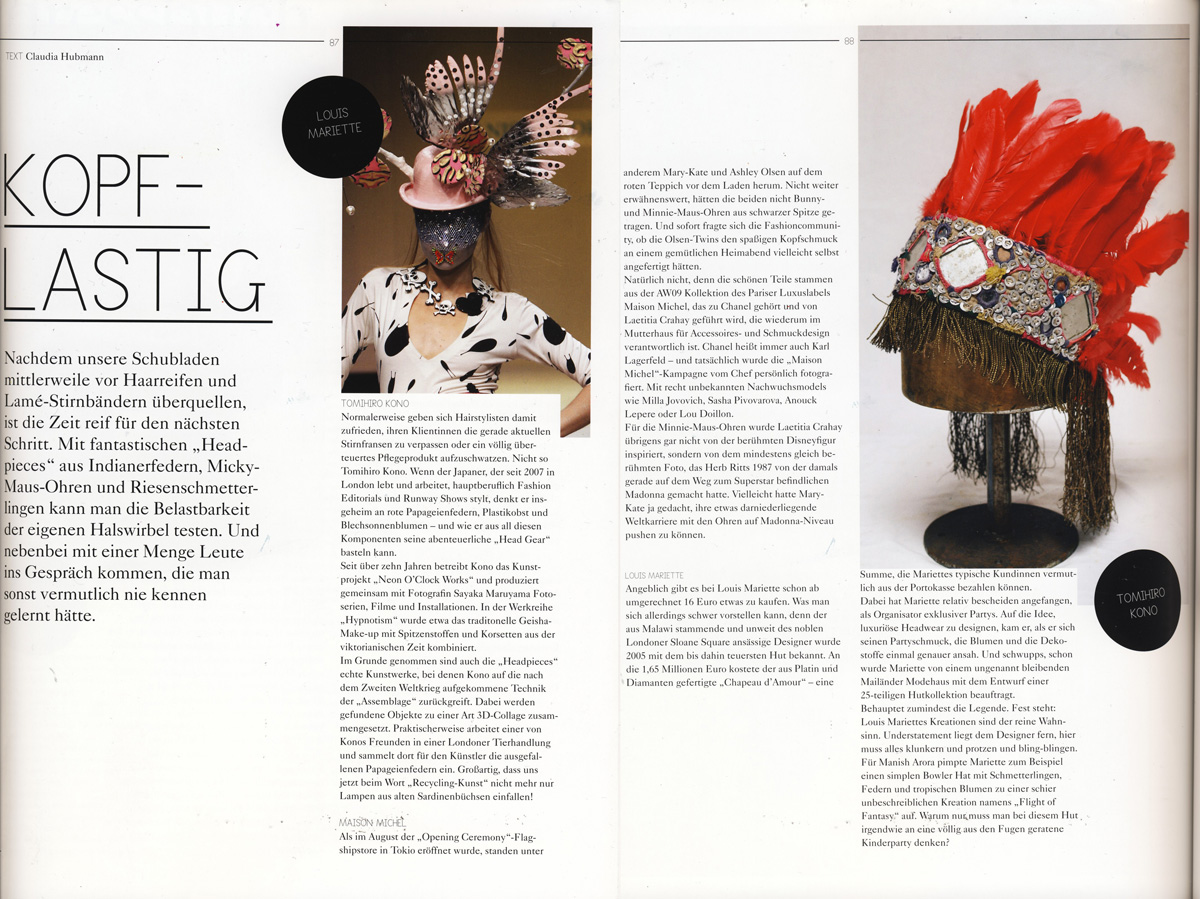
Jónsi Birgisson & Alex Somers launch their joint art and music project with a cavalcade of cowboys and cakes chez Maison Bertaux.
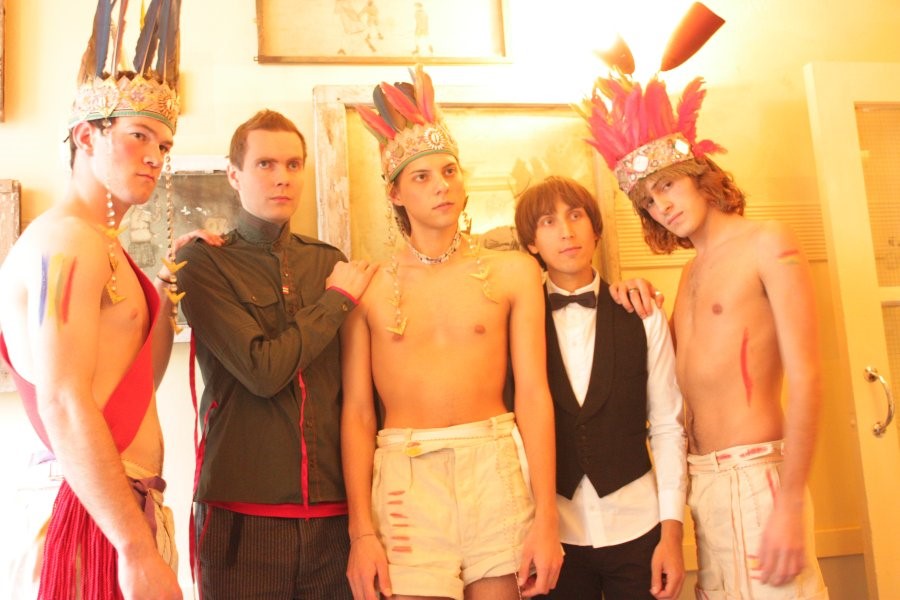
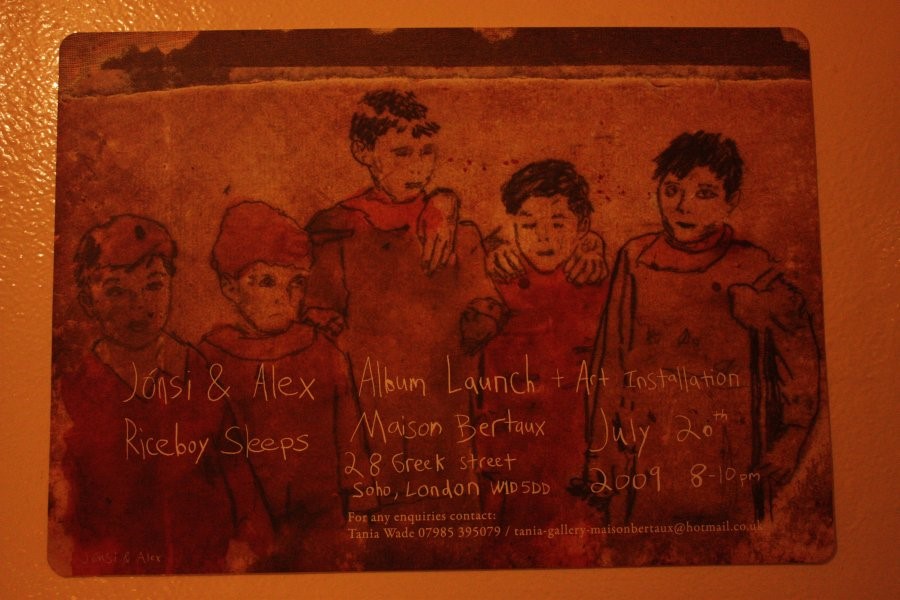
Tomihiro Kono Heads for Wonders
Hairdresser and headpiece craftsman showcased his talent for mixing the old with the new at Spitalfields last week.
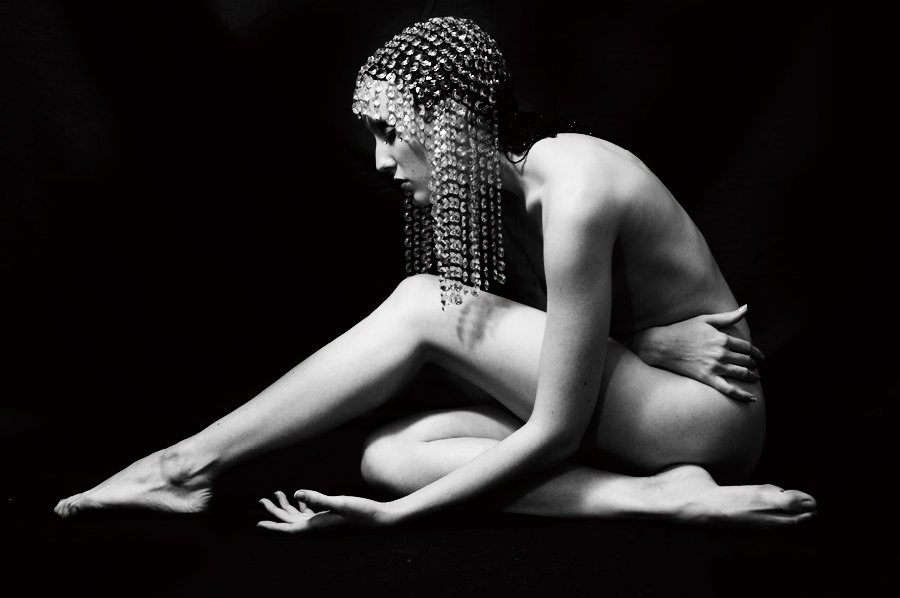
London is full of creative people – fashion designers, hat makers, music artists etc – that all work with new and polished materials, be it fabrics or melodies. But, like hair stylist Tomihiro Kono has discovered, it is when old materials mix with new that true magic happens.
Originally trained as a hair dresser at one of Tokyo’s premier saloons, Tomihoro left Japan two years ago to bring his creative empire to London. And it’s not actually far from an empire; except for the hair styling and making of headpieces, Tomihiro creates photographic art (exhibitions, books etc) with partner Sayaka Maruyama under their Neon O’clock Works moniker, and he also churns out hair styling concepts for fashion shoots and magazine editorials.
The other day Tomihiro took his hats, props and wigs down to East London’s Spitalfields market – not to sell them (although many people offered money) - but merely to show us what can be done with a bit of junk from the street, some wire and lots of imagination. Afterwards Dazed Digital sat him down for a tea break at the nearby Coffee Market House.
Dazed Digital: Where do you find material for the hairpieces?
Tomihiro Kono: Mostly from markets and on the streets. Or from friends – I have one who works in a pet shop and every other month he gives me parrot feathers that he has collected!
DD: How would you describe your style?
Tomihiro Kono: I love vintage fabrics, but I want my designs to be more contemporary. I mix old and new, that’s my style!
DD: How come you are exhibiting in a Spitalfields market stall?
Tomihiro Kono: Well, I’m not here to sell my stuff – more to show it so I can find fashion designers and other creative people to collaborate with. But antique dealers seem to like my stuff – many have asked to buy pieces. And earlier on Jónsi Birgersson, the singer in Sigur Rós, came by and wanted to use hats for a video!
DD: Which exhibited piece is your personal favourite?
Tomihiro Kono: The chandelier crystals, because it’s a quite simple idea, but I've never seen something similar to this before. It reflects light and looks great in pictures. It's all hand-stitched on one by one!
DD: What other hair stylists and hat designers do you admire?
Tomihiro Kono: I really like Juien Dys and Kamo Katsuya, who works a lot with Comme des Garcons, Junya Watanabe and Undercover. It’s all about creating concepts and doing hairpieces and styling together. One person doing both – that’s how I work as well. I create concepts and packages!
DD: What’s your preferred material to work with?
Tomihiro Kono: I really like wire because I can make and control the shape of the hat.
DD: Generally, what inspires you?
Tomihiro Kono: Antique objects and old portrait pictures I find in markets or on the street. Dadaism and Surrealism from the 1920’s and 30’s, which was an amazing era. After World War II there was a movement called Assemblage that I find very interesting. They made three-dimensional artistic compositions, put together from different objects.
DD: Did it help having been a hairdresser for 10 years?
Tomihiro Kono: Yes definitely, because learnt about head shapes and techniques to work with hair.
DD: You also worked with traditional Japanese Geisha styles in Japan!
Tomihiro Kono: Yes, that experience was actually impressive because my teacher used any commodities and materials around him to make his own hair-styling tools. I found the process very inventive and primitive and I thought I could do something similar, which was head wear making for me. So I'm quite different from milliners in terms of flexibility on the shoot - I can change and arrange styles either with my head wears or without, depending on what the team wants.
DD: You have also worked with performer Theo Adams – how was that?
Tomihiro Kono: It was great, he’s an incredible performance artist. I contacted him and he understood my ideas and concept, so now all dancers in his show wear my hats. His shows are very contemporary and it’s difficult to find dancers like him - most others are classical and not so avant garde.
DD: You have lived in London for two years – how does the UK compare with Tokyo?
Tomihiro Kono: I like London, it’s easier to create here. I was very stressed in Japan. But I also like Paris – it’s all about decadence and classical beauty there! London is more contemporary, which I like.
DD: What else are you working on?
Tomihiro Kono: I would love to find a designer to collaborate with for London Fashion Week, but until then I have two London exhibitions coming up – one off Oxford Street and one in a book shop on Charing Cross Road. And early next year I’m doing a short film for a show in Dubai!
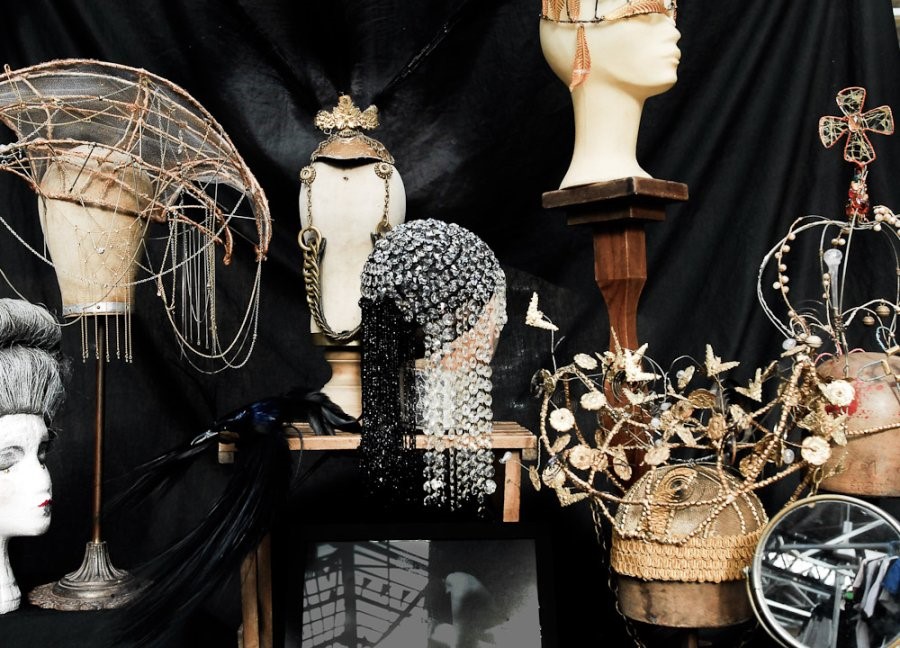
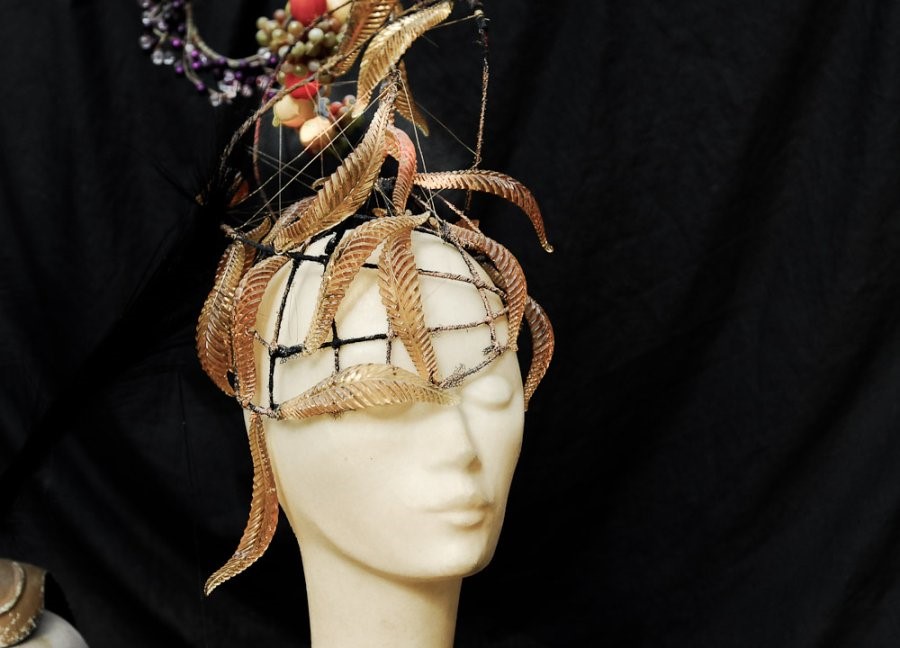
EYEMAZING Cover + article
Neon O'clock Works
